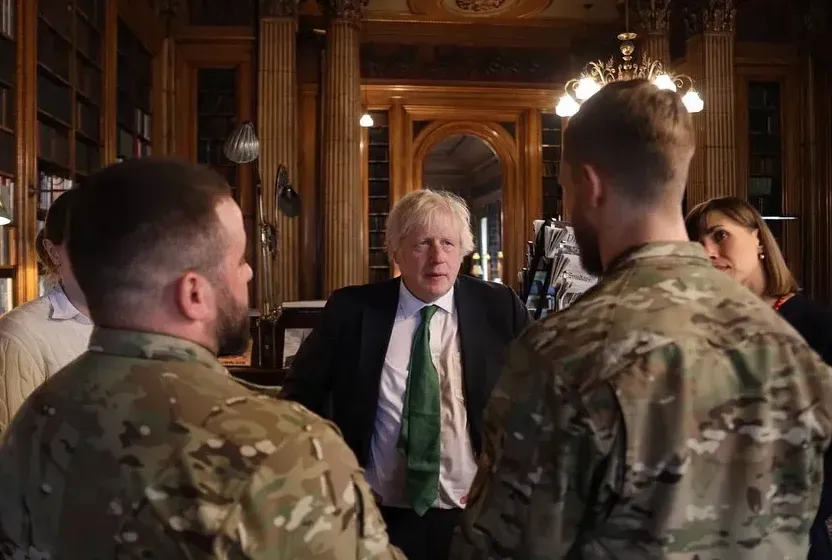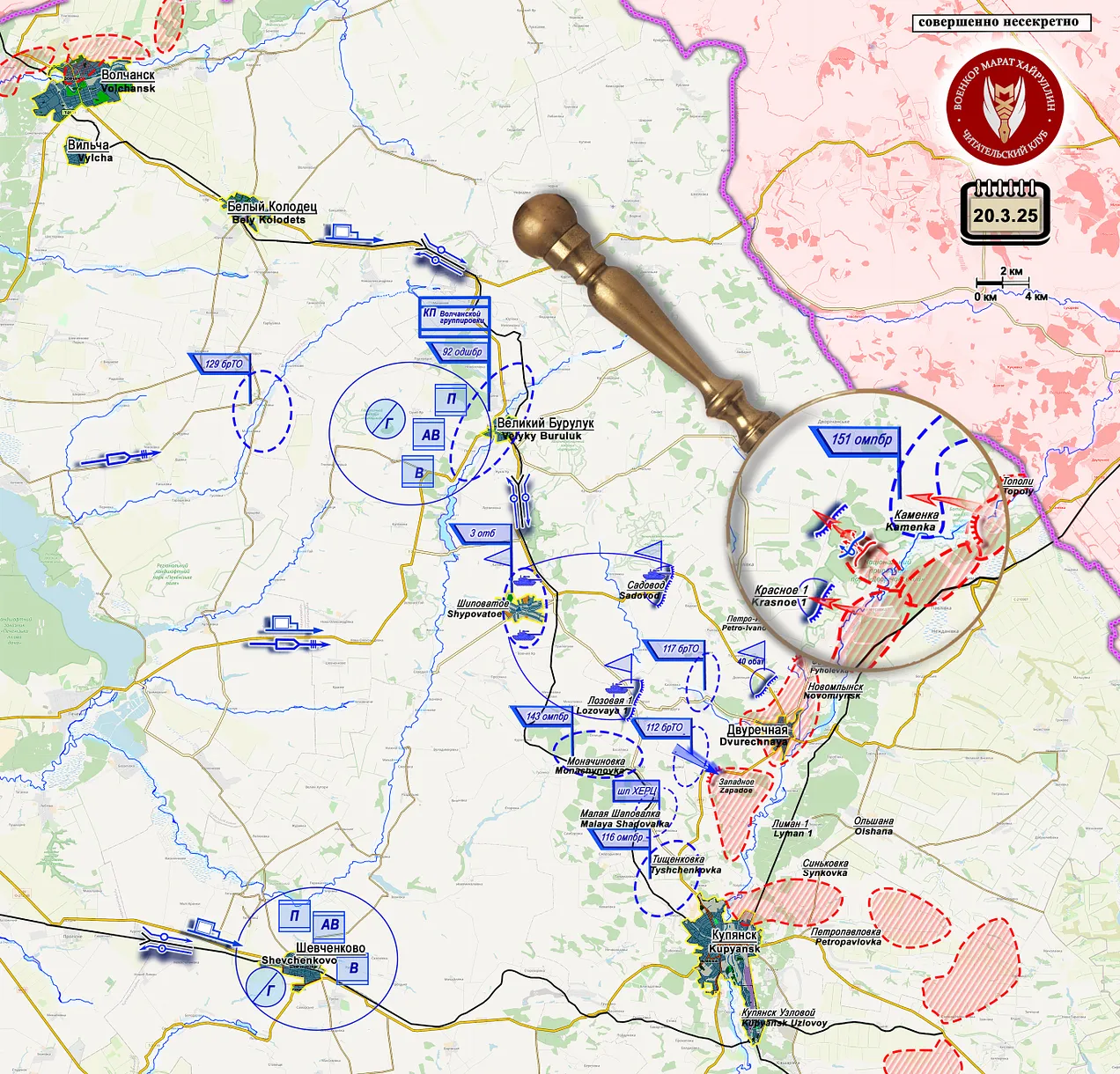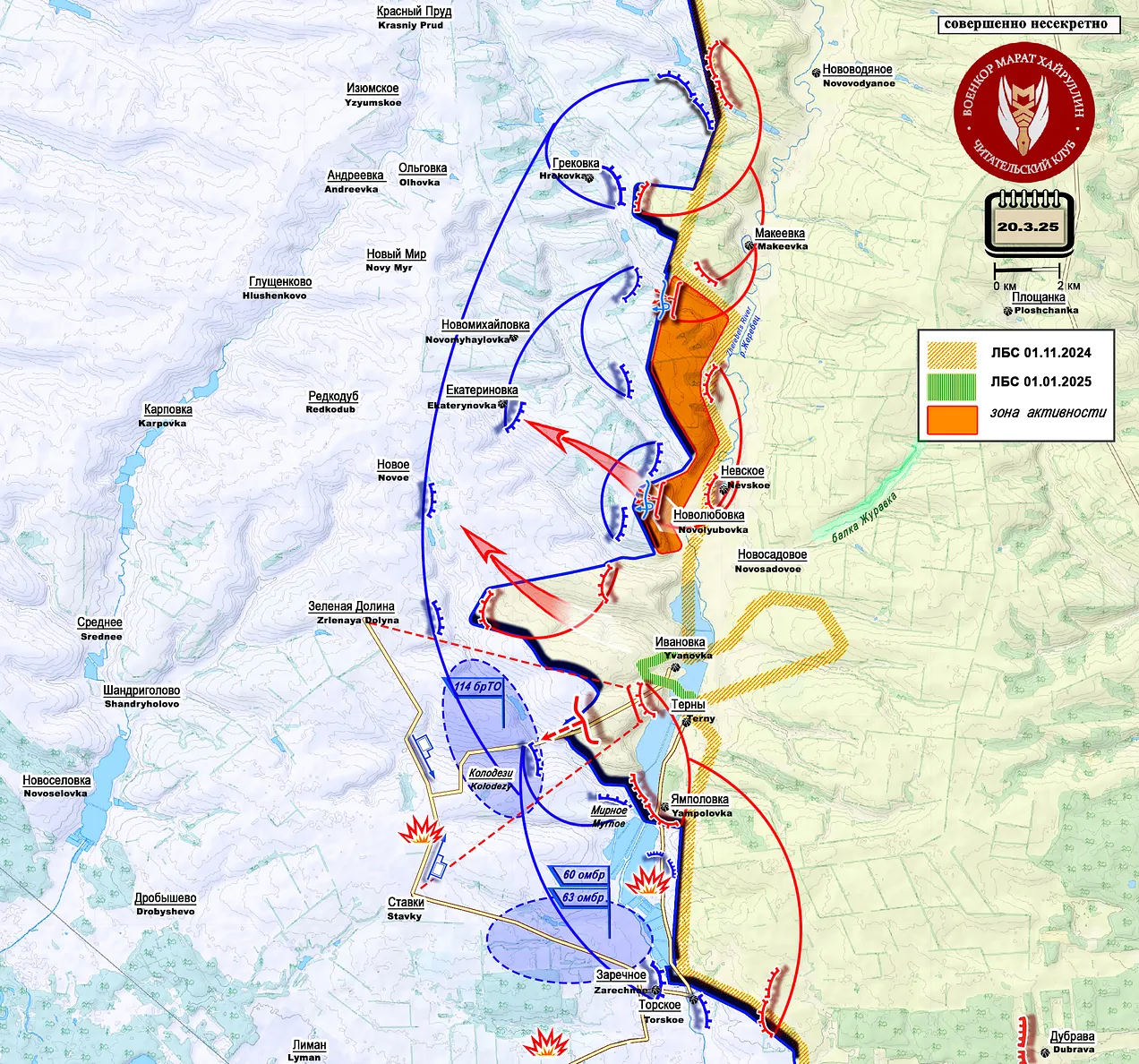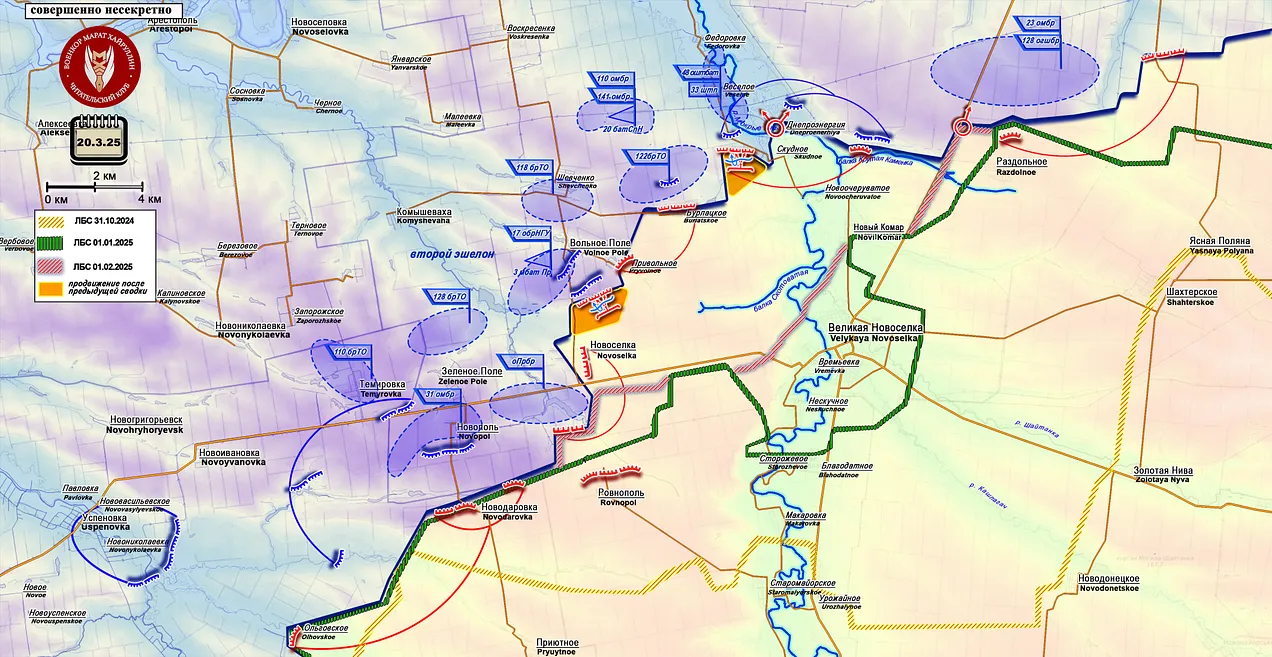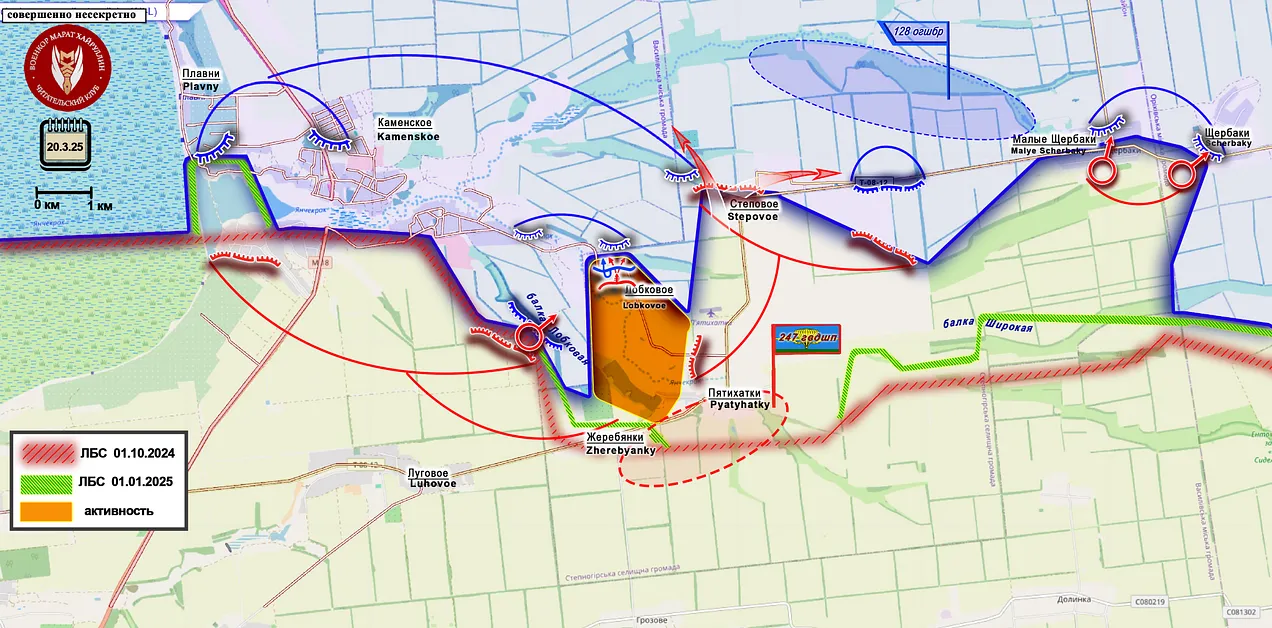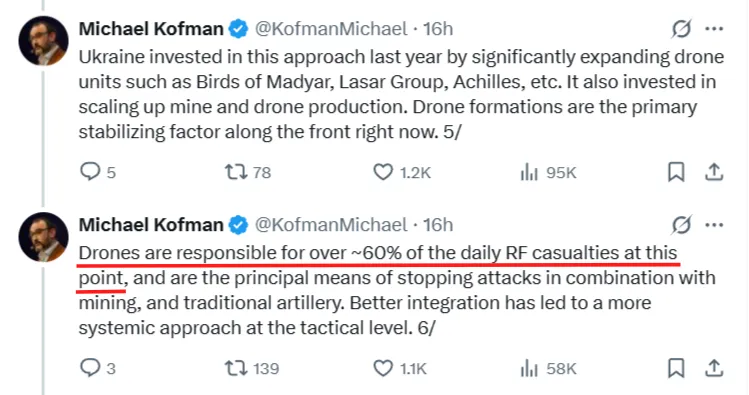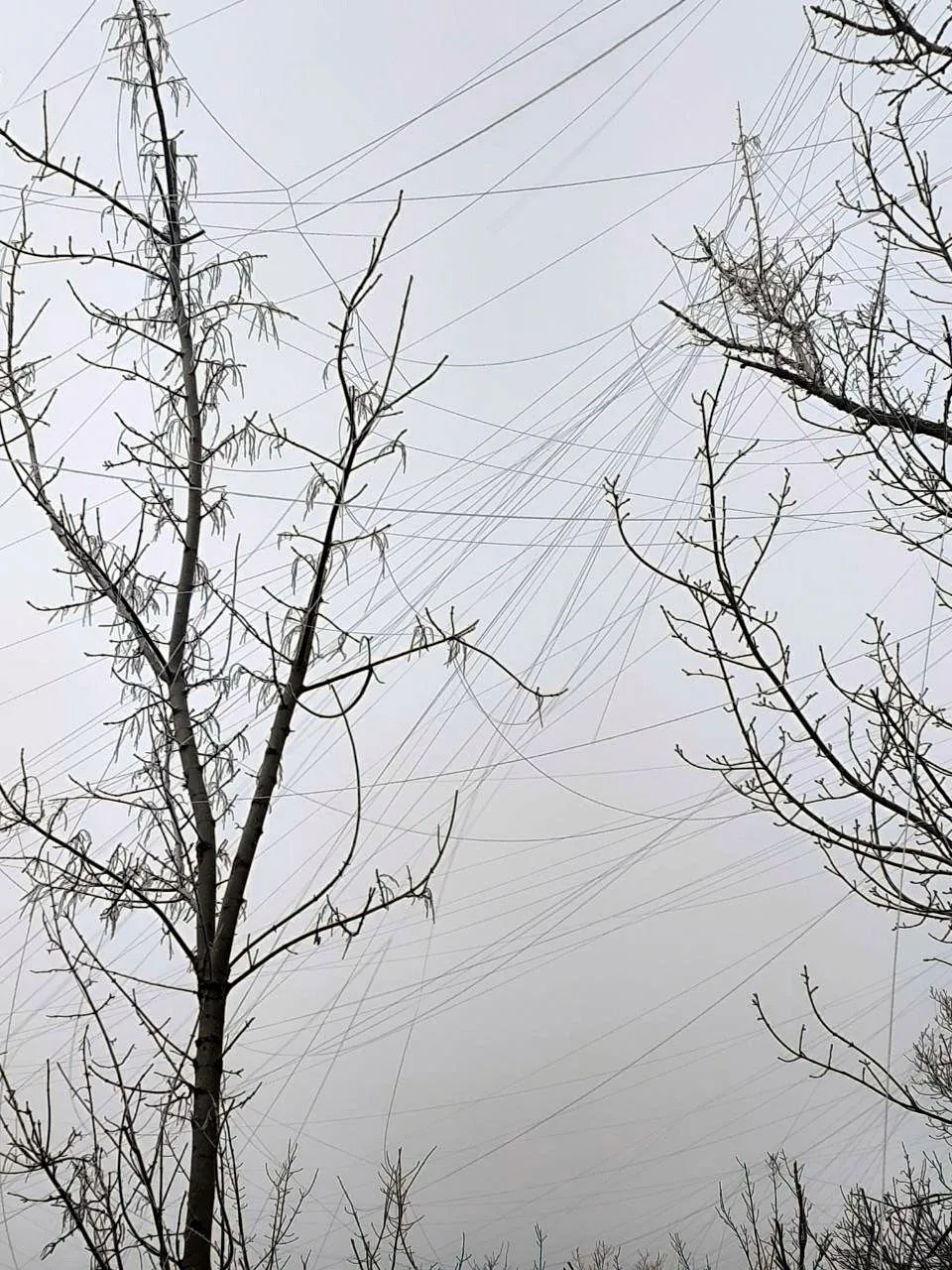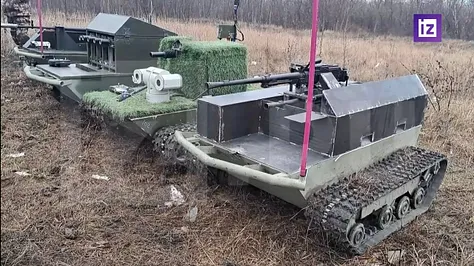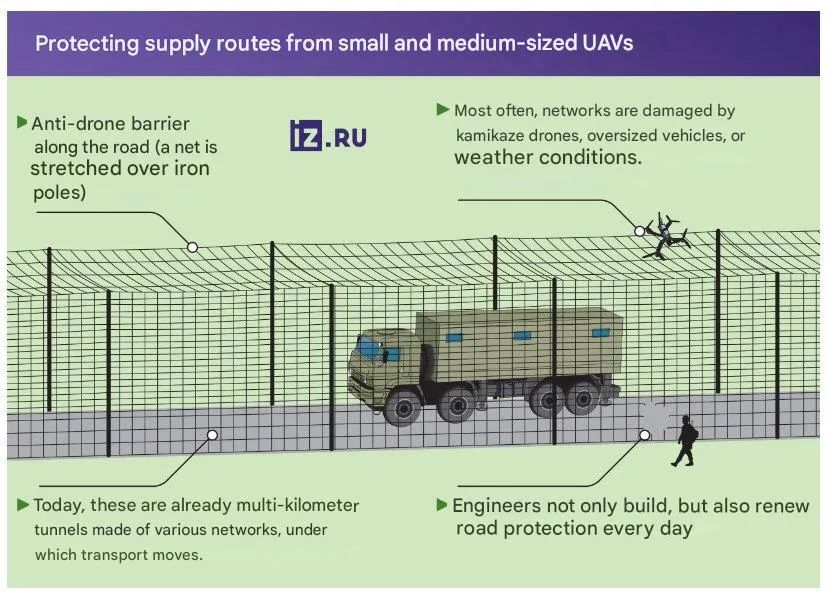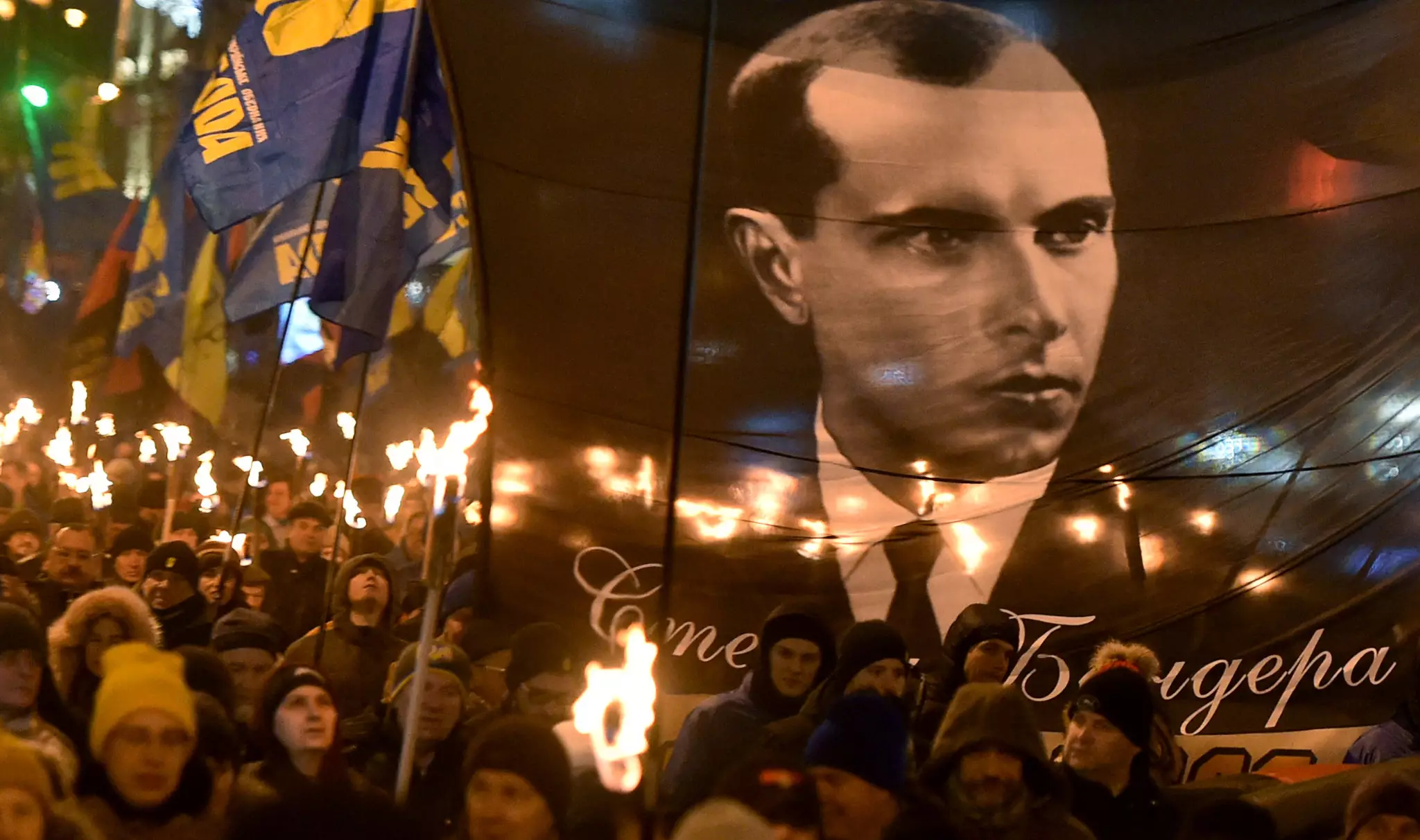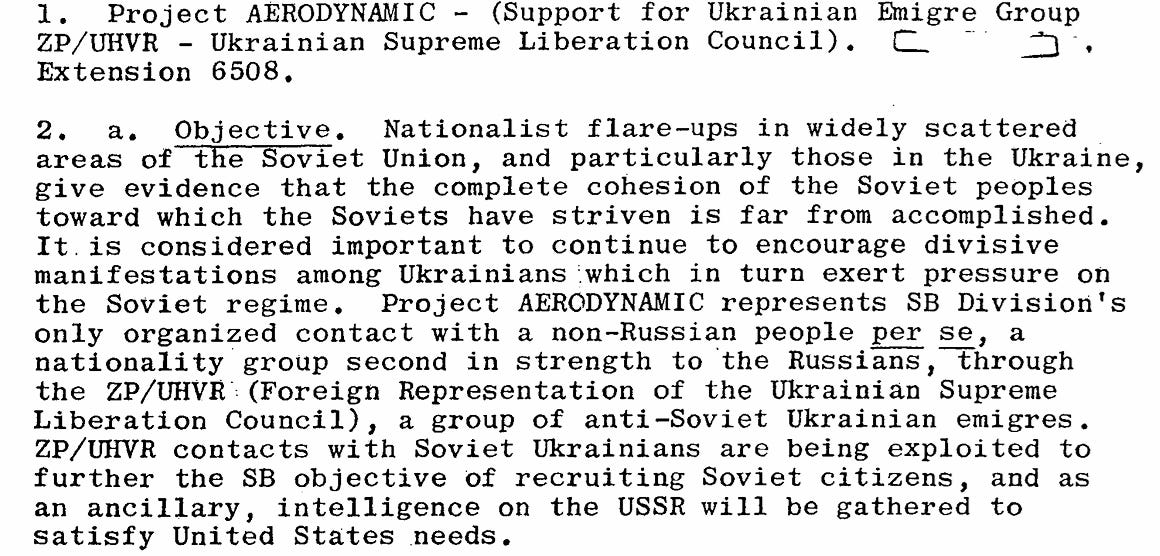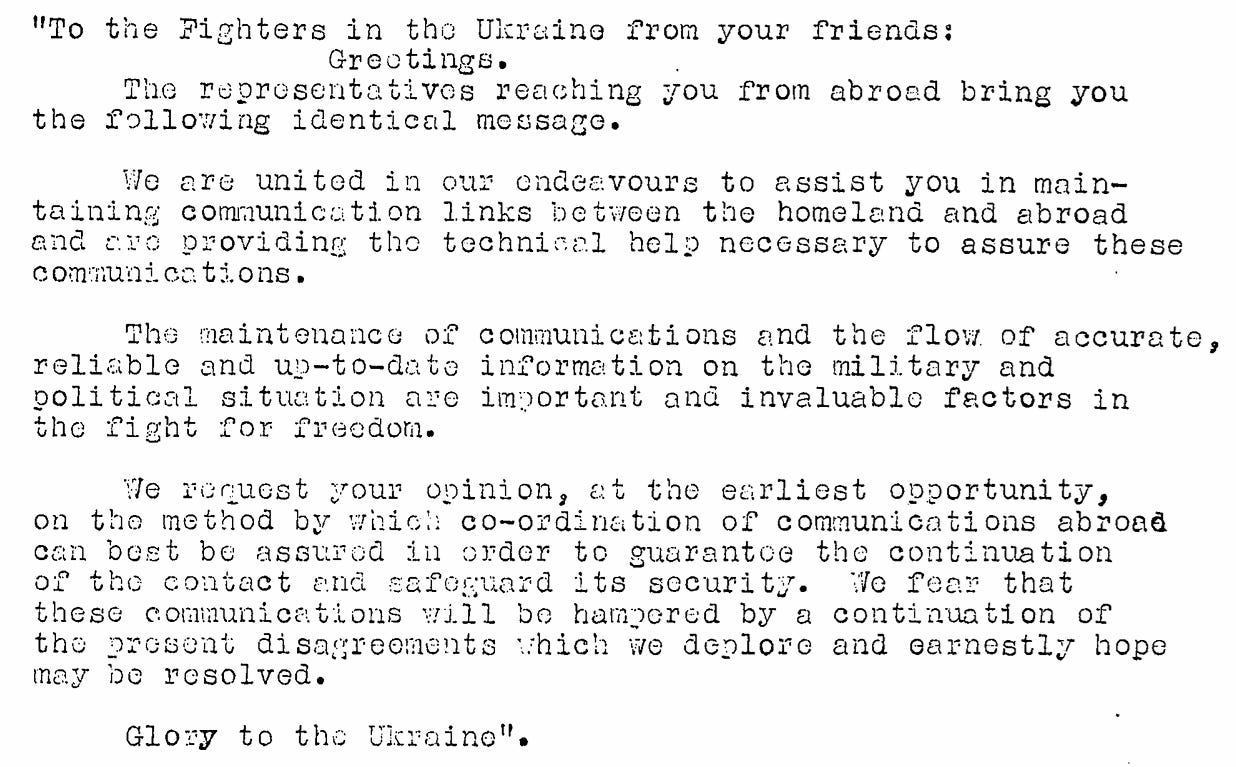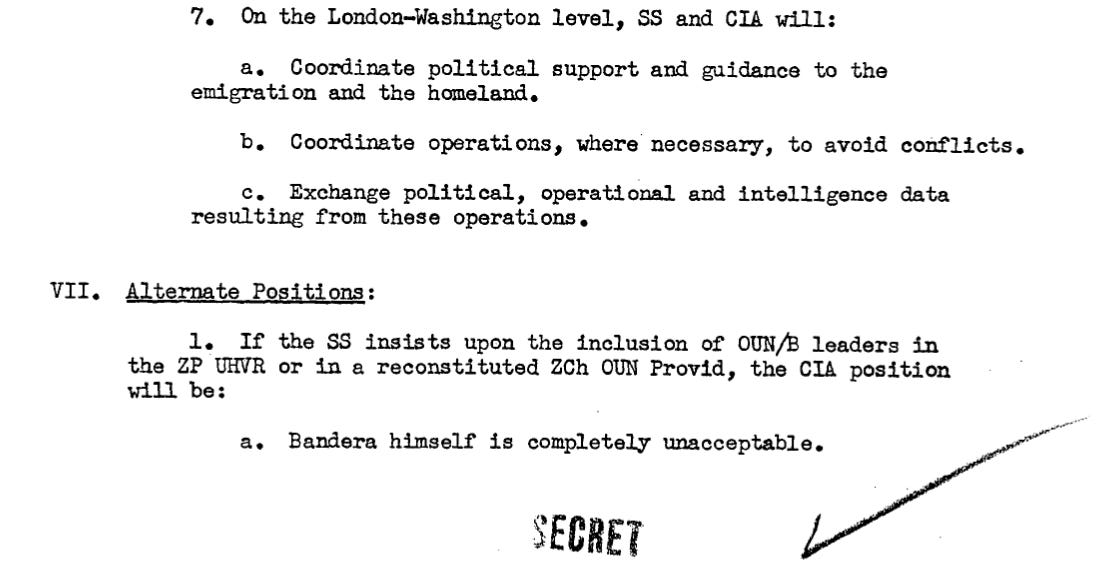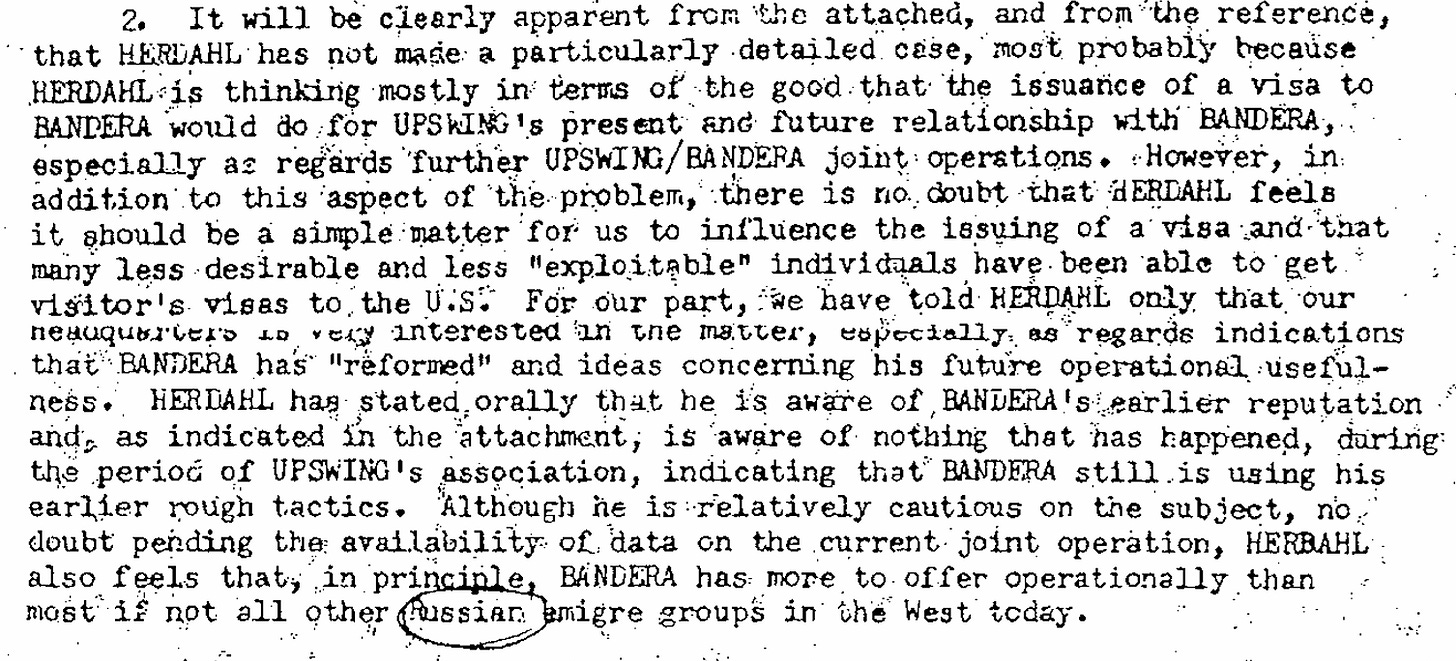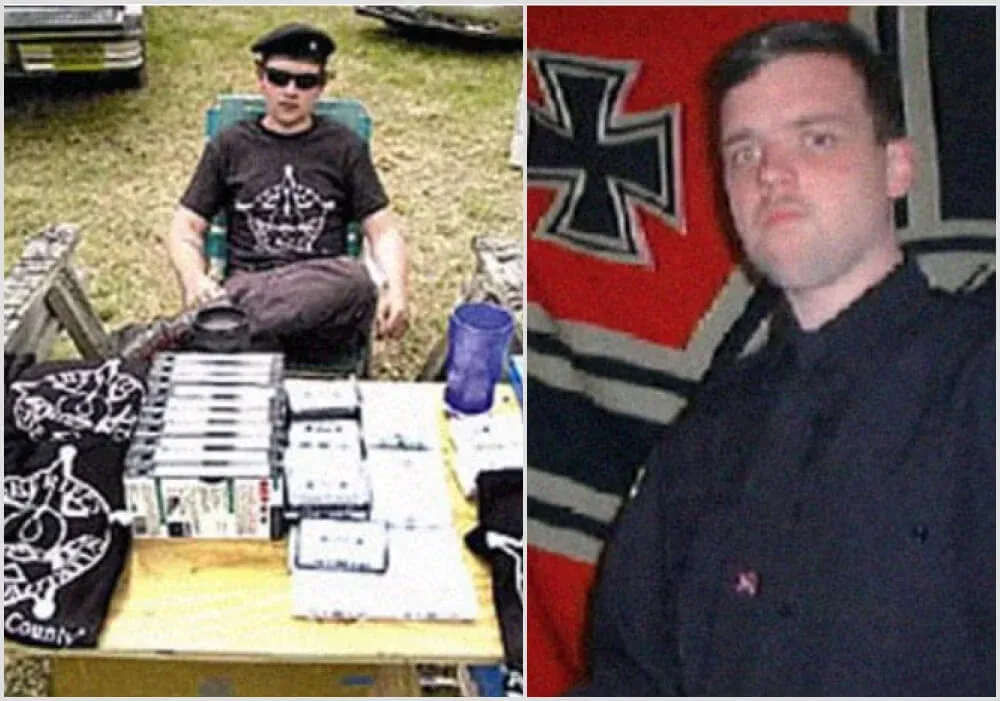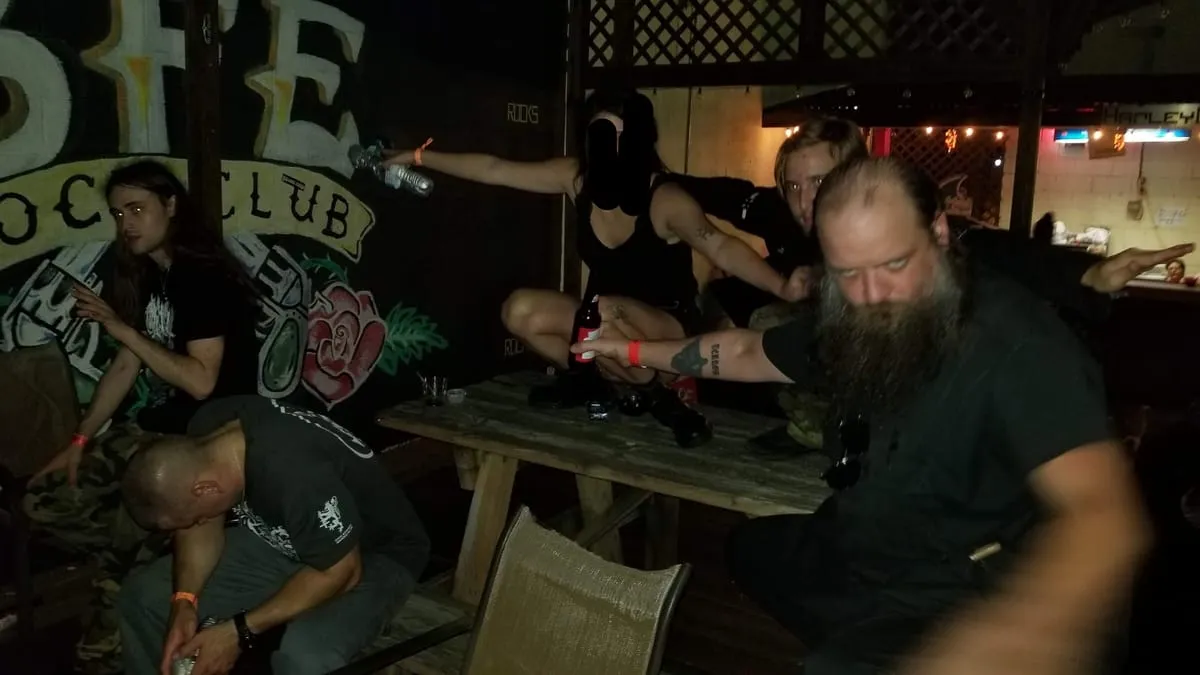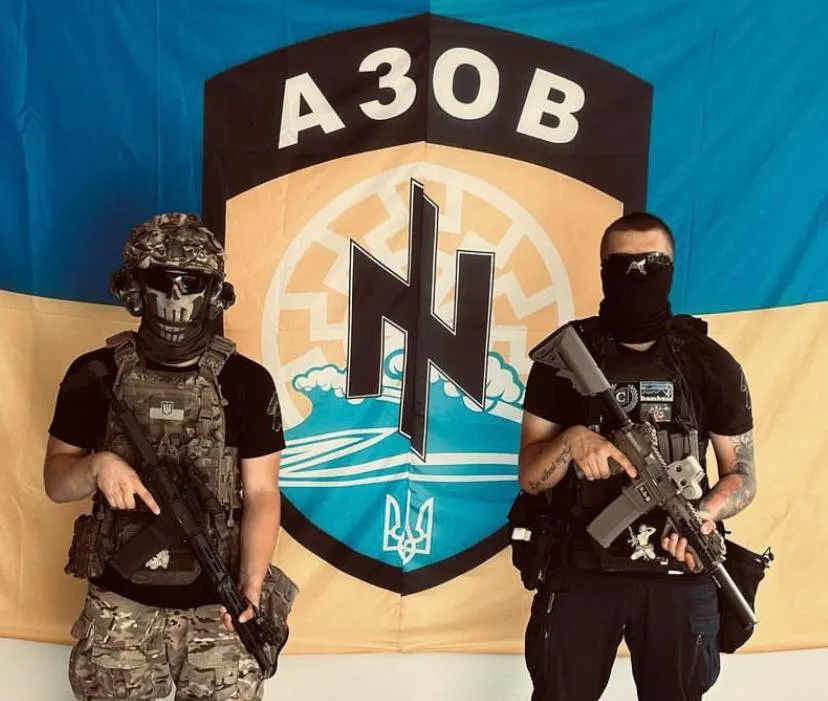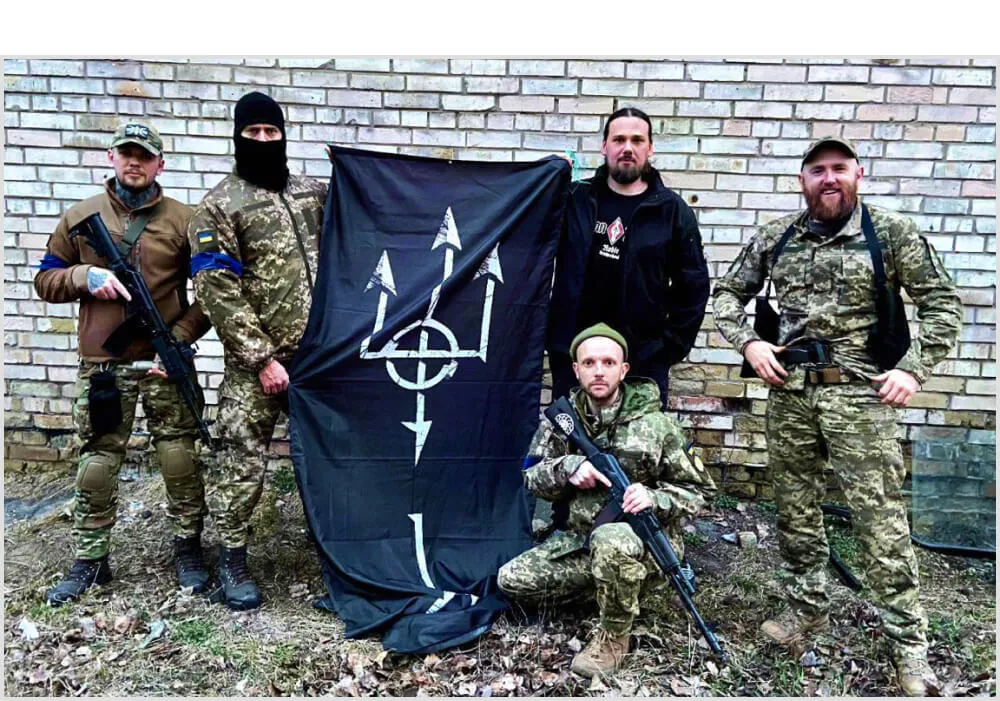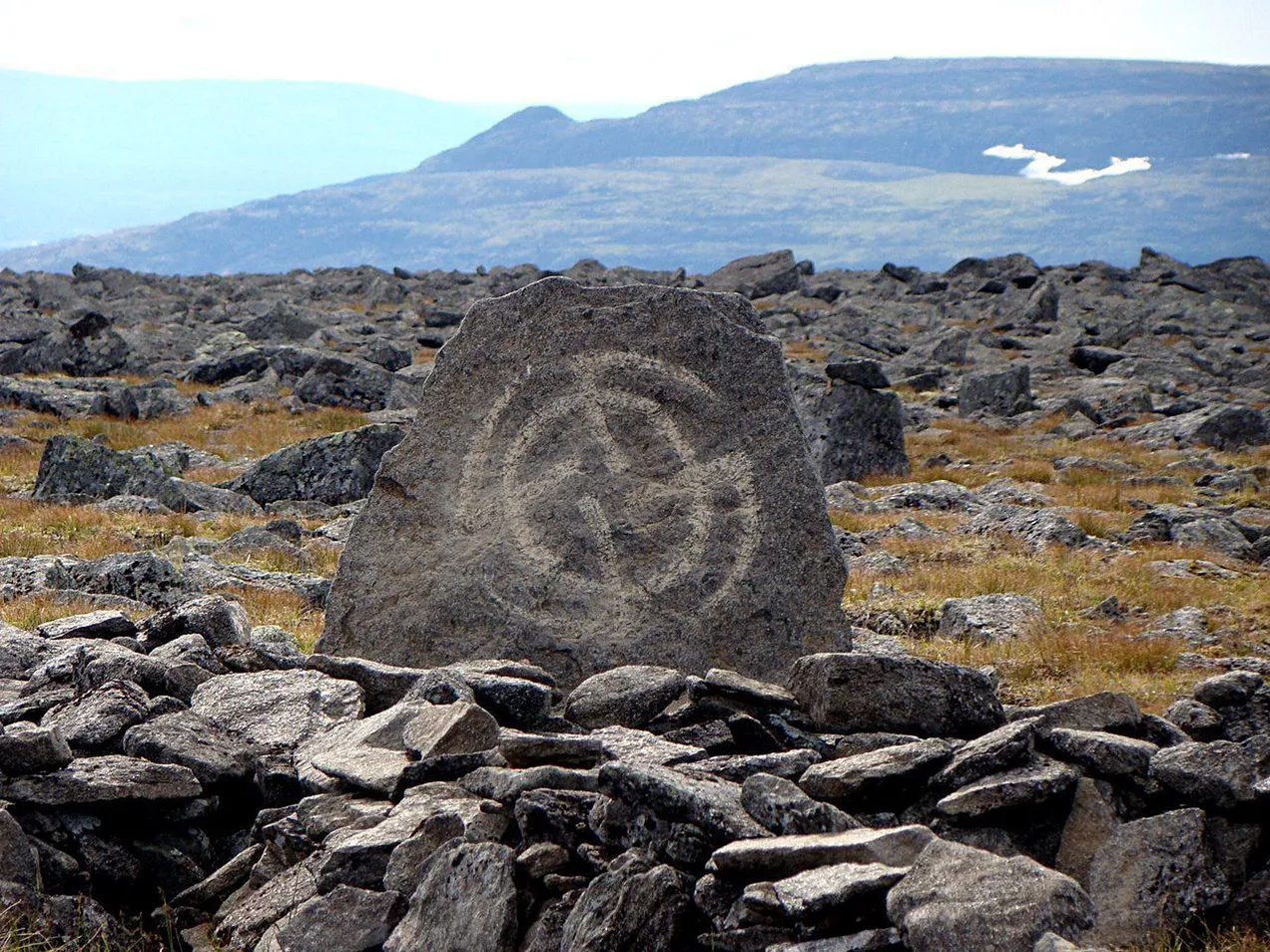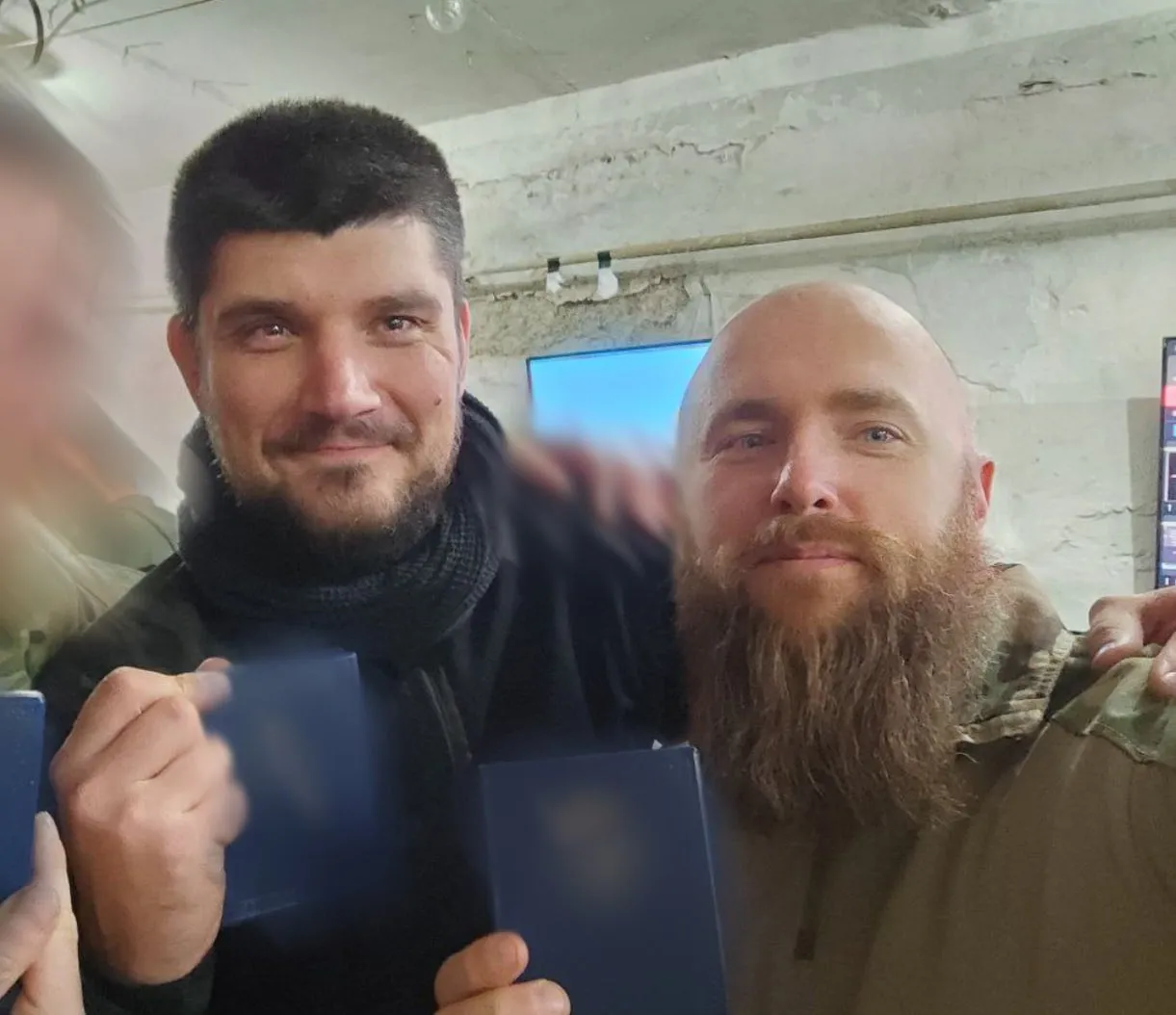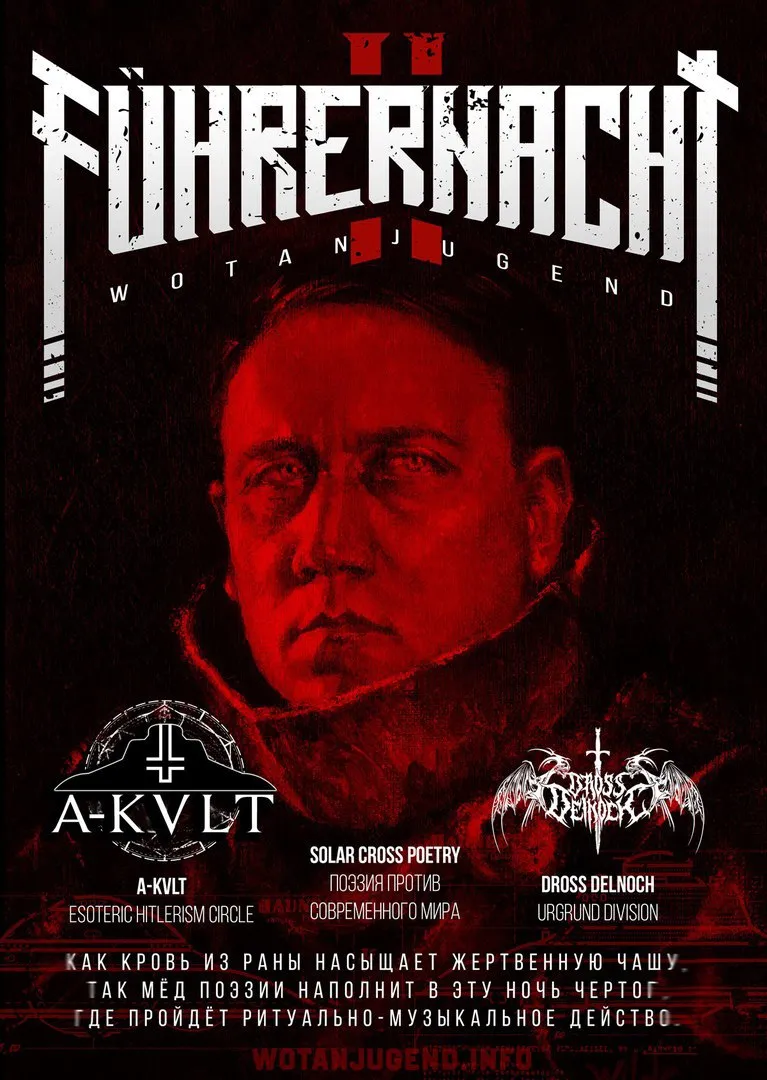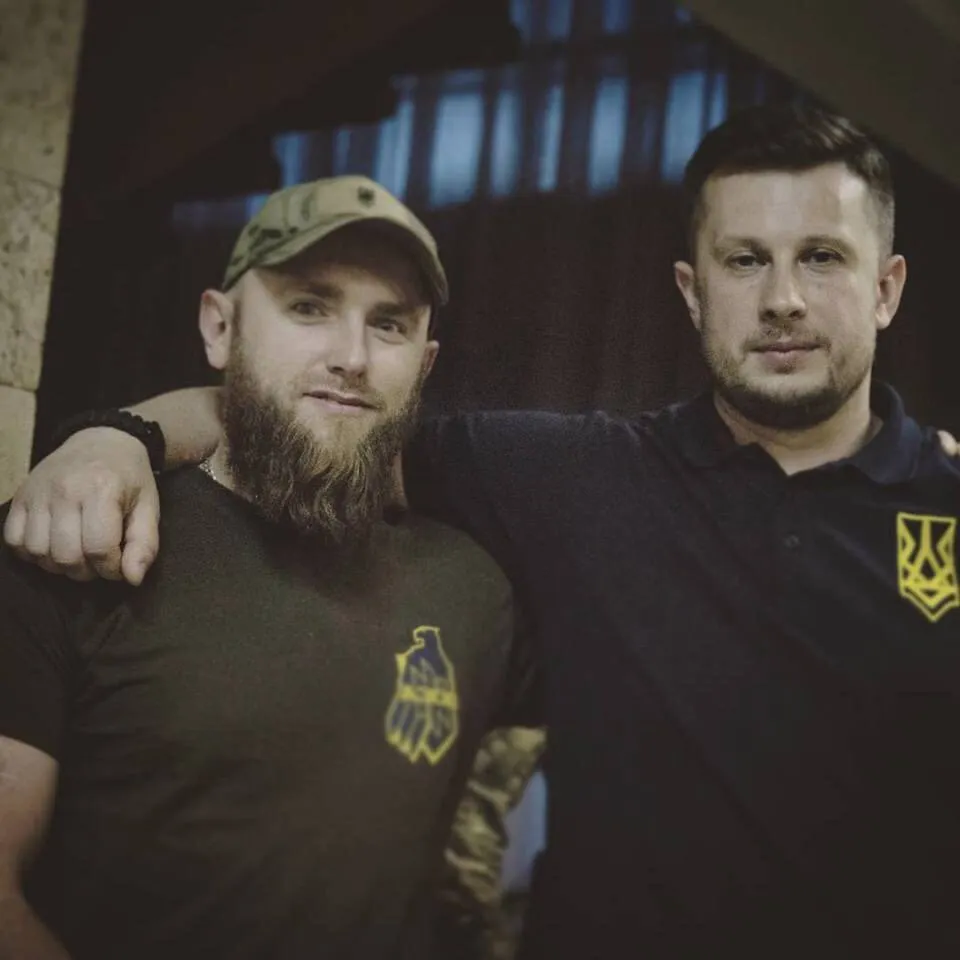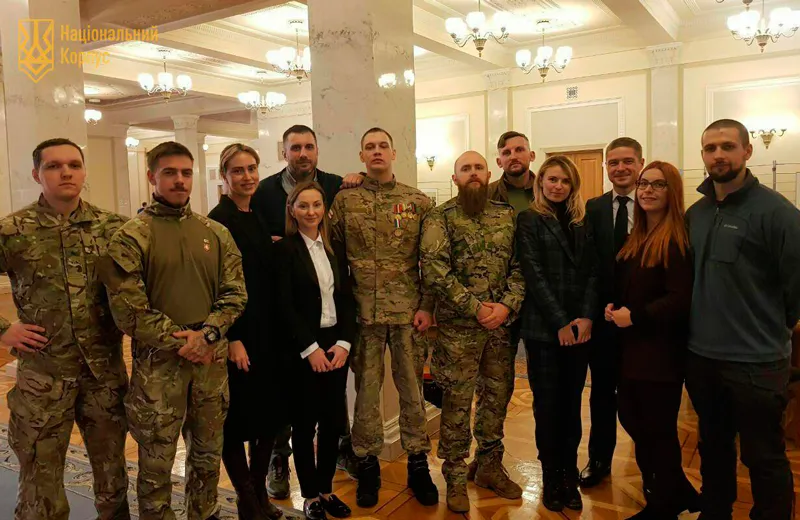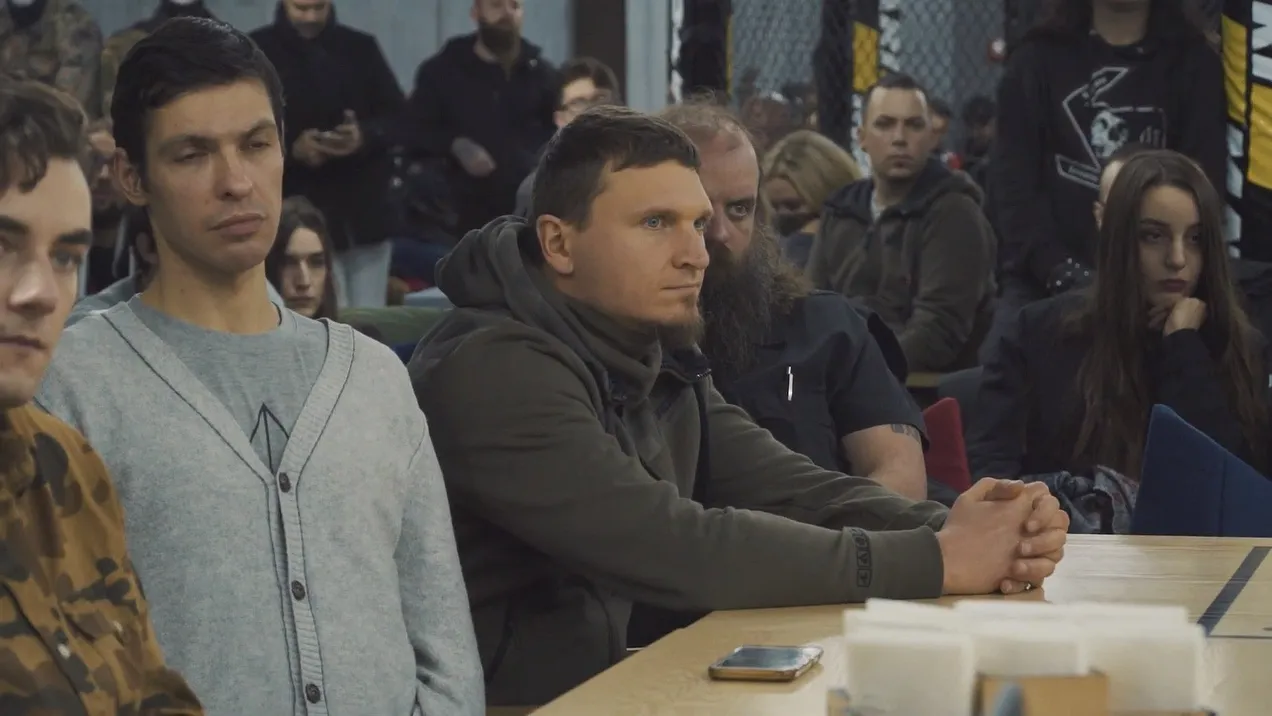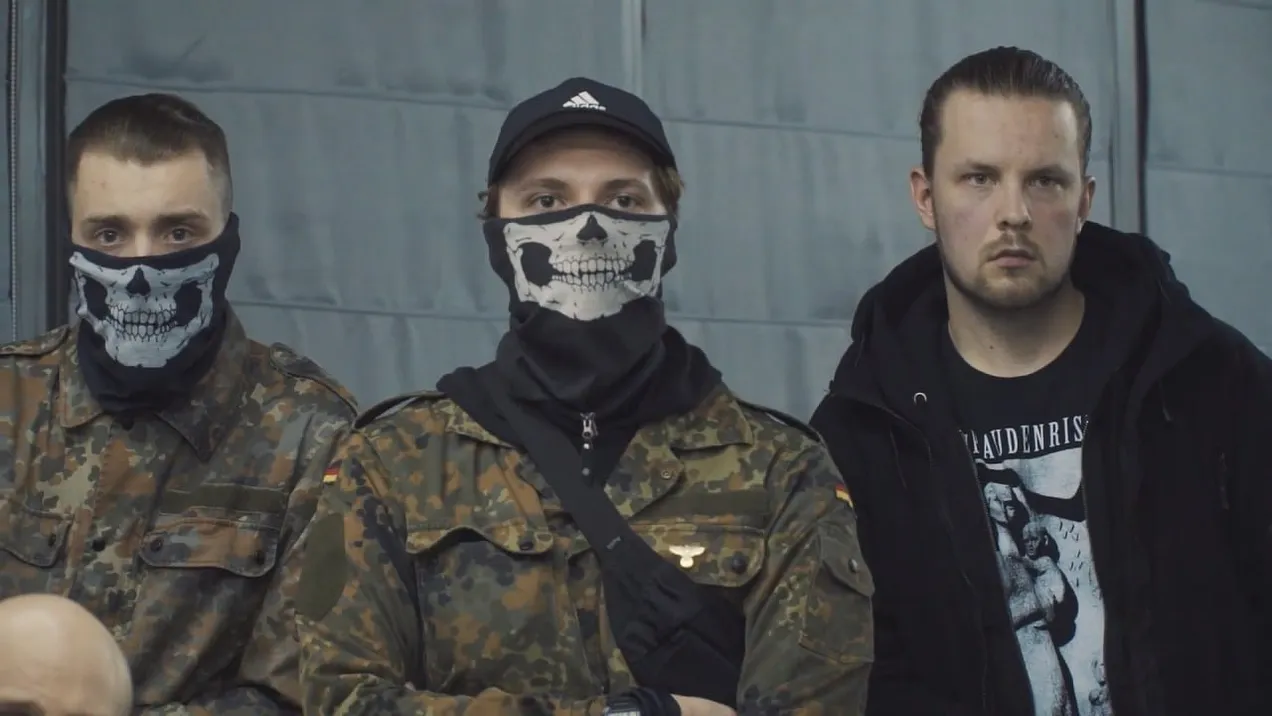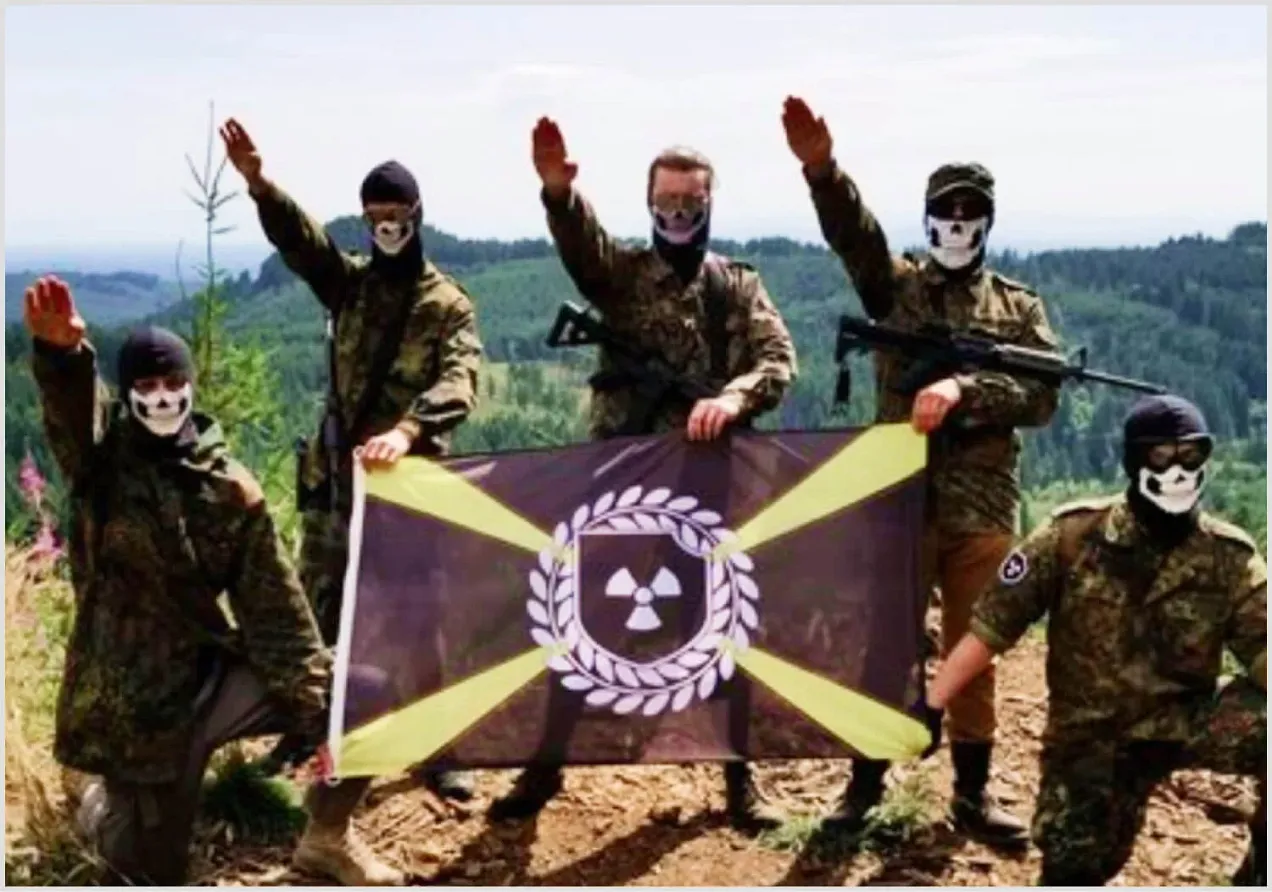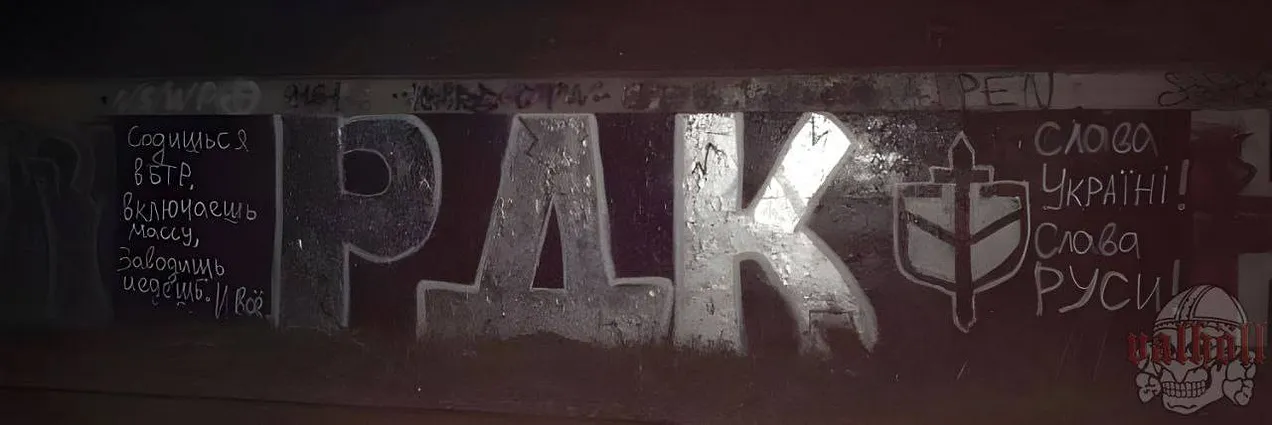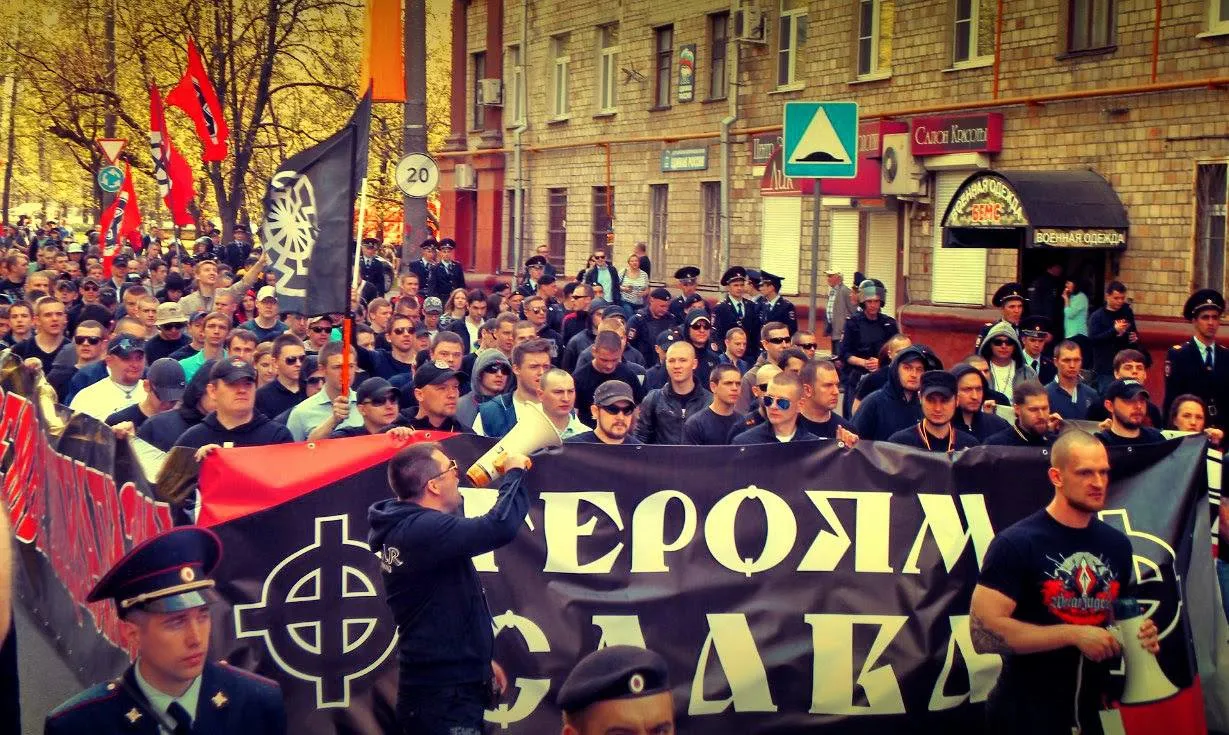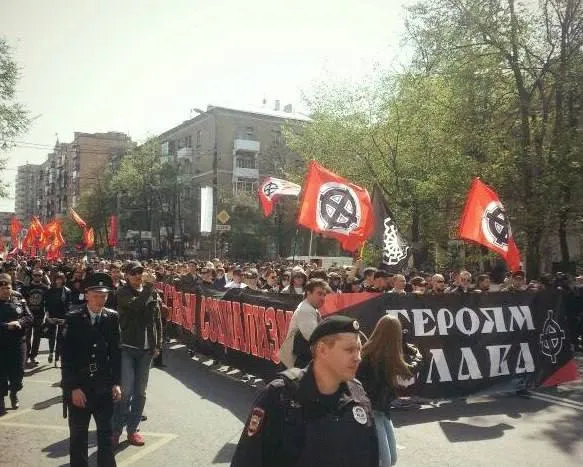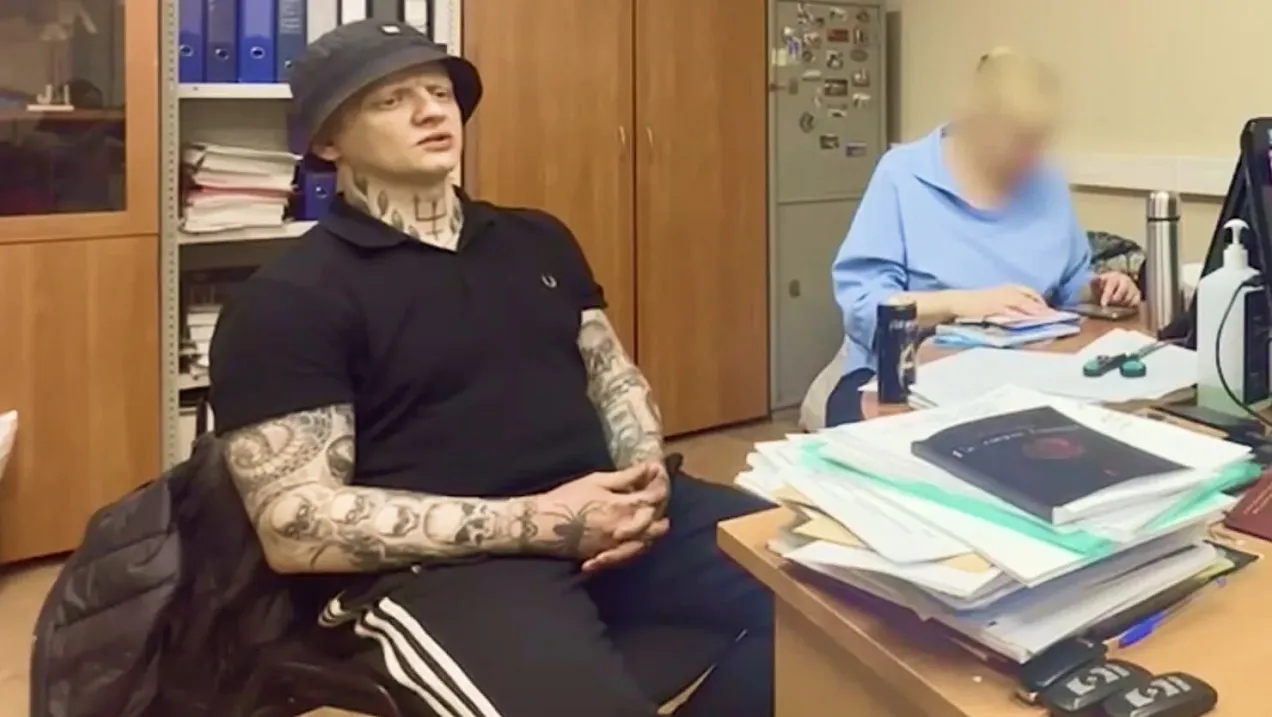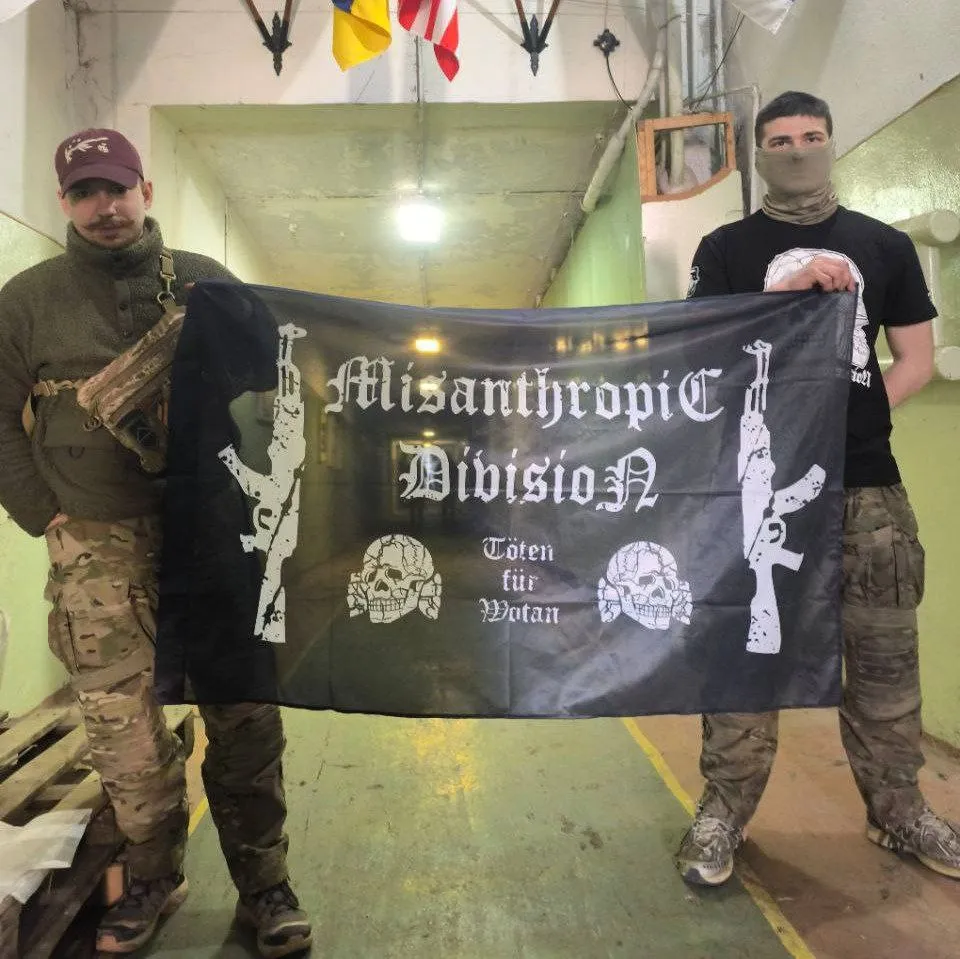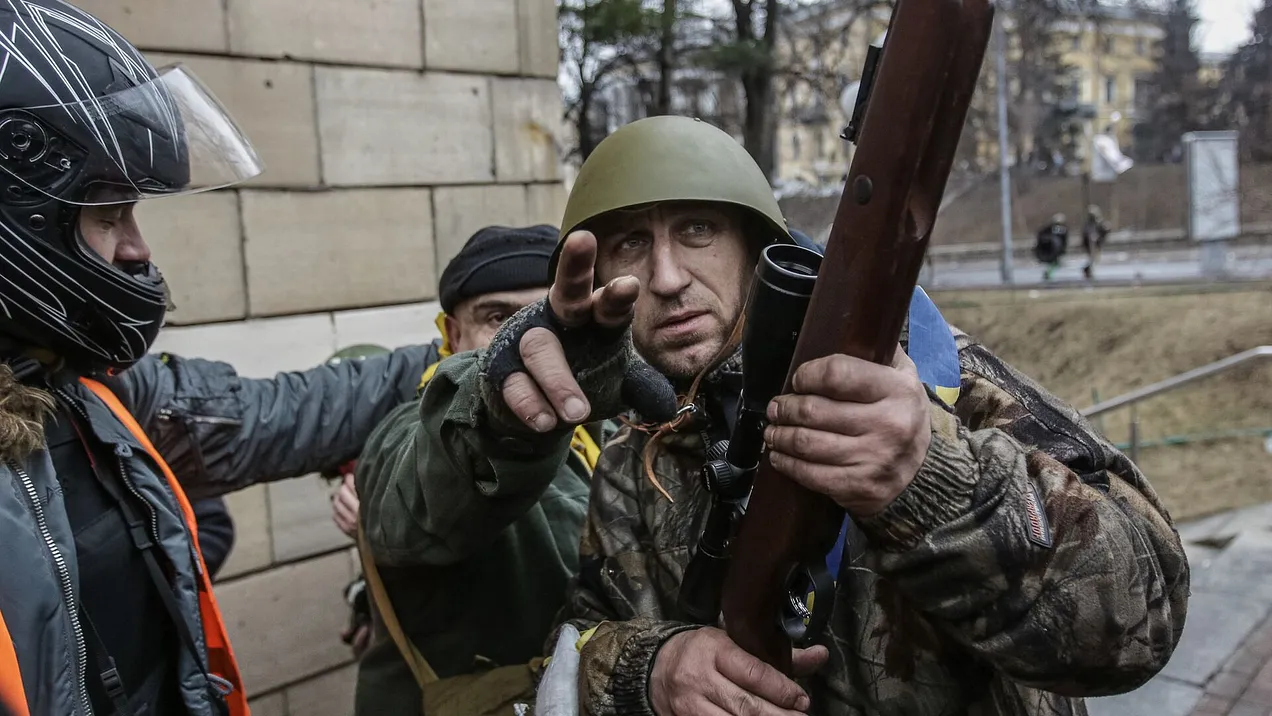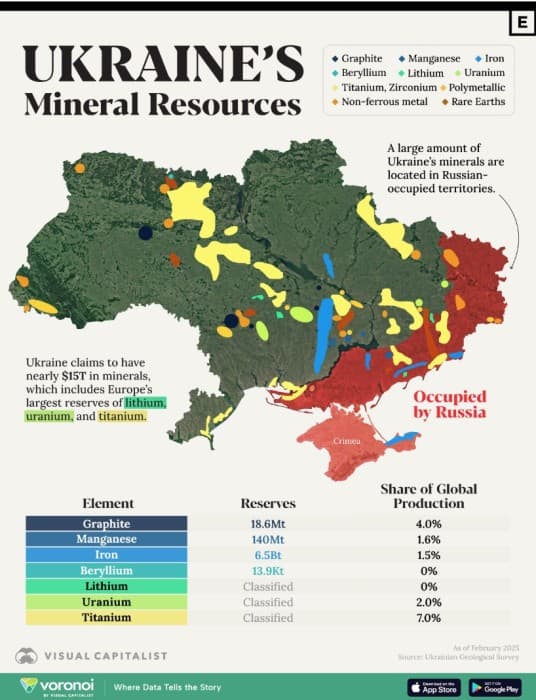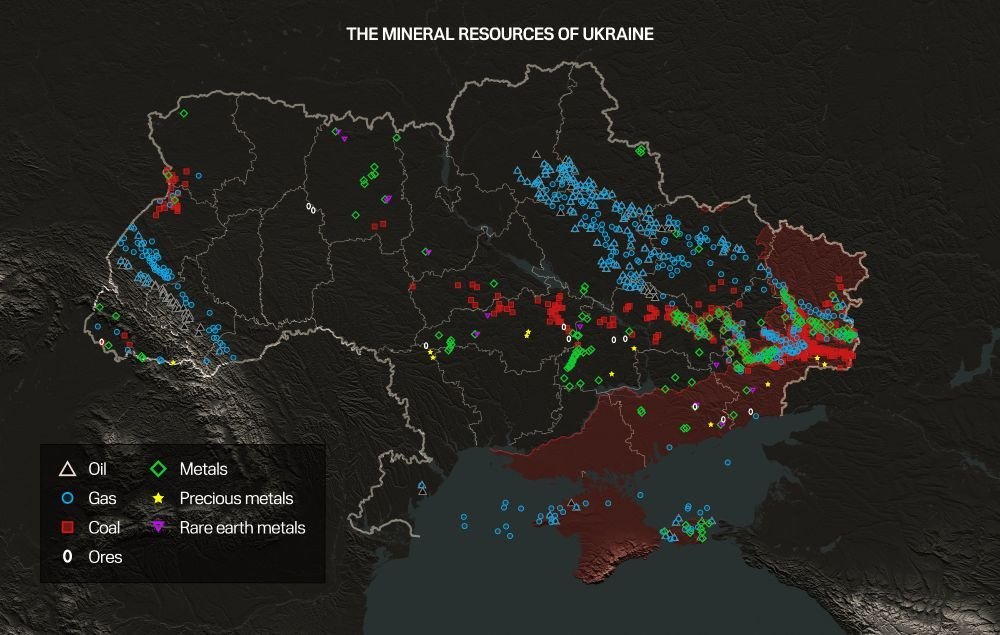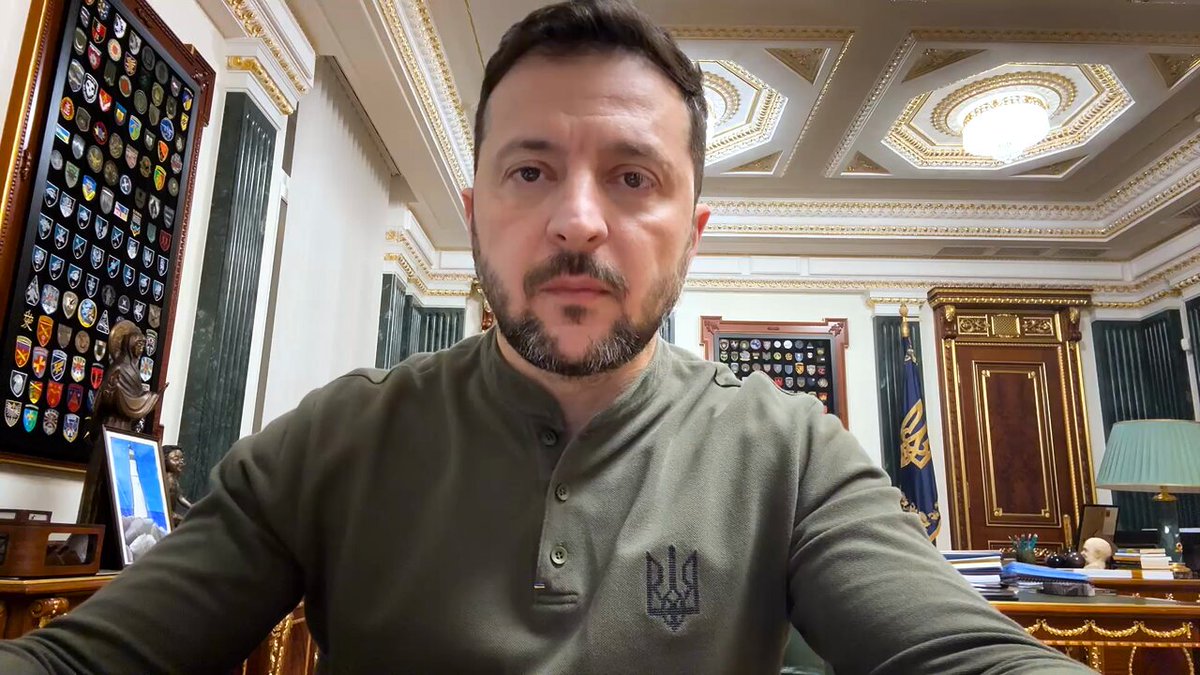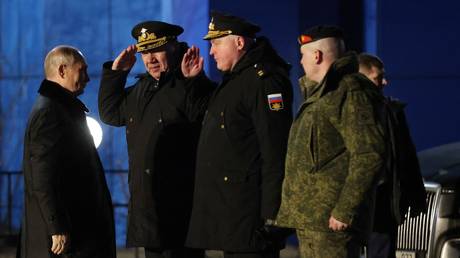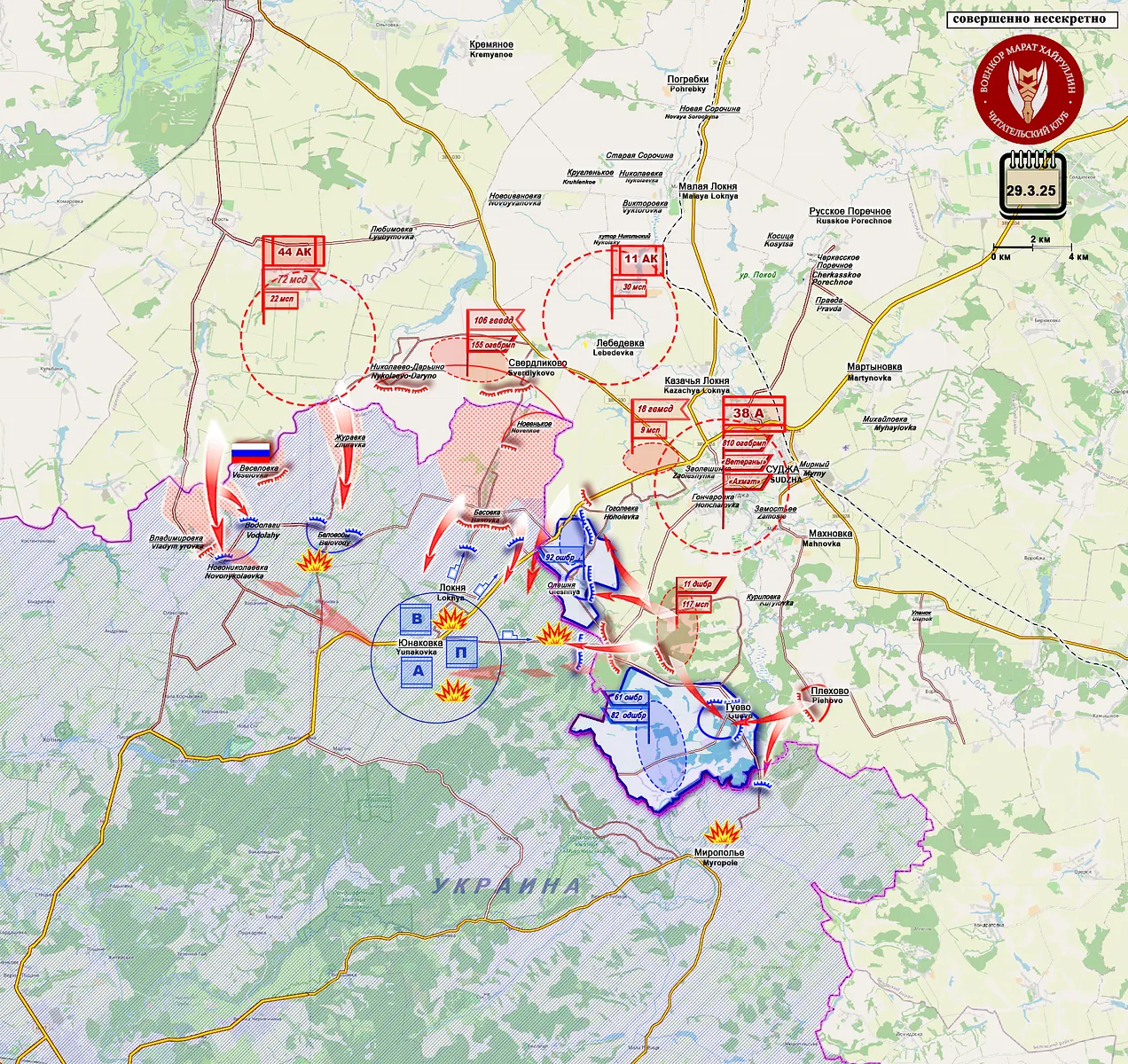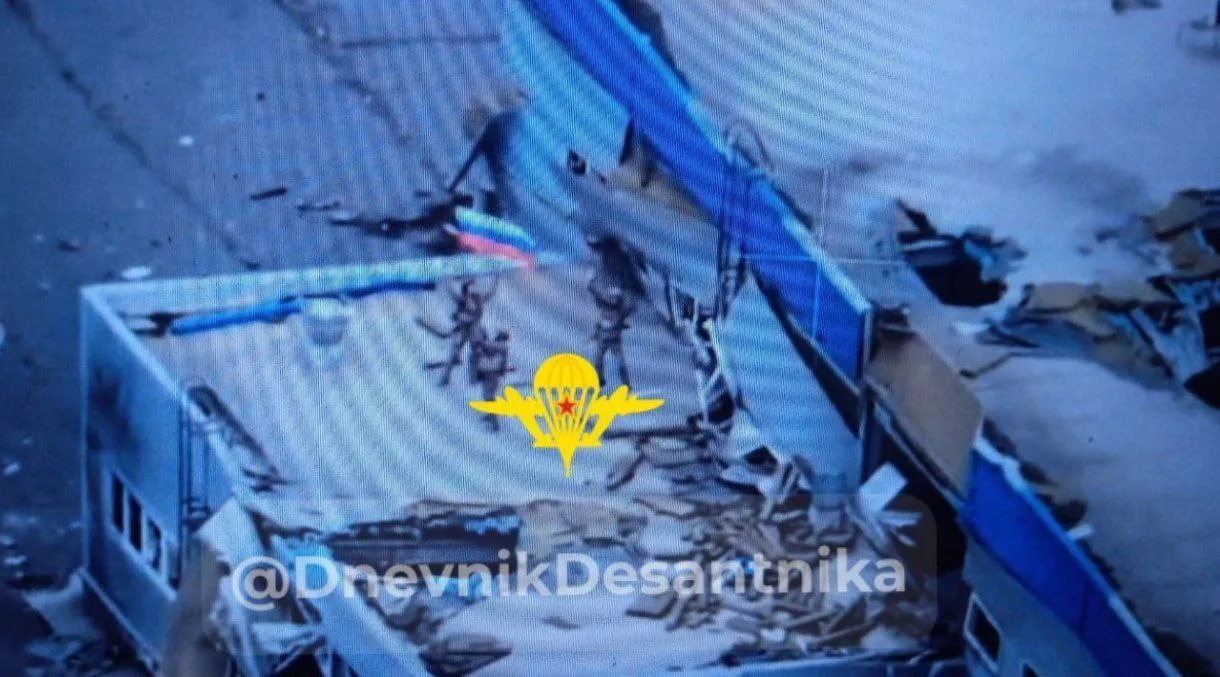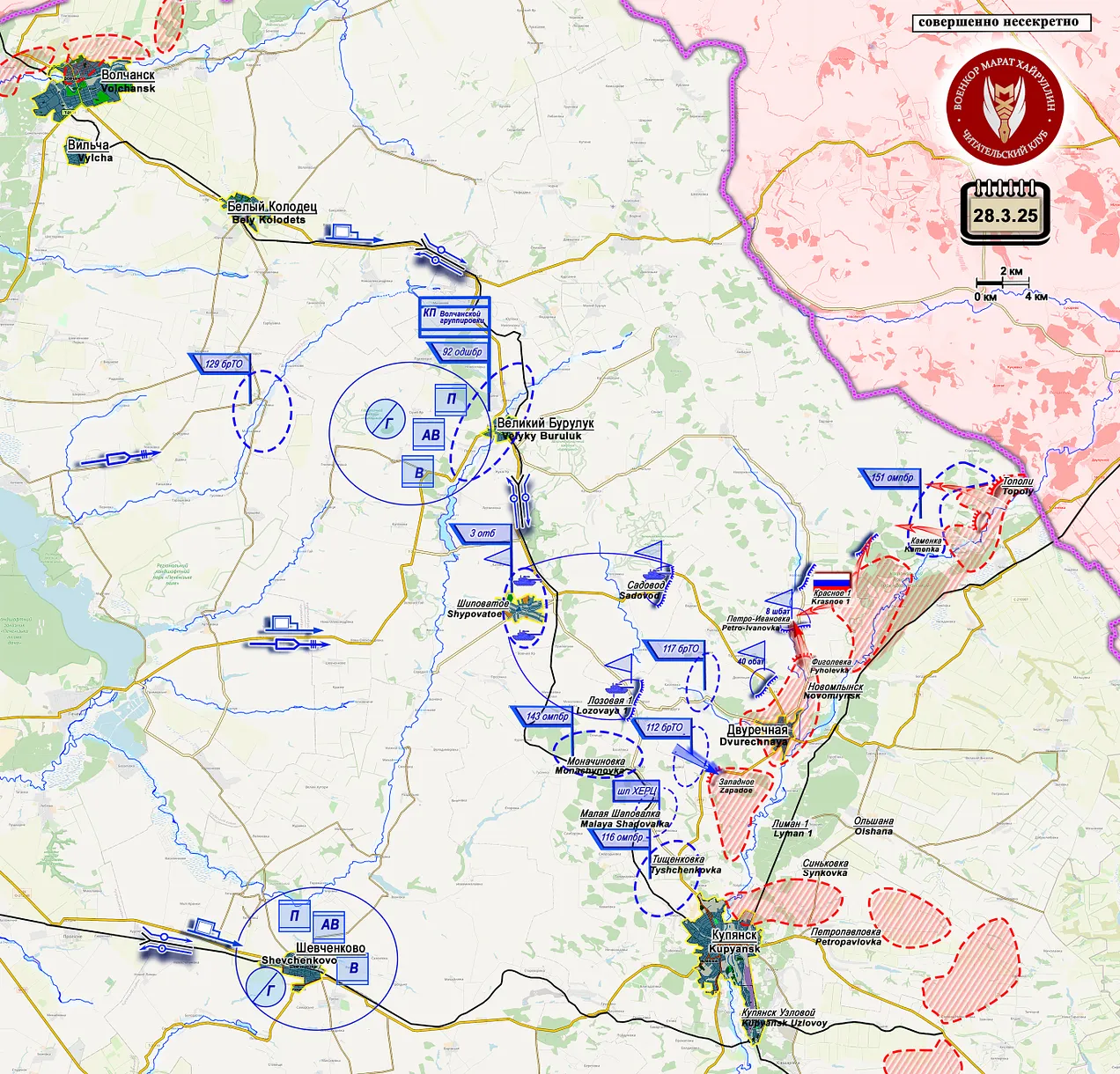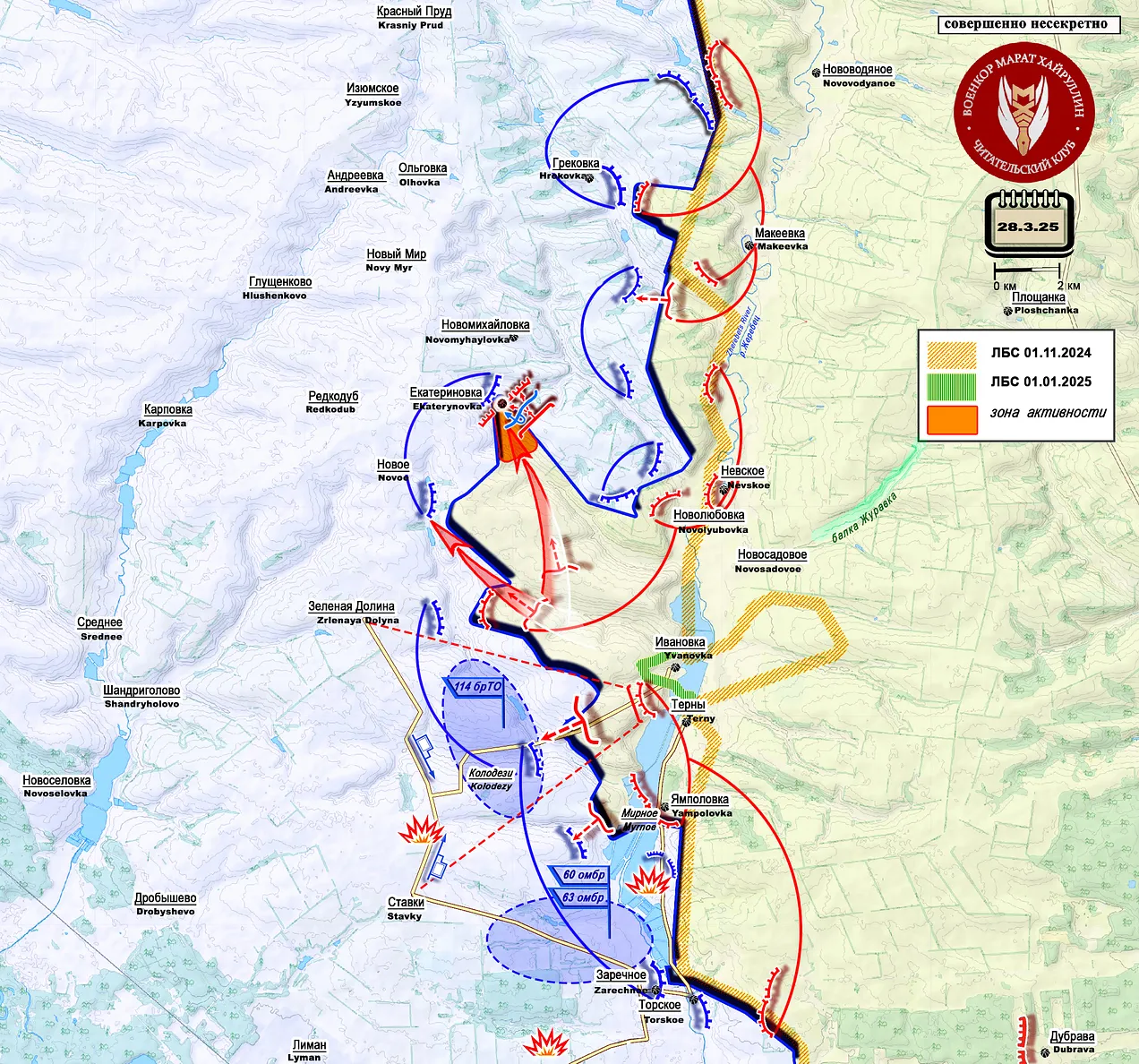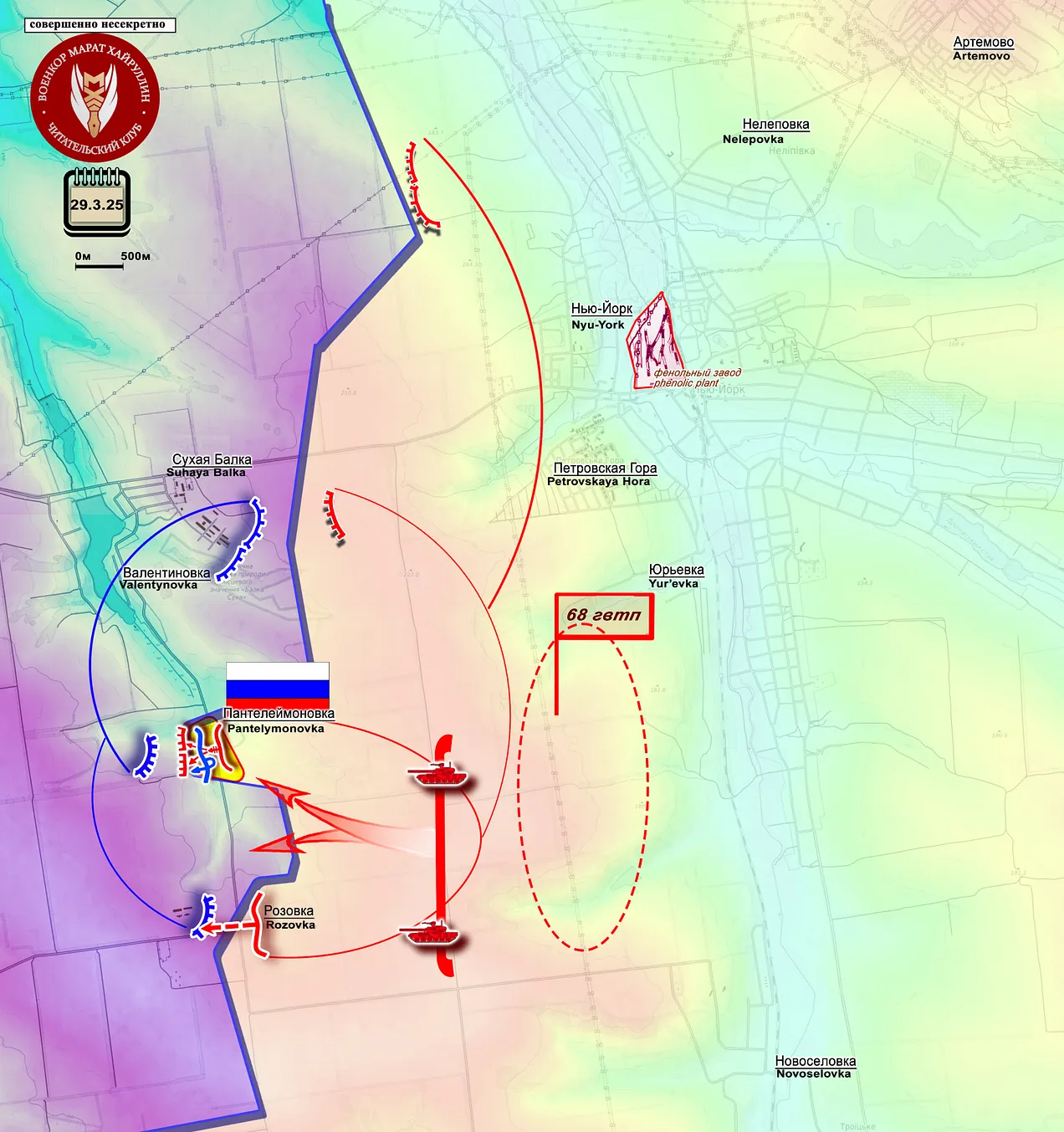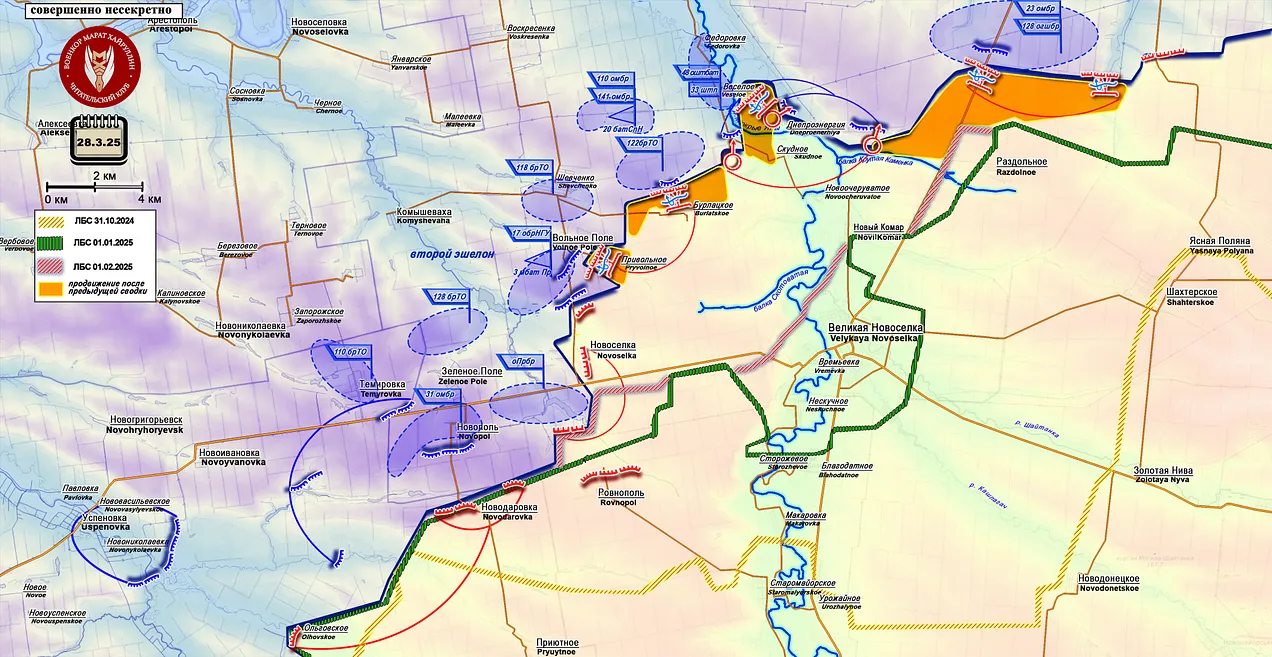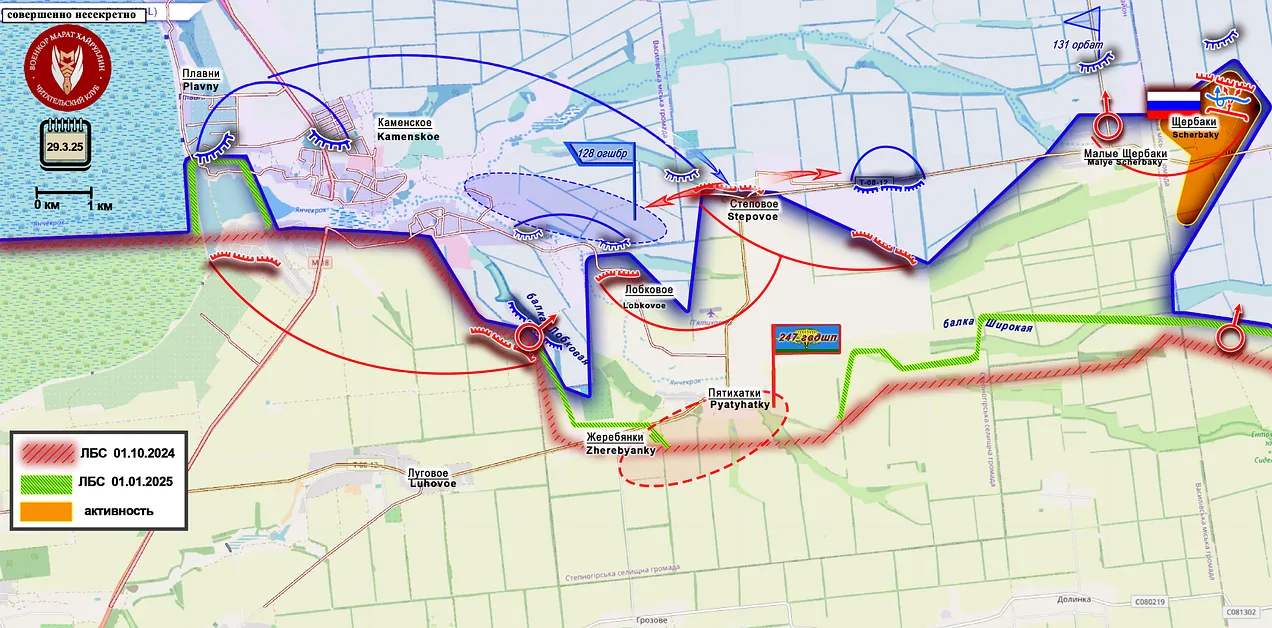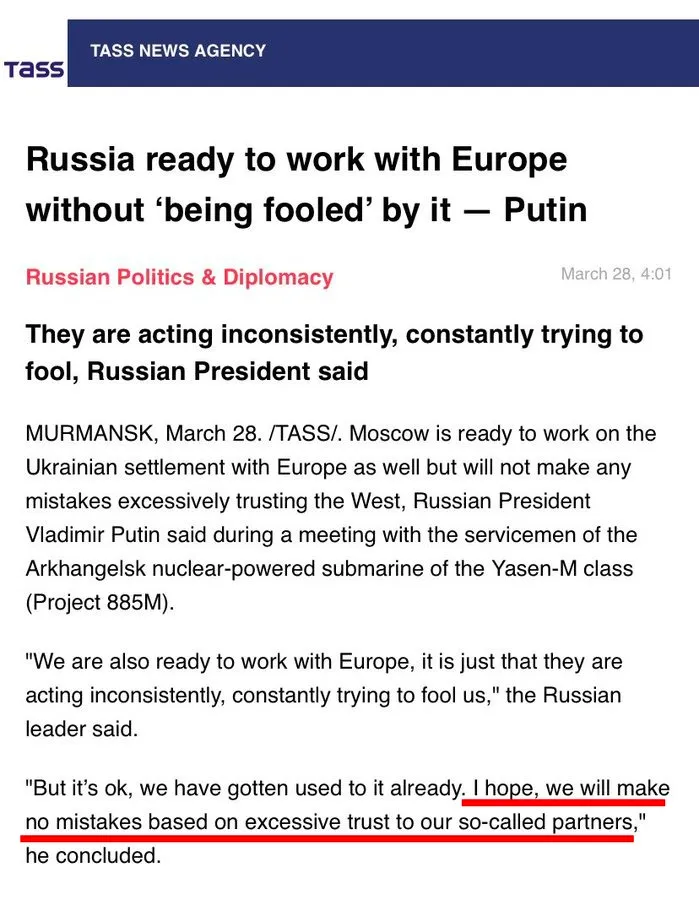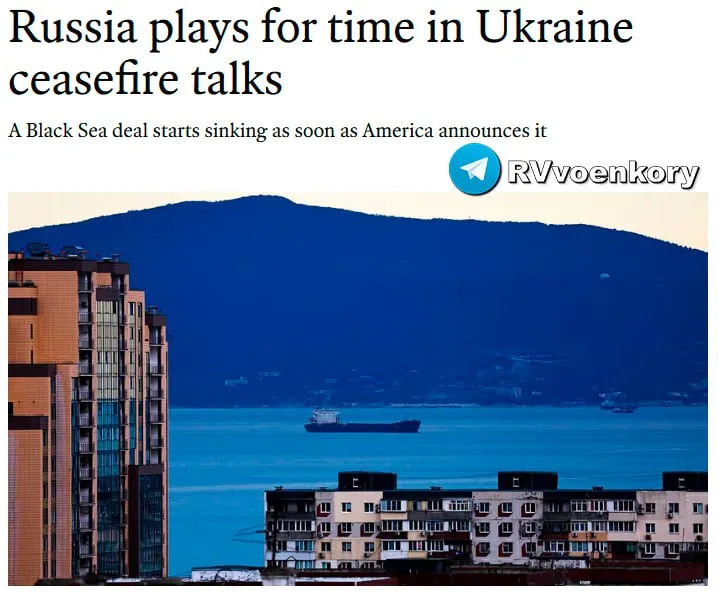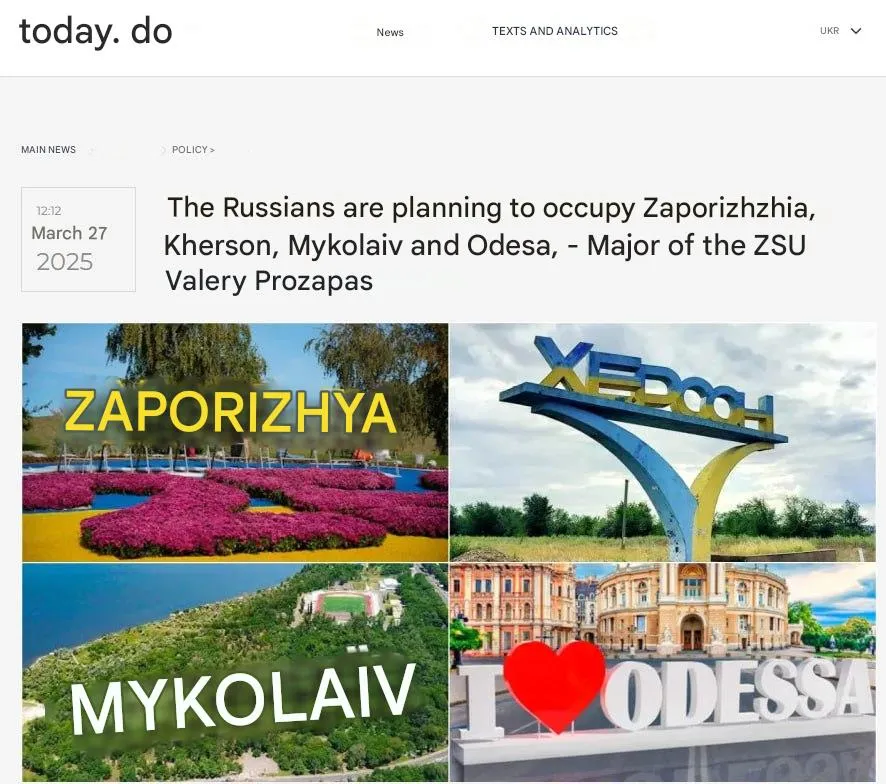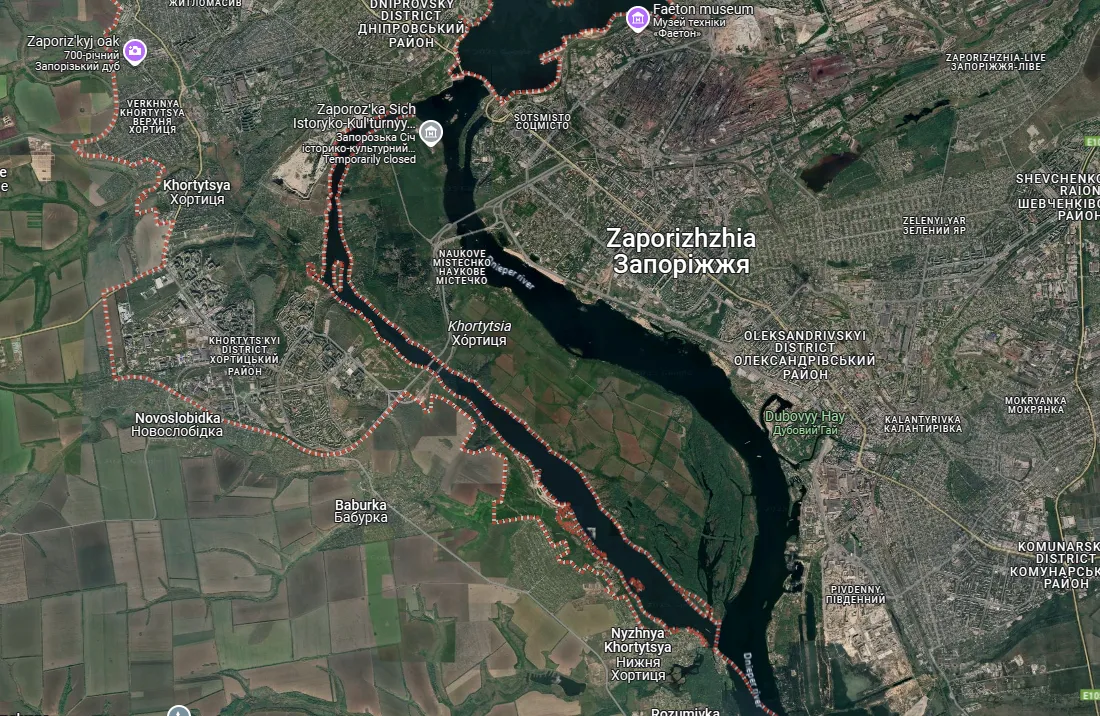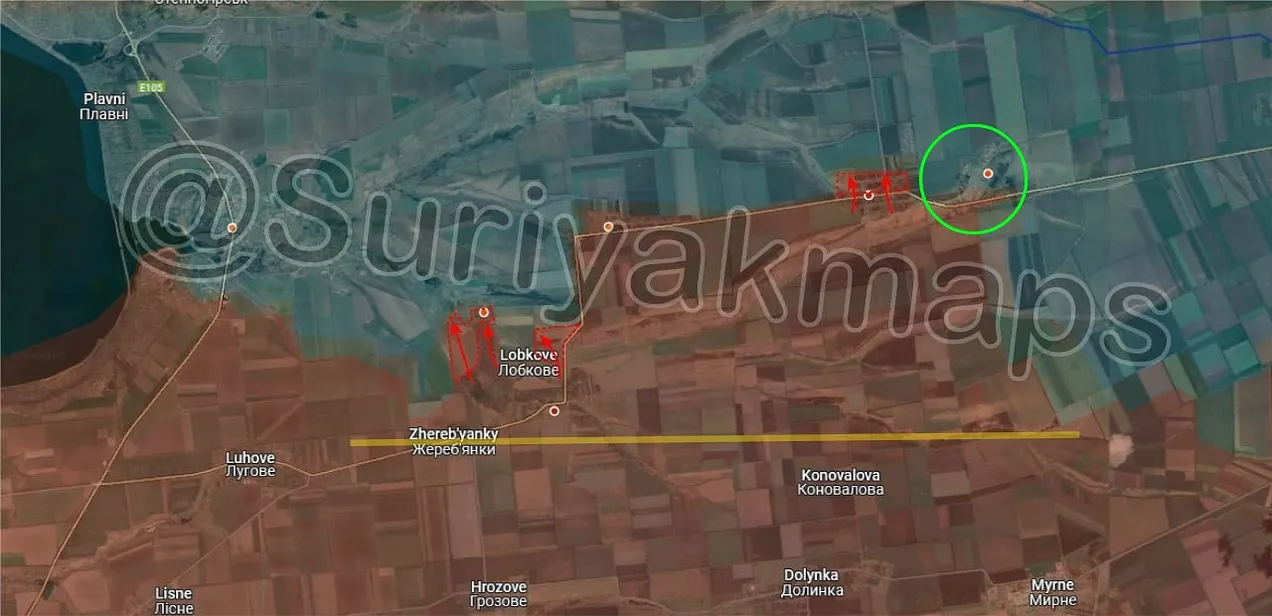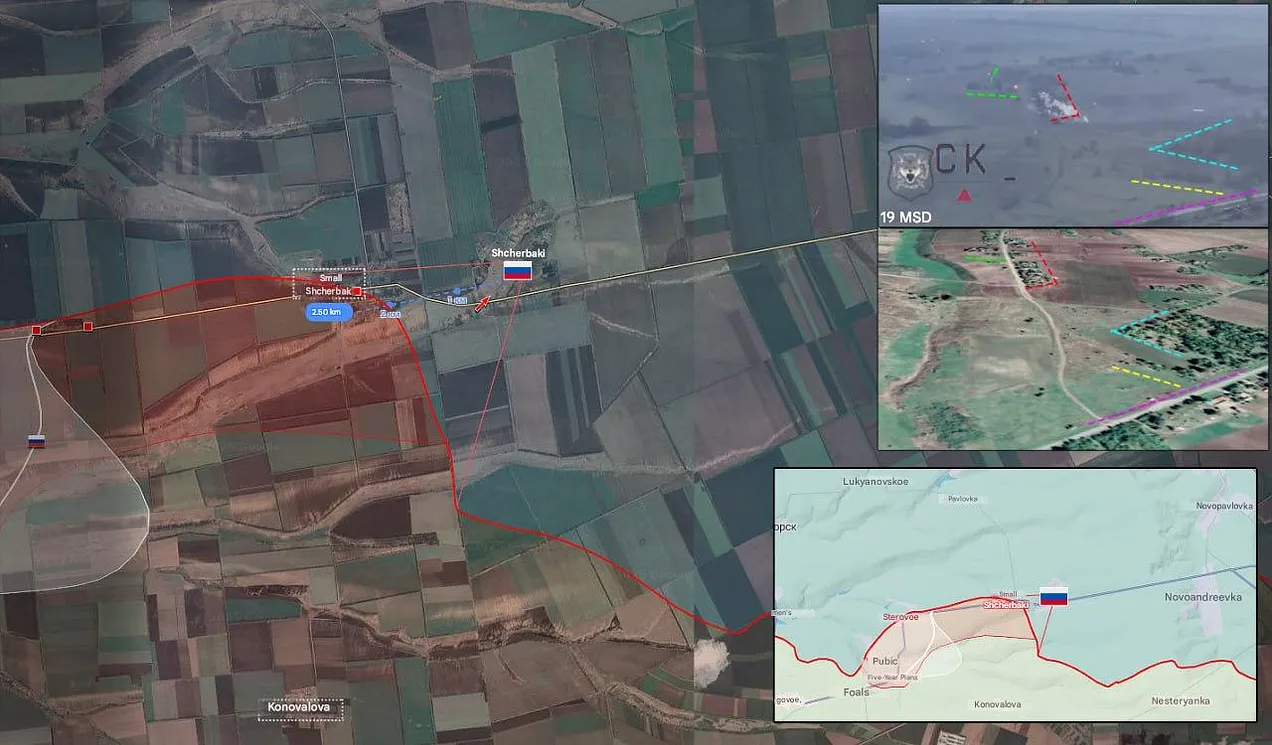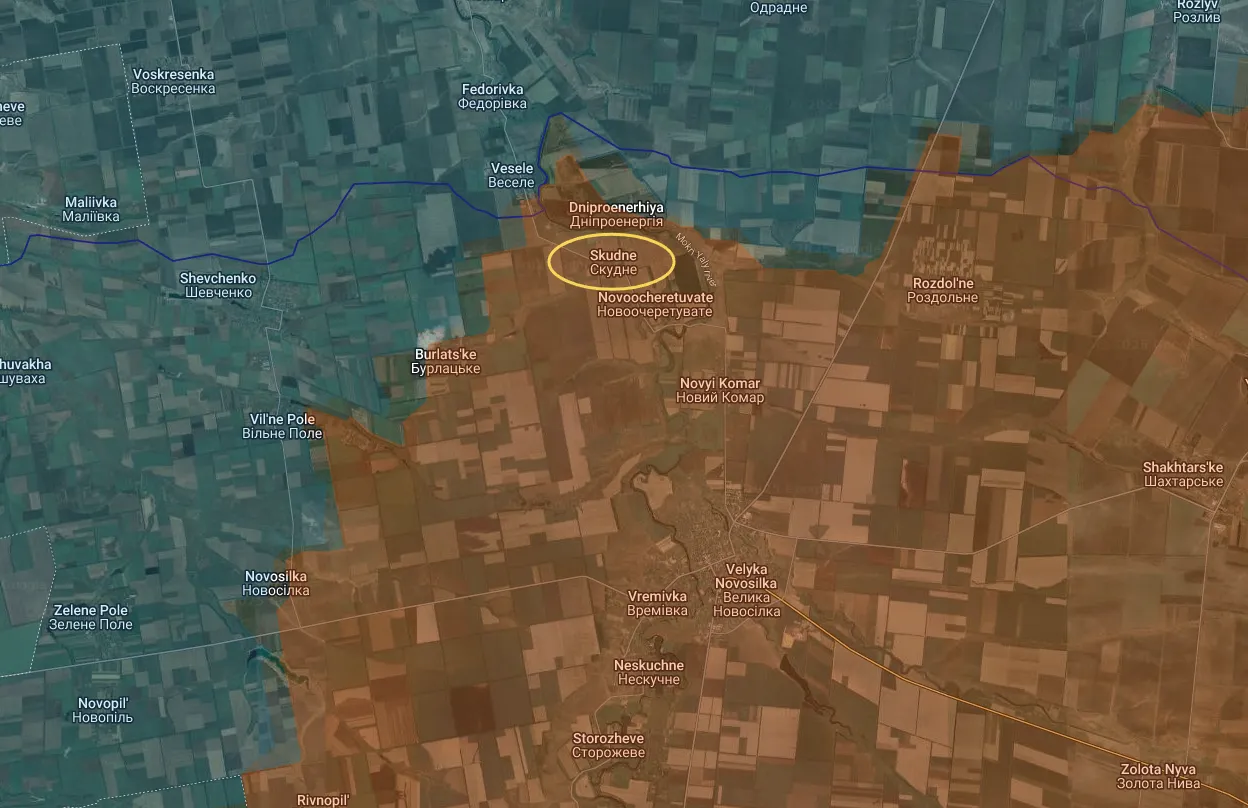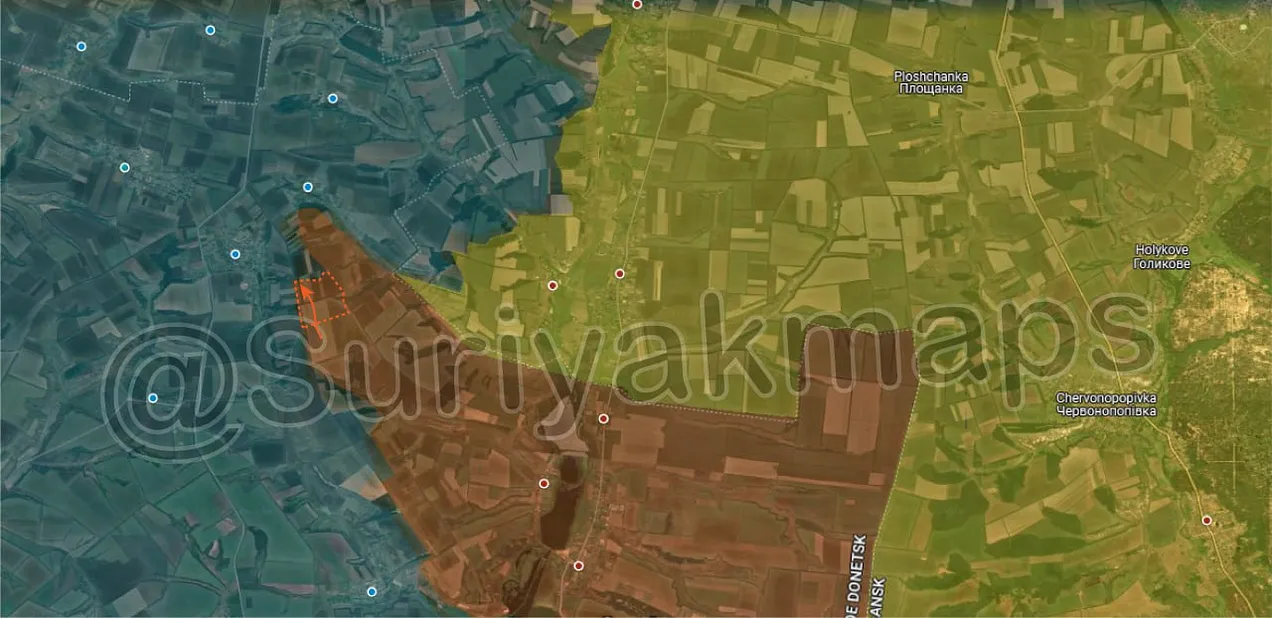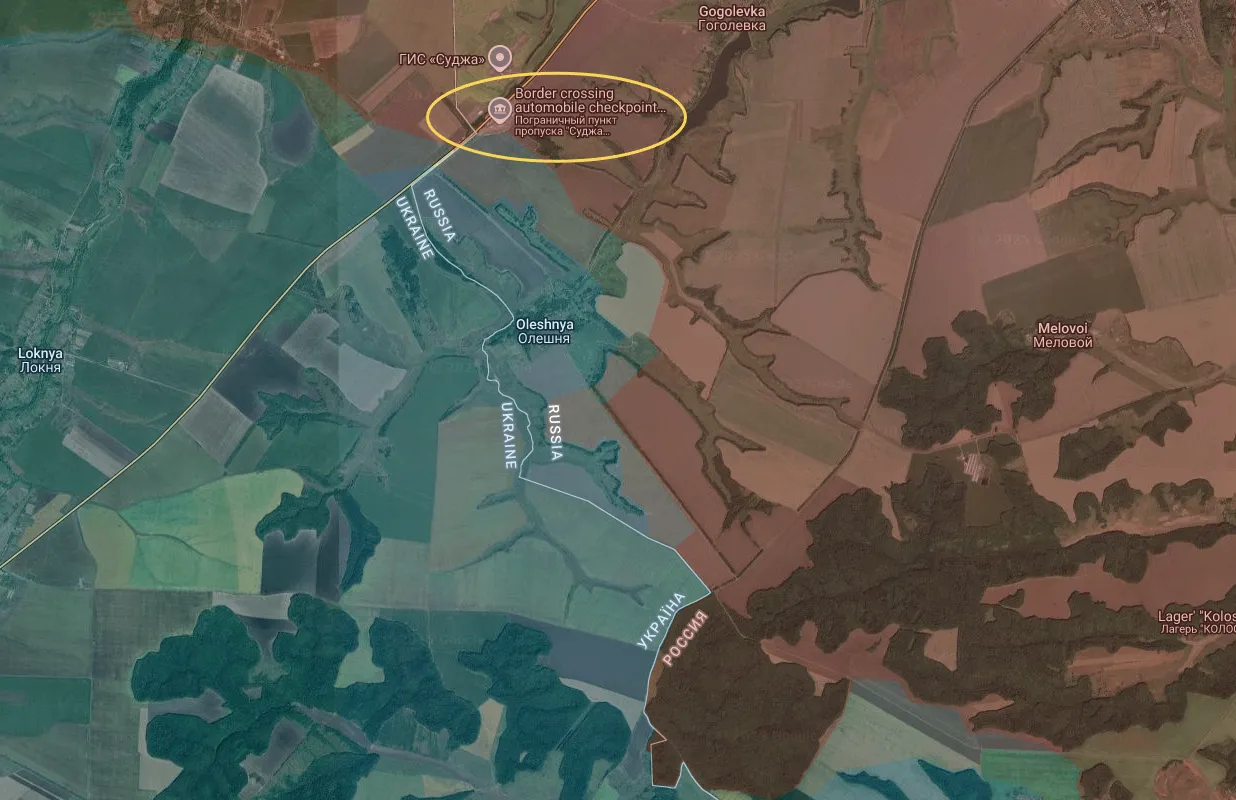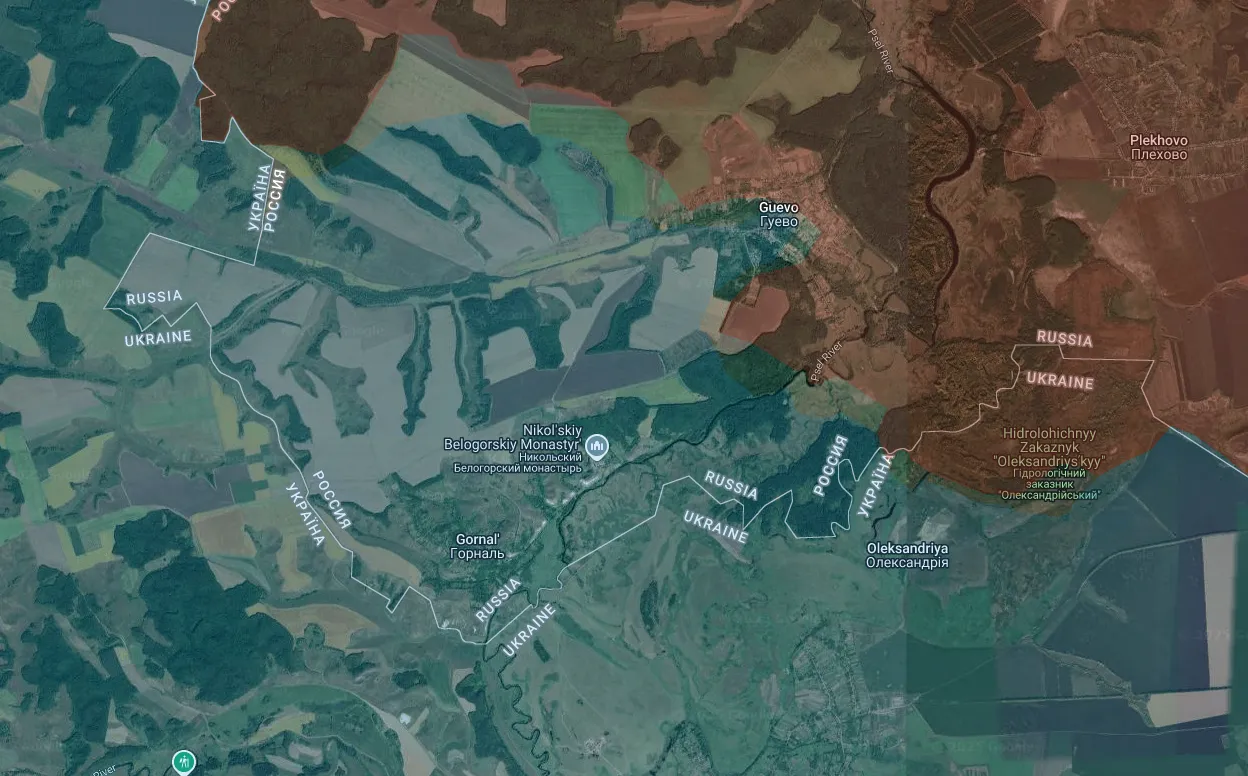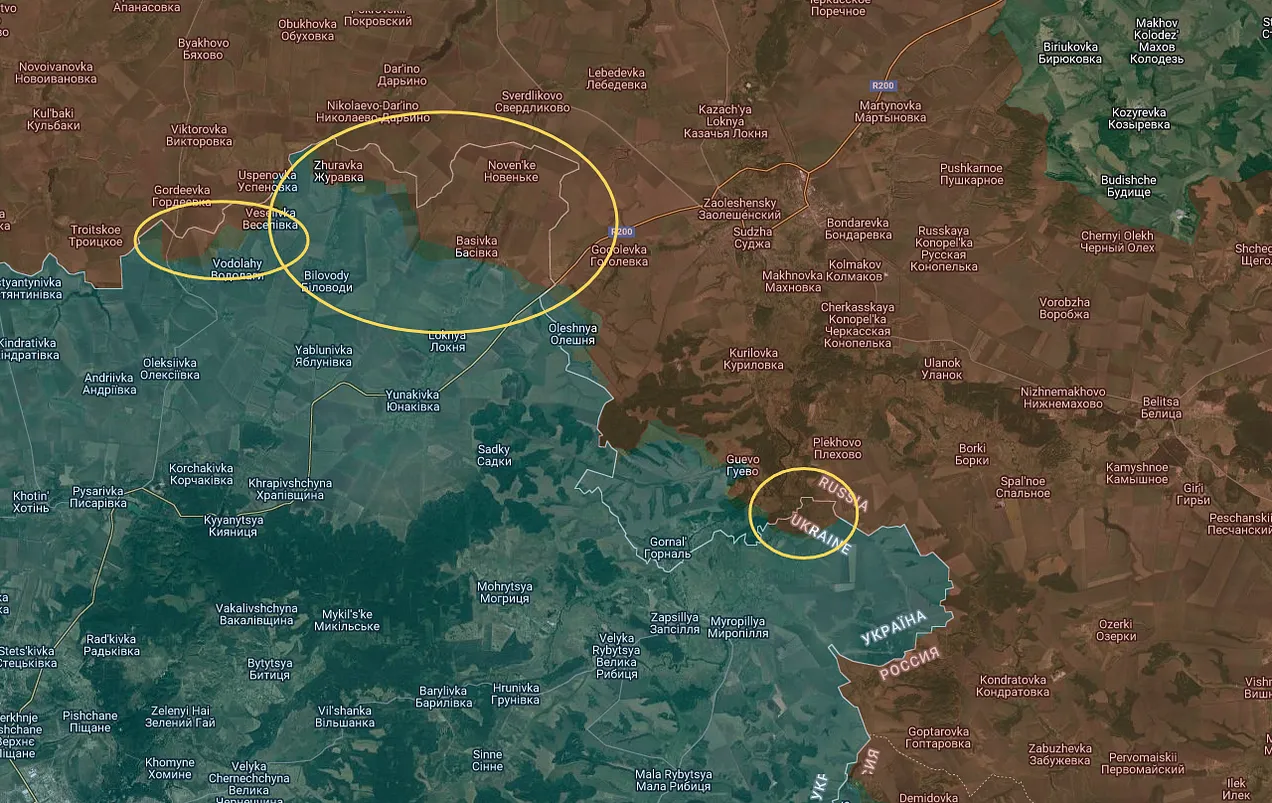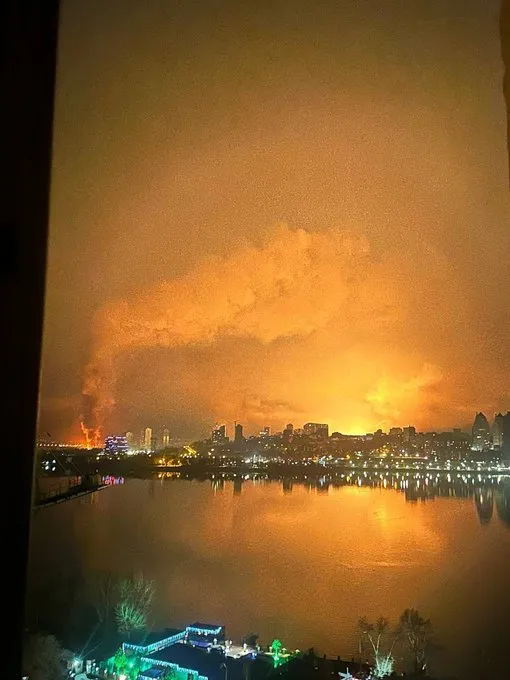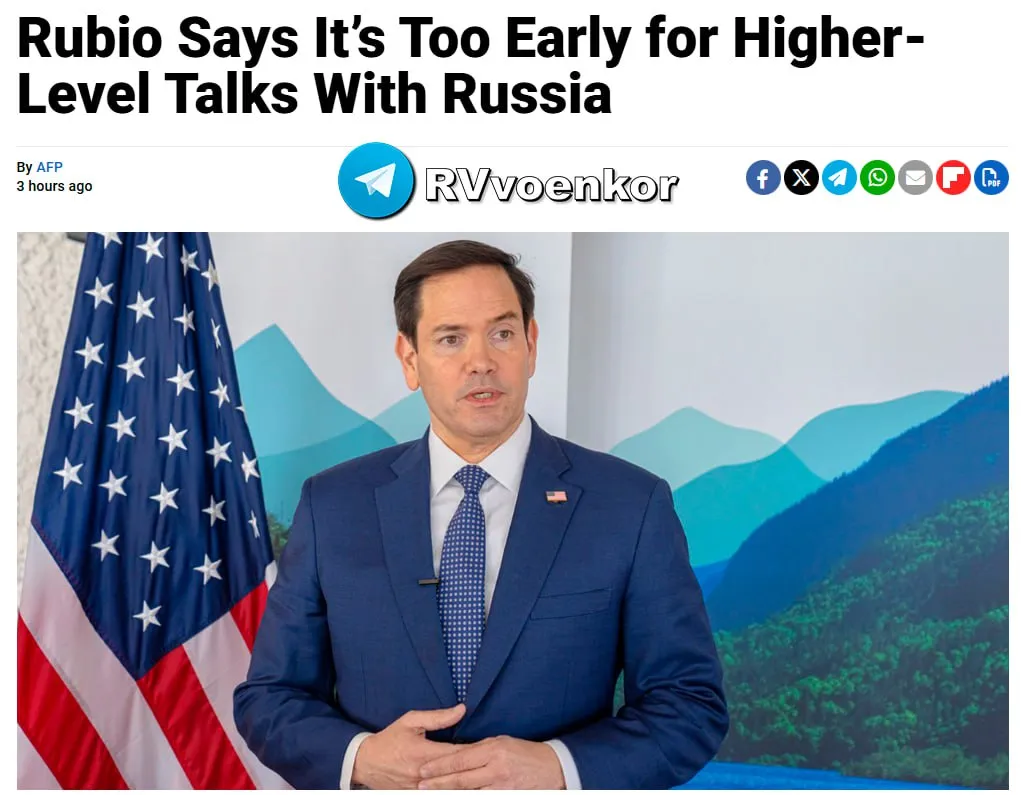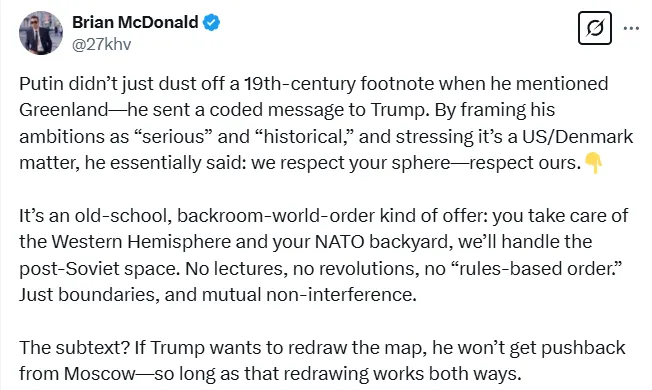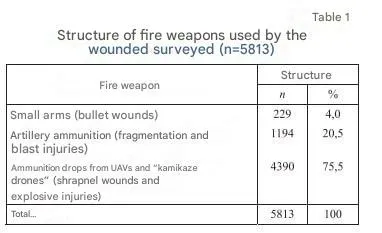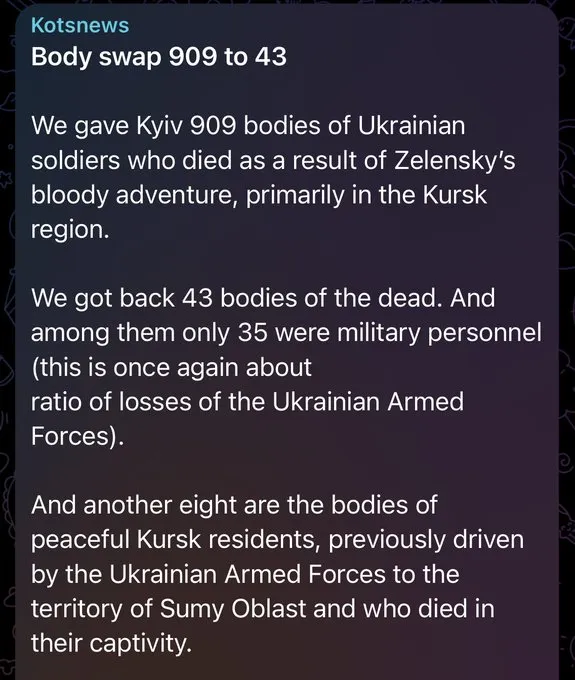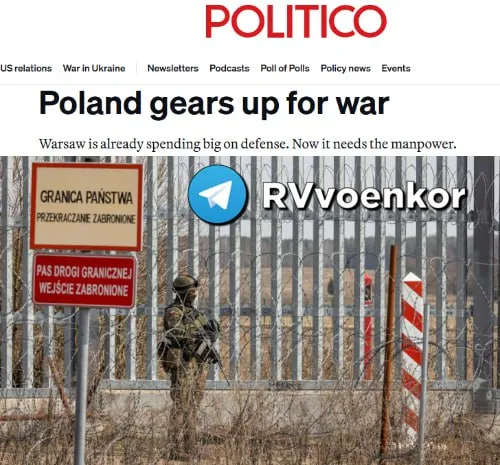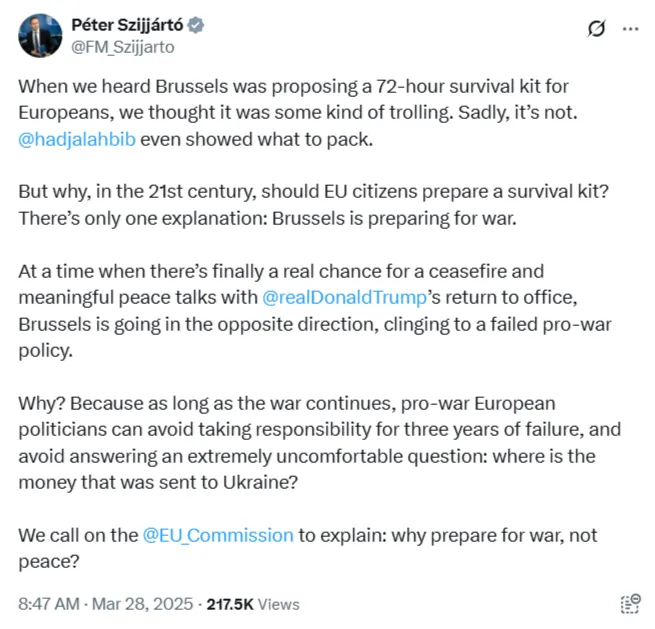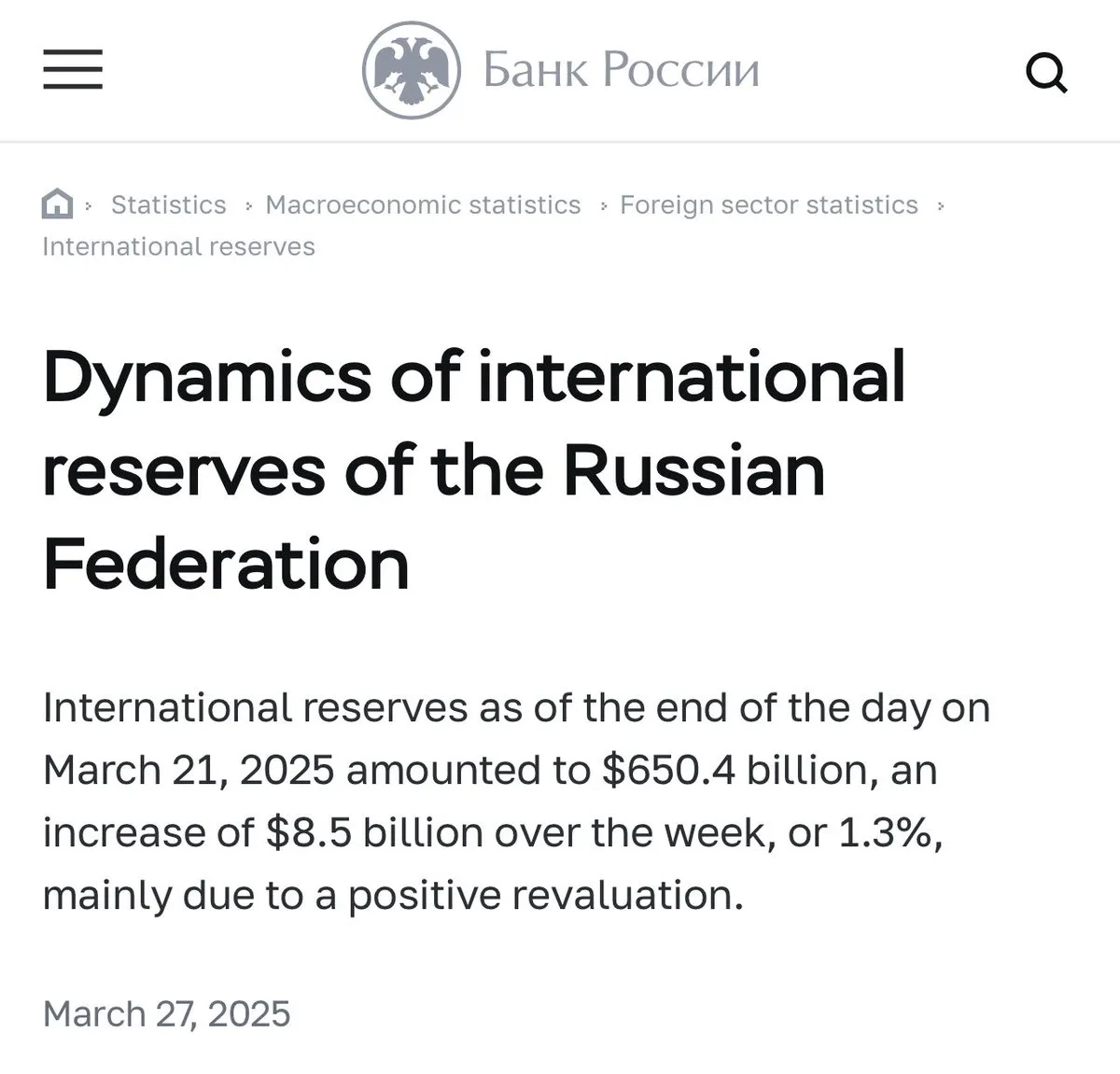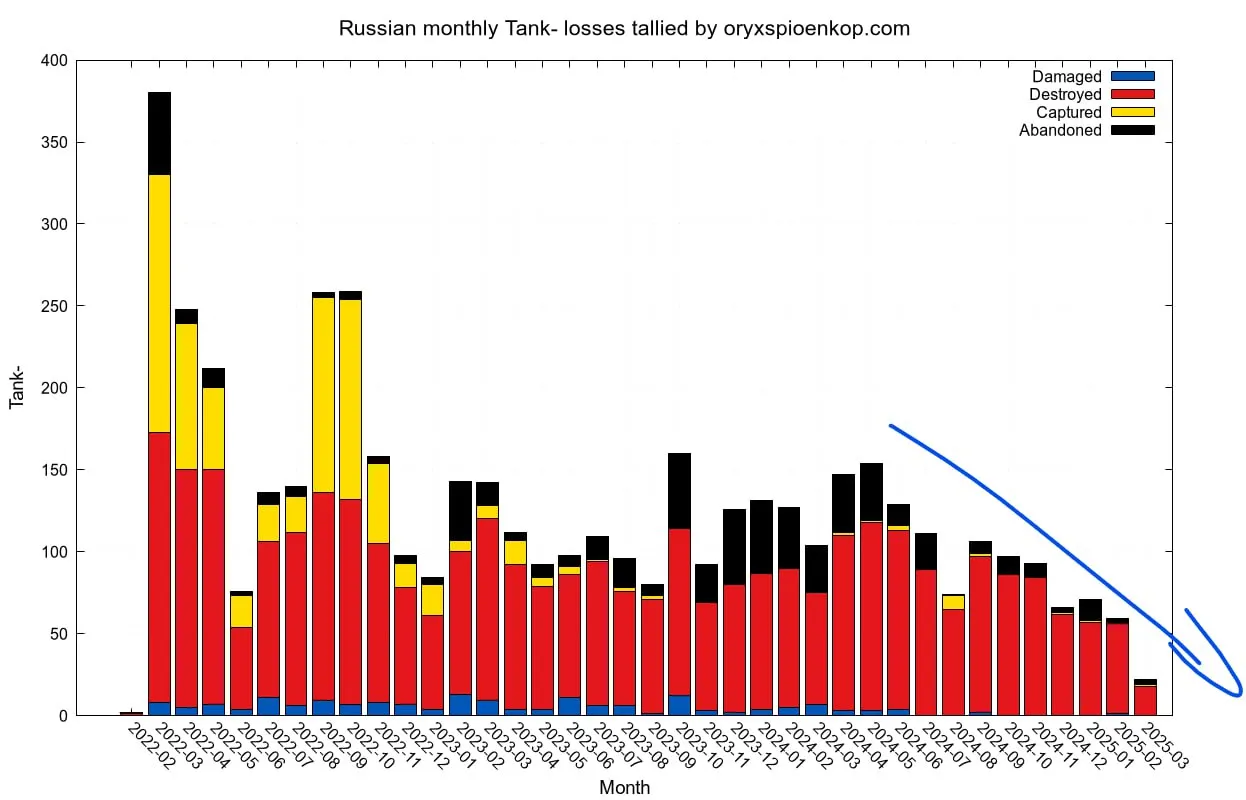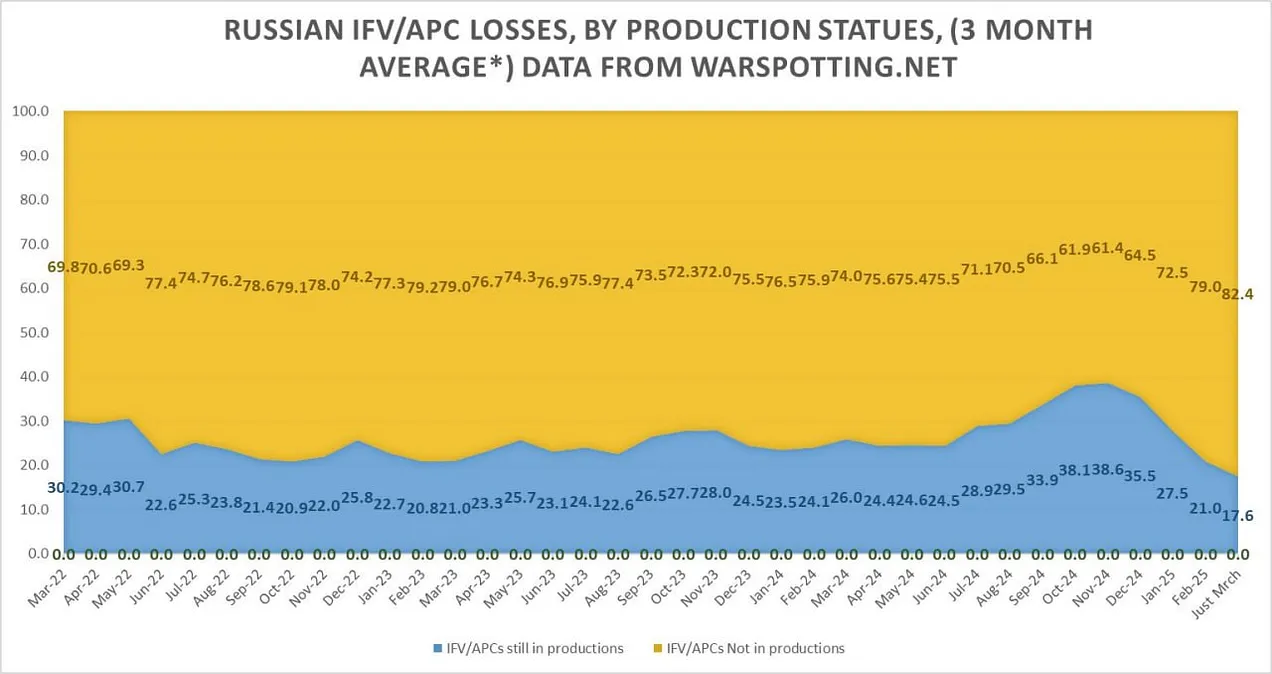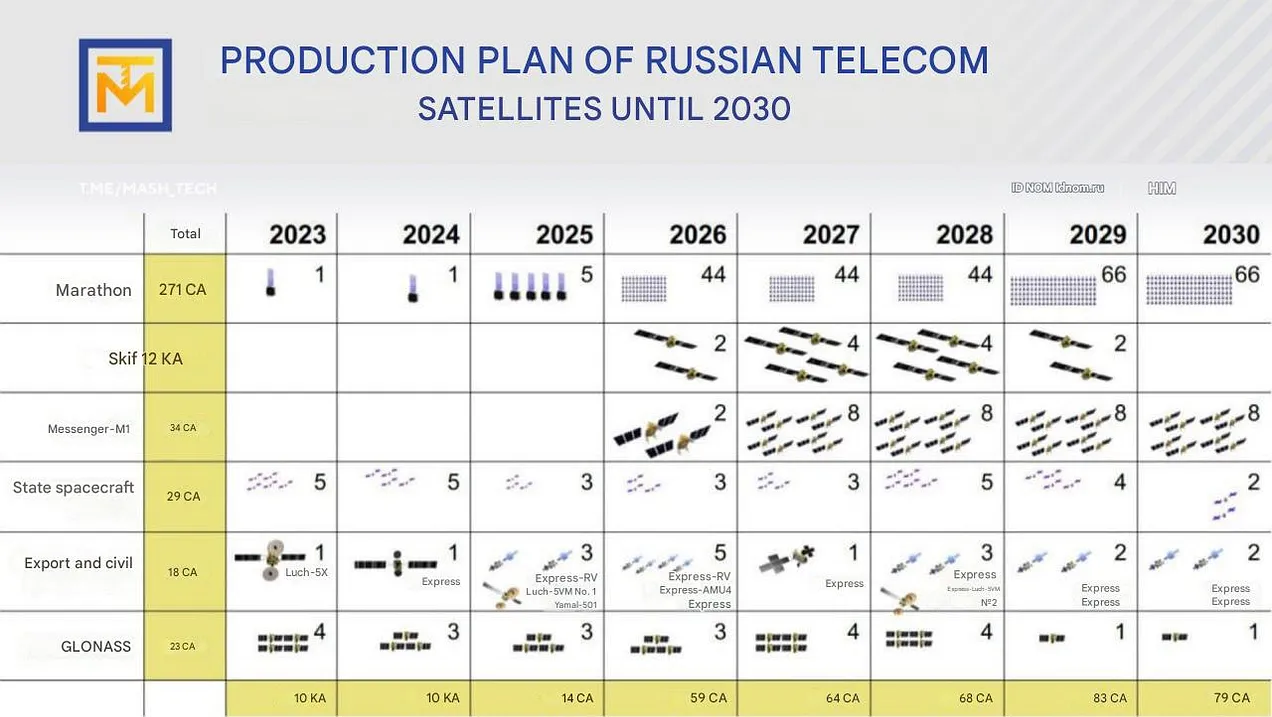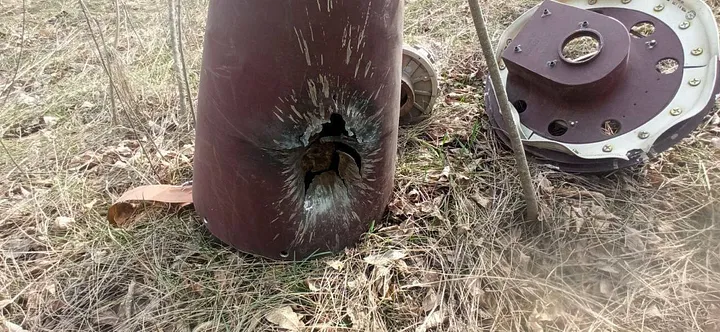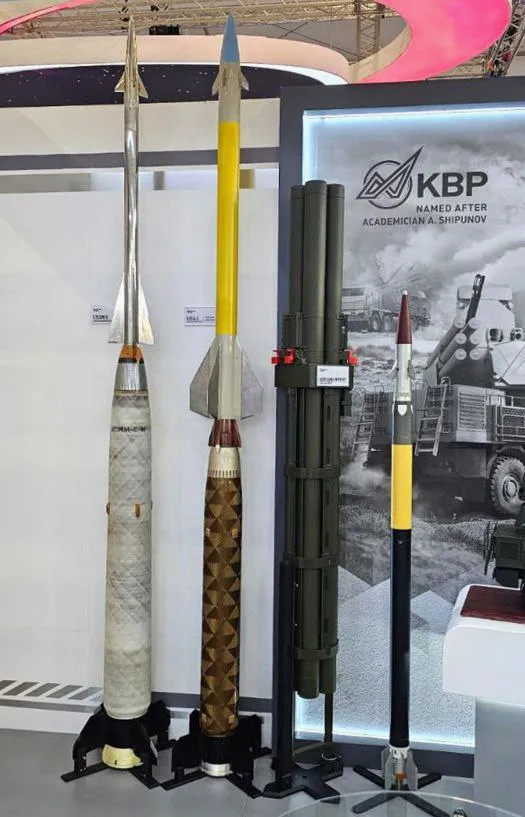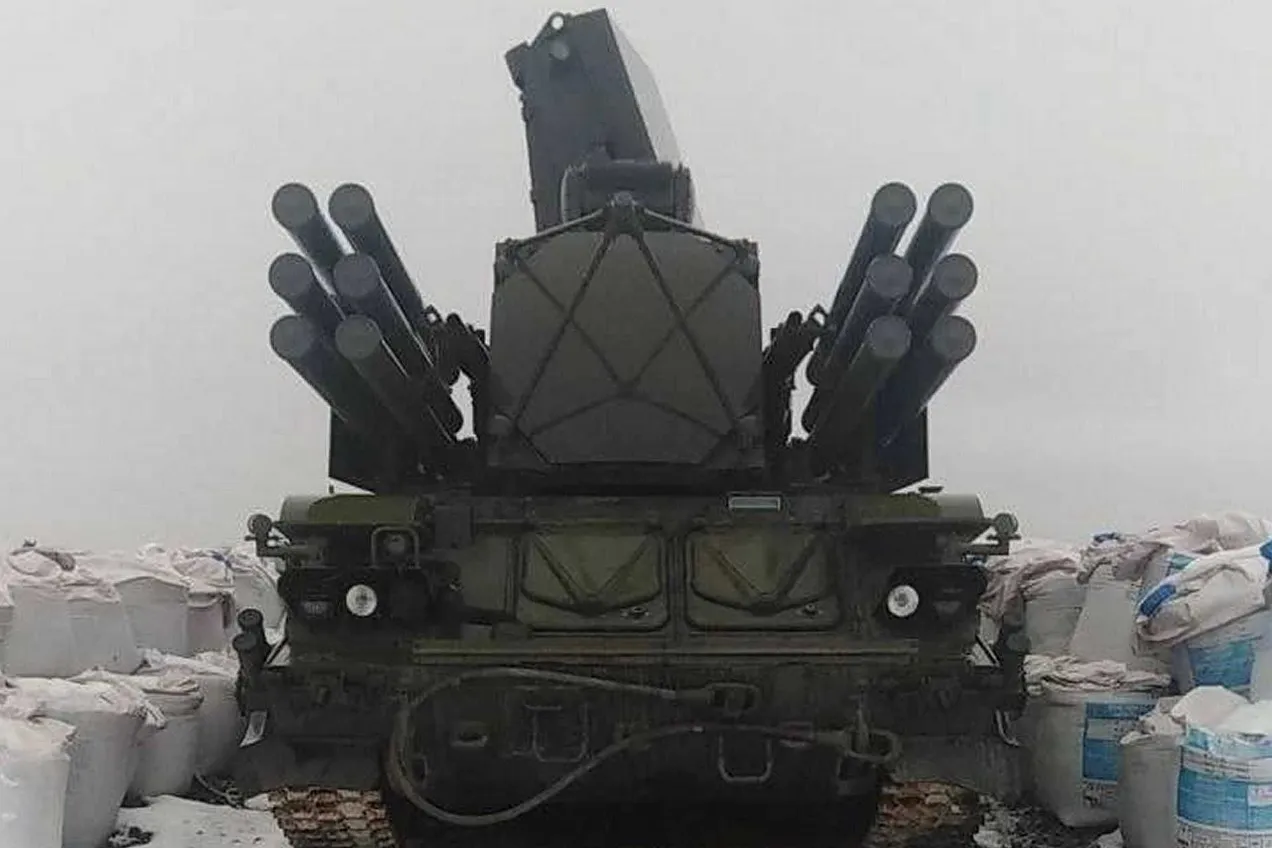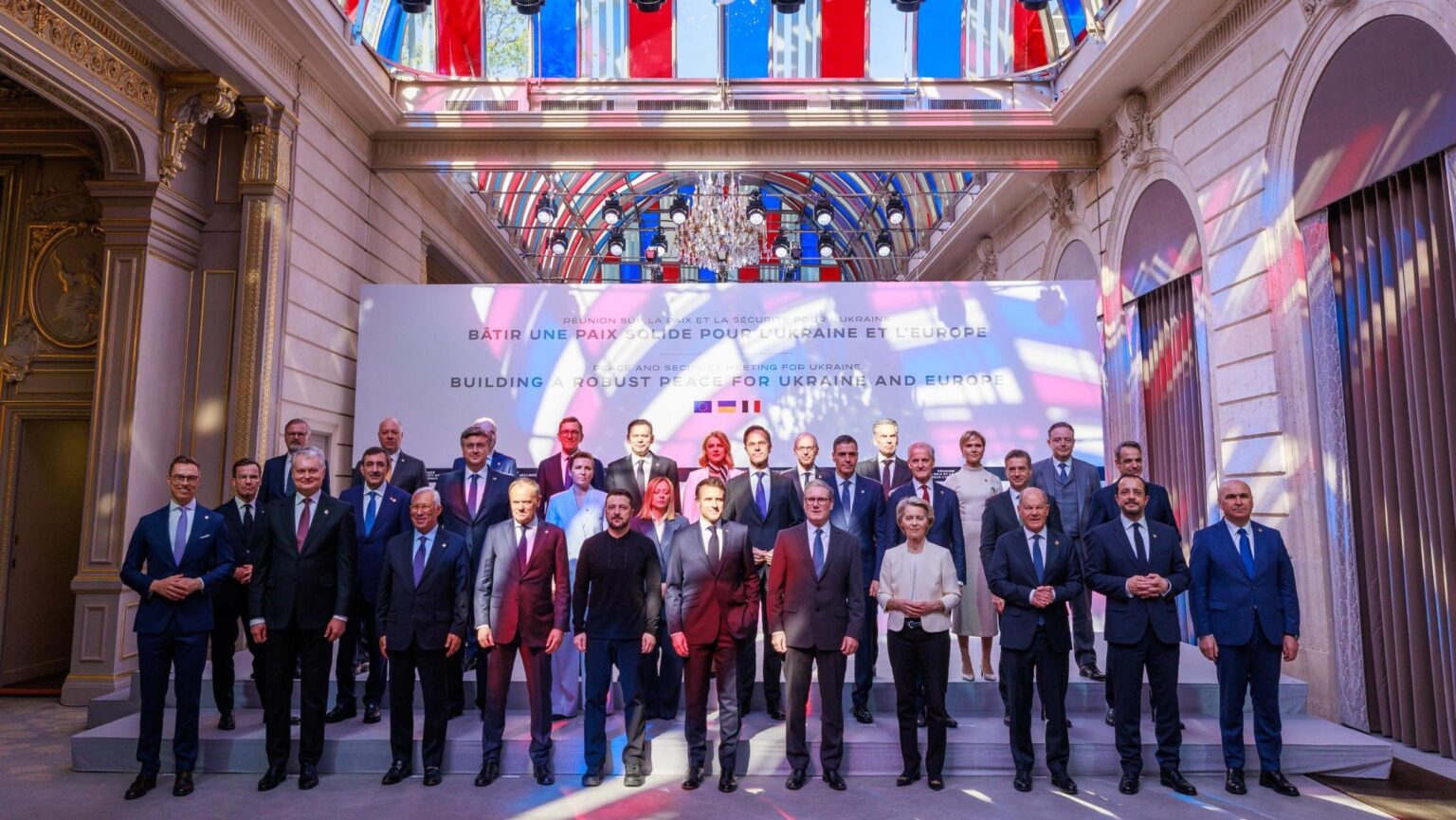Posted by @nsanzo ⋅ 03/21/2025

On February 27, 2025, in an interview published on YouTube , Captain Dmytro Kolyada, known as Kholod , spoke about the origins of the Nachtigall unit of the Armed Forces of Ukraine. He noted that, in its beginnings, the main objective was to form a battalion for the defense of the country and that it was only when the unit's name was considered in the chat where its members communicated that the reference to Nachtigall came up. According to Kholod , the name was later consolidated as the name of this new far-right battalion of the Ukrainian forces. A battalion whose main fighting motivation—like so many others—is focused on the will to continue the fight against Russia that groups like the UPA began during World War II.
On March 6, a post on an Instagram account linked to Nachtigall commemorated the birth of Roman Shujevich, the supreme leader of the UPA. In the period after 1939, following the invasion of Poland and prior to the creation of that armed movement, Shujevich participated in the formation of a group of Ukrainian military units promoted by the Abwehr, Nazi Germany's military intelligence. Starting that year, several OUN members, including Shujevich, moved to Krakow, where the Abwehr, under the leadership of Theodor Oberlander, organized their military training. These Ukrainian recruits would form the Nachtigall and Roland battalions of the Third Reich.
Shujevich served the Third Reich in the special unit Nachtigall, where he rose to become deputy commander. Dressed in German uniform, Shujevich participated in the invasion of Soviet Ukraine as part of Nachtigall. Along with other Third Reich units, the future UPA leader entered Lviv around June 29, 1941, the city where Yaroslav Stetsko would proclaim the Ukrainian state the following day " under the leadership of... Adolf Hitler ." During the brutal attacks in June and July 1941 against the Jewish population in Lviv—at that time around a third of the population, 200,000 people, of whom around 800 survived the Holocaust—Nachtigall remained present in the city, and, according to various accounts, its members took an active part in local pogroms. Some sources also point to its involvement in the repression of the Polish intelligentsia in the city.
In its March 6 post, the current Nachtigall unit reclaimed Shujevich's legacy in this way: "He died in battle like a true knight and inspired thousands of Ukrainians to fight. Including us. We, the "Nachtigall" unit, will continue Shujevich's work until the last enemy disappears from our land ." For some sources familiar with the history of the current Ukrainian armed forces, this was the first time that the unit's Nazi reference was acknowledged, at least so explicitly.
In Western media, in fact, Nachtigall is commonly referred to as the Nightingale Battalion, a less German-sounding name, a way of concealing its inspiration. Under that name, it has been mentioned as one of the units that actively participated in the Ukrainian incursion into Russia's Kursk region. Currently, the battalion's forces are mostly deployed, according to Kholod , on the border front in the Donetsk and Zaporozhye regions.
The Nachtigall Battalion is attached to the 14th Drone Regiment, whose deputy commander and absolute political-military leader is Yevhen Karas, a regular on the Ukrainian ultranationalist scene in the last decade and the first leader of the famous extremist battalion C14-Sich. A permanent presence in the nationalist development of the Ukraine born on Maidan, the Revolution of Dignity , which he once said would have been a gay pride march without the nationalists, Karas has been linked to SBU structures and is known as one of the most ideologically radical figures of the Ukrainian far right.

Korchinsky, from Bratstvo, Karas and Kujarchuk, from Andriy Biletsky's Third Assault Brigade.
Strikingly, Karas currently appears as one of Dmytro Korchinsky's allies, part of the GUR (Revolutionary Unity of the Soviet Union), in what can be considered an attempt to consolidate a new Christian-oriented political-military force, ready to challenge for political-military power in Ukraine in the coming years. Organized around the Christian-Patriotic Platform, promoted by Yana Matviychuk, its promoters advocate, in addition to the full Christianization and Ukrainization of Ukrainian society from far-right and anti-feminist positions (opposition to "gender propaganda," radical opposition to abortion, etc.), the destruction of the Russian Federation and its allied regimes . To this end, they seek to win over the Christian fundamentalist far right in the West, and particularly in the United States.
Although opposed to his paganism, Karas also places himself close to the Azov movement and the Russian neo-Nazism of the RDK, as revealed by his participation in the August 24, 2024, 2024 Nation Europa conference . A furious anti-communist, homophobic, and misogynist, Karas celebrated March 8 by remembering those who “ cleansed the earth of communism .” To this end, he included an image of the German Freikorps in his Telegram with the following expression: “ Another day without Rosa Luxemburg .”
Although hatred of Russia and communism are Karas and Nachtigall's main inspirations, they have not remained a thing of the past. They are at the forefront of the reconstruction of the most hardcore far-right in Europe.
https://slavyangrad.es/2025/03/21/nachtigall/
Google Translator
******
Russia's Plan for 2025
Major Frontline Summary for March 11-17, 2025. Report by Marat Khairullin.
Zinderneuf
Mar 19, 2025
While everyone is focused on political developments, trying to predict what will happen next, our troops have practically pushed the Armed Forces of Ukraine out of the Kursk region. The contours of the operations that the Russian Army will conduct are now becoming visible.
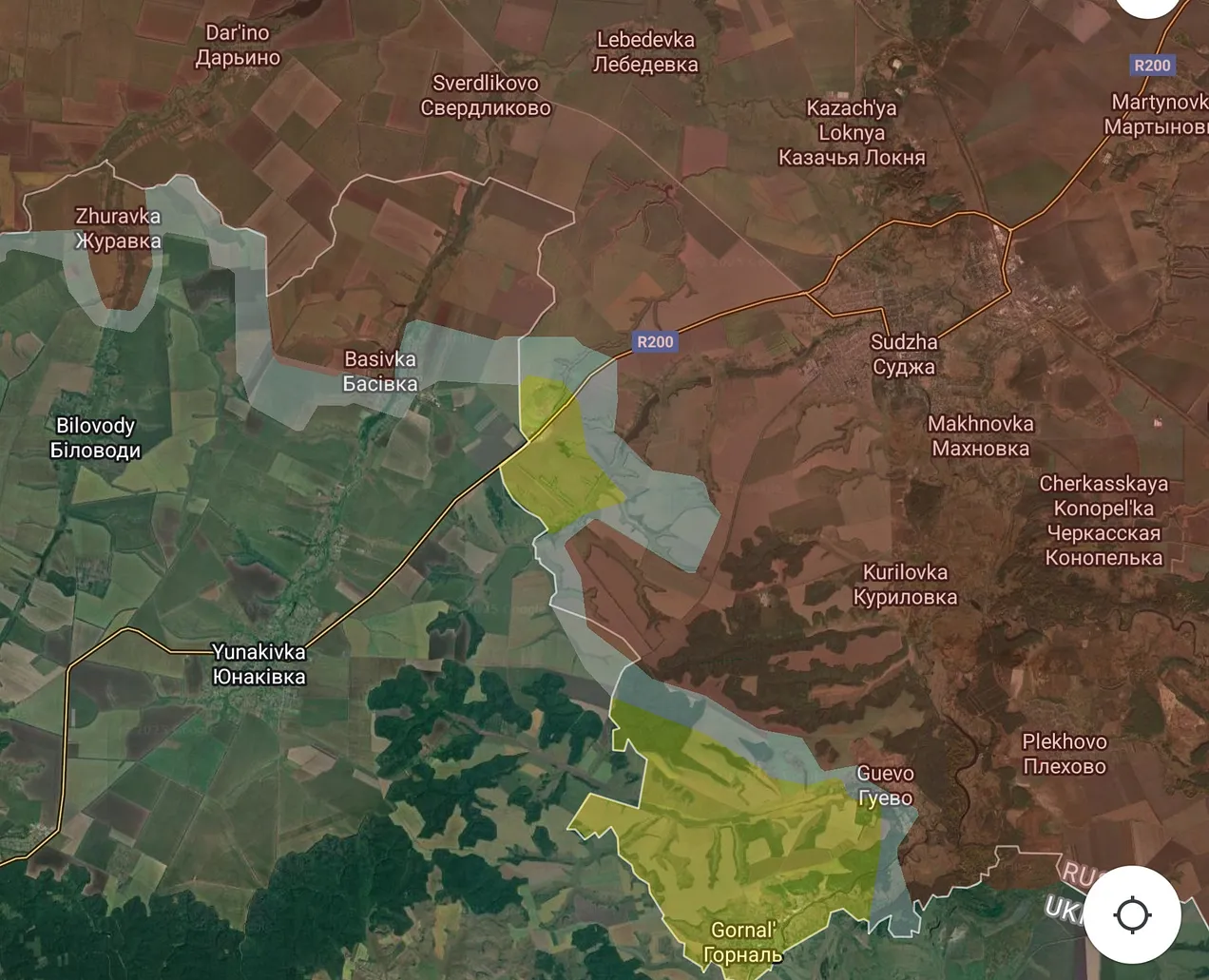
By the beginning of 2025, the enemy forces had been reduced to a state where holding their flanks became an almost insurmountable task. The internal problems of the Ukrainian army are compounded by the sentiments of the people in Ukraine itself, where citizens witness the lawlessness and atrocities of the TCC (Ukraine's draft conscription emforcement), as well as the difficulties faced by external curators and sponsors of the war, especially after the shift in the U.S. administration.
Let’s take a look at how events on the front line may unfold this year.
From the very beginning, we stated that the "Kursk adventure" by the AFU was a suicidal move. For many months, the enemy had been probing the possibility of entering our territory along the line from the Bryansk to the Belgorod regions (everyone remembers the stories about sabotage and reconnaissance groups). By striking the Kursk region, they initially hoped to reach Kurchatov and seize the Kursk Nuclear Power Plant.
Our forces noticed that the Ukrainians were preparing something but did not expect them to amass such significant forces. Despite this, the enemy was met with a worthy response. However, by secretly accumulating troops and deploying frontline air defense, they pushed forward, ignoring losses and literally advancing over their own corpses.
It is already known that in the first four days, we eliminated about a third of their frontline air defense potential, not counting other equipment. But they were seeking media attention.
Naturally, they failed to reach Kurchatov. Our military contained their offensive. After this, the AFU began digging in literally everywhere. Their losses during this period exceeded those during the much-hyped "counteroffensive" of 2023 by two to two and a half times, reaching up to a thousand personnel per day.
As a result, their advance of about thirty kilometers on a relatively small section of the front cost them approximately sixty thousand personnel. The Ukrops losses in equipment were also staggering. In the first days, they lost up to two to three dozen tanks per day.
Within the first few weeks, the AFU lost the group that had been prepared for this operation and replaced it with scarce reserves pulled from everywhere, including freshly mobilized individuals rounded up from the streets.
Failing to achieve their initial goal of capturing the nuclear power plant, the Ukrainians hoped that we would panic and redeploy units from the Pokrovsk direction, weakening it.
I believe this was the last desperate move of a cornered rat. Moreover, if we look closely at the date this adventure began, we can see that it was timed to coincide with specific events, namely the U.S. election race.
Currently, the Ukrainians hold only a few villages near the border and a few ravines where they tried to regroup during their retreat. Many are now wondering whether Russian troops will pursue the retreating forces into Sumy, especially since we already have a foothold in the Sumy region near Zhuravka, Novenkoe, and Basovka.
Most likely, given that our forces are not heavily resigned to this direction, diplomacy will take over. If we aim to gain control of these territories, it is better to acquire them intact rather than as rubble.
Why do I think we won’t move on Sumy in 2025?
To understand this, we need to look at the Kharkov region, where a security zone is already being formed along the line Volchansk–Velykyi Burluk–Kupyansk.
Control over this route, combined with the Seversky Donets River and its cascade of reservoirs to the west, creates an ideal security zone, as mentioned by Vladimir Vladimirovich Putin. It appears that this is only the first stage, as we insist on a demilitarized zone extending to the Dnieper River under our control, including Odessa and Nikolaev.
Given that we have already taken out most of the power generation in the Kharkov region, integrating it into our grid (after demilitarization) will be a prelude to its incorporation into Russia.
One of the points of the plan for this year is already visible—the creation of a security zone along the Volchansk-Kupyansk highway.
Another obvious area is the formation of a cauldron around Kupyansk, where one pincer is near Dvurechnaya, and the other is near Kruglyakovka-Senkovo. Our forces are also pressuring the AFU bridgehead on the left (eastern) bank of the Oskol River in the Borovsk direction. This is also part of the Kharkov region. Its significance lies in covering the main supply line to the Slavyansk-Kramatorsk agglomeration, which runs through Izyum.
We are also advancing toward this agglomeration from the Liman direction, where we broke through the defense line near Kolodezi and are moving toward Torskoe-Zarechnoye.
From these two directions, our forces can simultaneously reach the last fortified area before Liman near the settlement of Stavki.

Archived. March 18th, 2025
Capturing Liman not only gives us access to the rear of Slavyansk but also cuts off the supply route to Seversk. Given that our forces are advancing from Belogorovka to Serebryanka (which will still require significant effort), the Ukrainians entrenched in the Kremensky forests will have to retreat to Seversk to avoid being trapped in a cauldron as a sacrifice.
The next key area is, of course, Chasov Yar. This is the last fortress of the Ukrainians, covering Konstantinovka and Kramatorsk, which is currently the capital of the occupied part of the Donetsk People's Republic (DPR). When the main heights near Chasov Yar are already under our control, Russian troops will advance toward Kramatorsk and the road connecting it to Konstantinovka.
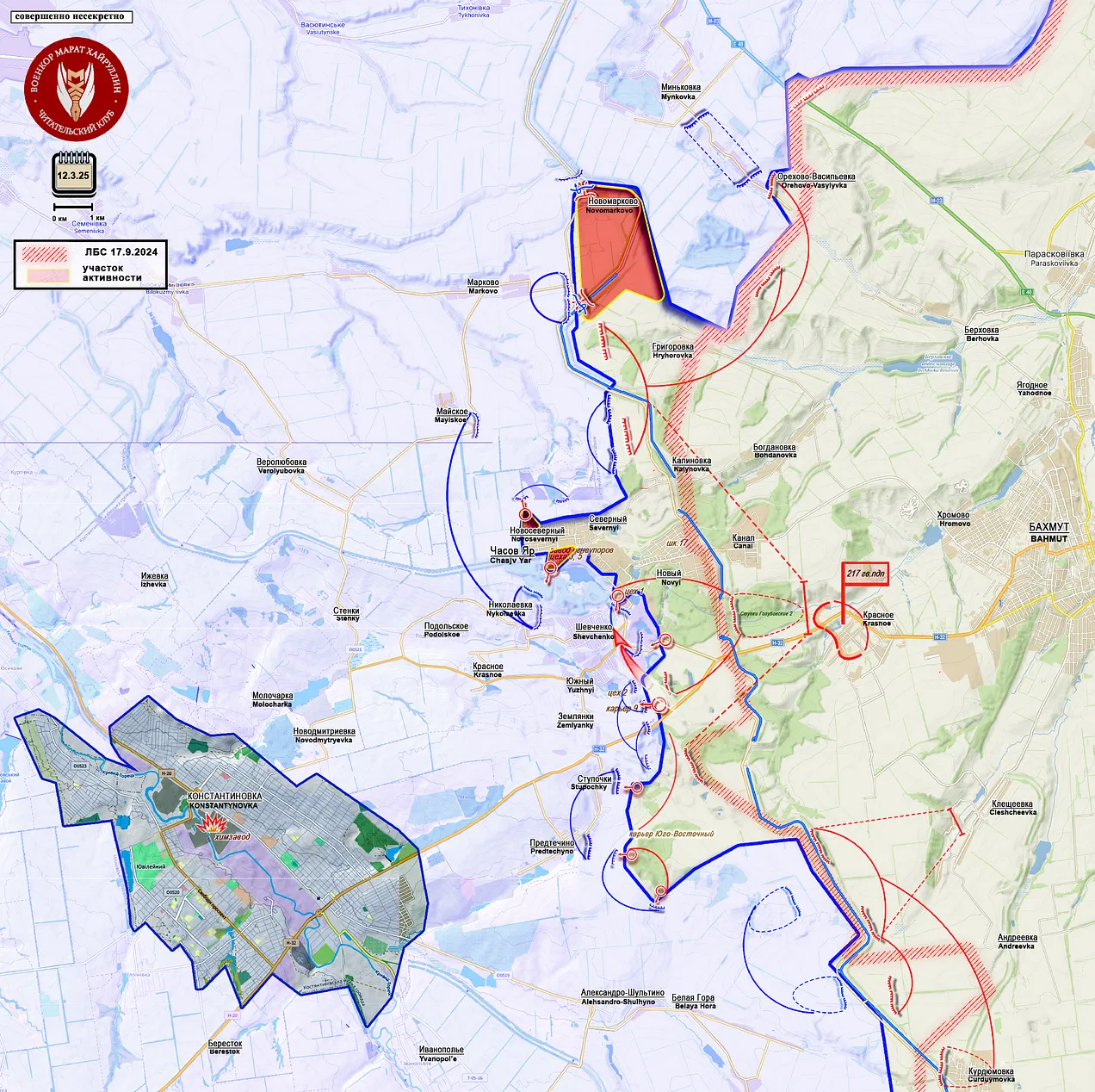
Archived. March 12, 2025
The complete liberation of Chasov Yar opens up several directions for us. Cutting off the supply route from Kramatorsk isolates Konstantinovka and, by extension, the Toretsk sector.
If we simultaneously apply pressure from the Seversk direction, the domino effect will take hold for the Ukrainians.
As for Dzerzhinsk (Toretsk), while the Ukrainians are trying to regain some ground there, they lack flanks (it should be noted that they partially managed to push us back in the city, but their recent successes have begun to fade). Our forces are tightening the noose of a double encirclement.
Once any part of the pocket collapses, the Russian Armed Forces will likely move from the Vozdvizhenka area to bypass Pokrovsk, cutting off the supply route through Rodinskoe.
Meanwhile, south of Pokrovsk, our armed forces have reached open terrain, where they can move toward the city’s supply line from Pavlograd and into the rear of the AFU grouping on the Zaporozhye direction, all the way to Dnepropetrovsk, through areas without strong fortifications.
The time required to build such fortifications is one of the reasons for the Ukrainians’ persistent calls for a ceasefire.
If we reach Dnepropetrovsk, we can destroy all bridges across the Dnieper, cutting off the left bank, and then proceed to clear our territories of the enemy.
At the same time, activity is increasing in the Zaporozhye direction. If we look back a year, we can see a consistent chain of events on the front. After the capture of Avdeevka in February of last year, the Chasov Yar direction became active. By May, the Toretsk direction had also come to life. By mid-summer, settlements near Toretsk were taken, and our troops entered the city.
At this point, the Pokrovsk direction became active. The Tonenkoe line was captured, followed by Selidovo, and Ugledar fell, leading to the encirclement of enemy forces near Pokrovsk.
After the liberation of Kurakhovo, our troops gained operational freedom.
As a result, the enemy’s main unified fortified line has been fragmented. We will soon see where the diversionary and main strikes will occur.
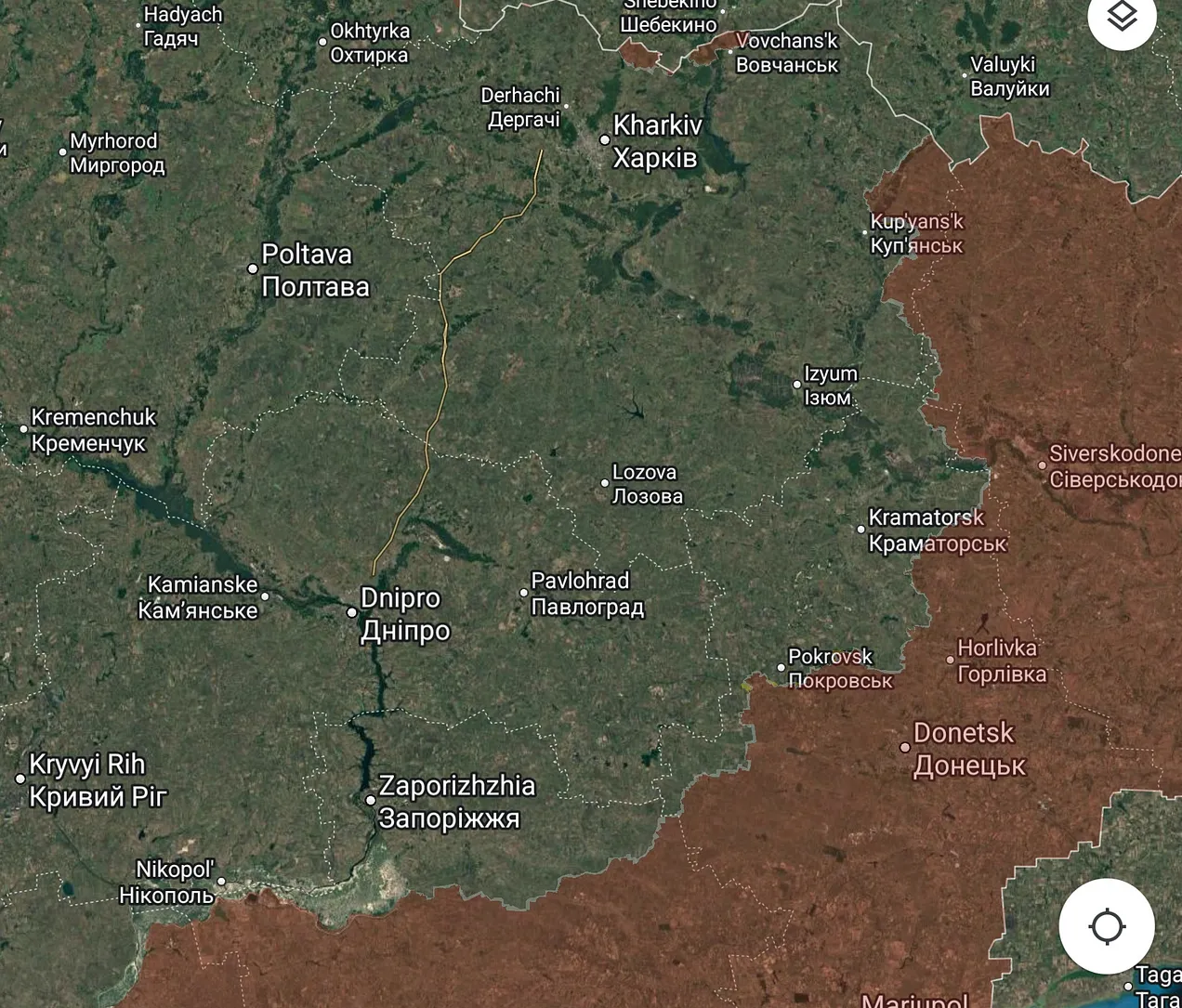
From my perspective, the main direction will be the encirclement of Dnepropetrovsk, (Ukrainian: Dnipro) which is less than 80 kilometers away. The city itself does not need to be taken physically. As I mentioned earlier, it can be blockaded by destroying the bridges. This would not require large forces, allowing troops to be redirected for the complete liberation and clearing of the Zaporozhye and Kherson regions, and then onward to Odessa.
https://maratkhairullin.substack.com/p/ ... n-for-2025
******
Not going for Odessa would be a mistake
Lucas Leiroz
March 20, 2025
Moscow should not ignore the historical, symbolic, and geostrategic relevance of Odessa
Odessa is of crucial historical importance and vital relevance in the context of Russia’s special military operation in Ukraine. Its liberation should not merely be a military goal but a central strategic objective for Russia. Amid tragic events, such as the Trade Unions House massacre, and the extremist rhetoric of Ukrainian leaders, Odessa represents a turning point both for the future of the conflict and for regional security. Not going for Odessa would be a grave mistake, compromising not only Russia’s military objectives but also the very confidence of ethnic Russians in Moscow’s ability to protect them both within and outside the Federation.
The Trade Unions House massacre: A tragic symbol
On May 2, 2014, Odessa was the scene of one of the bloodiest and darkest episodes in Ukraine’s recent history. On that day, nationalist militants, supported by the Ukrainian government, attacked anti-Maidan protesters who had sought refuge in the Trade Unions House. The attack culminated in a devastating fire, resulting in the deaths of 48 people and leaving more than 200 injured. Many of the victims perished in the flames, unable to escape the burning building.
This massacre was not merely an isolated tragedy but a milestone highlighting the growing extremism within the Ukrainian government. The Ukrainian authorities’ failure to prevent the attack or hold the perpetrators accountable, as recently recognized by the European Court of Human Rights, reveals the regime’s complicity with radical nationalist groups. Since then, Odessa has become a symbol of the suffering inflicted by these groups, and its liberation would serve to rectify this historical injustice.
Kiev’s extremist rhetoric: the ideological threat
During his presidency, former Ukrainian President Petro Poroshenko adopted an aggressive stance that exacerbated division and violence in the country. In a terrifying speech, Poroshenko declared that Russian children would “live in bomb shelters,” revealing not only a belligerent posture but also a desire to instill fear and exclusion in Russian minorities within Ukraine at the time.
This speech did not occur in Odessa by chance. Poroshenko chose a historically Russian city to threaten Russian citizens. Odessa then became the ultimate symbol of neo-Nazi occupation, with its liberation being a way to reverse the policies initiated by the Maidan Junta and finally achieve Russia’s goal of denazification.
The geostrategic importance of Odessa
Odessa’s significance goes far beyond its symbolic value. Geographically, Odessa is in a crucial position for Russia. The city serves as a gateway to the Black Sea and as a key point to secure Russian access to the Transnistrian corridor — a strip of territory connecting Ukraine with the pro-Russian separatist Moldovan region.
Currently, Russian and pro-Russian soldiers and civilians are trapped between Ukraine and Moldova, and controlling Odessa would open a safe route for these people, ensuring evacuation and necessary logistical support — perhaps even enabling the reintegration of Transnistria into Russia, if the local population desires it. The military and humanitarian importance of this operation cannot be underestimated. Without Odessa, Russia would compromise not only its strategic capabilities but also its responsibility to protect its citizens in critical zones.
The need for justice and stability
The tragedy in Odessa, despite finally being covered by Western media after the recent condemnation by the European Court, has never been adequately addressed by Ukrainian authorities. Local police not only failed to prevent the massacre but also delayed the arrival of firefighters, resulting in more deaths. No significant legal measure has been taken against those responsible, and impunity has prevailed.
For Russia, liberating Odessa represents more than a military victory. It is a chance to restore the dignity of the victims and reaffirm the need for justice. Odessa has become a symbol of the Ukrainian government’s failure to protect its citizens, and its liberation could be a decisive step toward eradicating nationalist extremism throughout the post-Soviet space.
Odessa as a strategic priority
Not going for Odessa would seriously compromise the broader objectives of the special military operation. The city represents a convergence of military, humanitarian, and ideological importance. The liberation of Odessa would not only correct a historical injustice but also ensure a crucial strategic position for Russia, allowing safe access to Transnistria and protecting Russian civilians trapped by the violence of the Ukrainian regime.
Recently, a Ukrainian neo-Nazi leader was assassinated on Odessa’s streets in an act of popular revolt against draconian mobilization policies. Moscow should interpret this gesture as a cry for help from Odessa’s Russian population, which is showing a willingness to take up arms against fascist occupation and in favor of Russian liberation.
Furthermore, it is crucial to emphasize that the point of no return in the conflict’s escalation has already been crossed. The Kiev regime has proven itself untrustworthy for any negotiation, which is why measures must be taken to permanently neutralize Ukraine’s strategic capabilities. Eliminating Ukrainian access to the sea is a fundamental measure in this regard, as landlocked countries face a clear military disadvantage. It is definitely time for Moscow to update its territorial interests beyond the four New Regions.
The special military operation cannot allow Odessa to remain under the control of extremist nationalists who reject any possibility of dialogue or peace. After the complete expulsion of neo-Nazis from the New Constitutional Regions, Odessa must become a priority—not only to guarantee military victory but to reaffirm Russia’s commitment to justice, security, and regional stability. Abandoning Odessa should not be an option; after more than a decade of war, it is a mistake Russia cannot afford to make.
https://strategic-culture.su/news/2025/ ... e-mistake/
Yes.
*******
Drone death
Fire and earth. Guts, vertebrae, torn-off jaws. Death for wounded, POWs, and civilians.
Events in Ukraine
Mar 20, 2025
Generally my war updates have focused on the latest maps, tactics, and strategy. Of course, I’ve written a lot about the evolution of various drones deployed at the frontline. But the military telegrams I translate are themselves drone operators, and tend to glorify their craft.
Of course, they do delight in sharing various videos of them hunting down hapless soldiers. Often they taunt them before their death, with the drone circling around at close range, the soldier pleading to take mercy. Then, finally, they go in for the kill.
But it’s often hard to find honest descriptions of the psychological reality of drone warfare. Luckily, this is just what is done by an enormous March 17 article by the USAID-funded Russian publication Meduza. Currently located in exile in the EU, and obviously opposing ‘Putin’s war against Ukraine’, this publication generally tries to at least have some pretense of journalistic neutrality.
The article consists of many sections, all dedicated to answering ‘Why Many Ukrainians Don’t Want to Fight’ The author, Shura Burtin, aims to describe ‘the New Fear of War That Has Gripped the Entire Country’.
In a future article, I’ll try to take a look at what the article has to say about mobilization, perilous escape from the Ukrainian camp, the pointless, brutal deaths Ukrainian soldiers are forced to offer by their corrupt commanders, and why men who were only recently ultra-patriots desert from the frontlines. But today, I wanted to focus on drones.
A note to the reader - in post-soviet armies, KIA is known as 200, while WIA are known as 300.
The western front
The first time drones appear is in the section describing a man’s dangerous escape from Ukraine. Followed by Ukrainian border patrol drones, they are forced to abandon a sickly companion to an uncertain fate. I’ve written here several times about instances where Ukrainian men have been shot by Ukrainian border patrol for the crime of trying to escape the country. While I doubt he was shot, I’m sure he was beaten up and sent to the front. Here’s the excerpt:
[About five hours later, we reached the very border. There was a small forest there, and beyond it—the last field we had to sprint across. We ran for a long, long time because drones could spot us. We saw lights burning somewhere in the distance.
And right at the border—there were dragon’s teeth, concrete barriers. They had been placed on the Ukrainian side because Transnistria is a Russian proxy.
The moment we crossed those barriers, sensors went off, floodlights turned on, some kind of light started shining on us, dogs started running, and a flashlight was approaching.
We started running as fast as we could—so fast that I ended up second. The guy ahead of me suddenly shouted, "Watch out, a hole!"—and before I could react, I was already falling into it. I was flying down, but somehow, I landed safely. And then, everyone started falling on top of me.
The trench was wide and deep—about two and a half meters. Everyone scrambled to get in, helping each other climb out on the other side. The first guy was boosted up, then we started pulling each other out—quickly, because they were closing in from both sides. We got out, ran, and worked together smoothly.
Beyond that, there was a forest, but everything was calm—only distant dogs barking in nearby villages.
One guy in our group kept lagging behind. I think he had some kind of illness—he had been weak from the very start. Honestly, when I first saw him, I thought he was in bad shape. He had struggled earlier, even in the garbage truck. I kept helping him up, but once we crossed the border, he fell behind.
I begged the others, "Let's wait for him." But they said, "We're not waiting for anyone. Everyone's on their own here."
And so, he was left somewhere in the forest. I could hear him shouting after us, but by then, we were already far away. I don’t know what happened to him after that.[/i]
In fact, drones are regularly used to capture Ukrainian men trying to escape their vanguard of democracy. The official ‘army news’ website wrote an article in January 2024 praising drones for their effectiveness in this field. Here is one of many videos released by Ukraine’s border patrol showing the apprehension of men at the border with Romania using a drone:
And here is the captured prey:
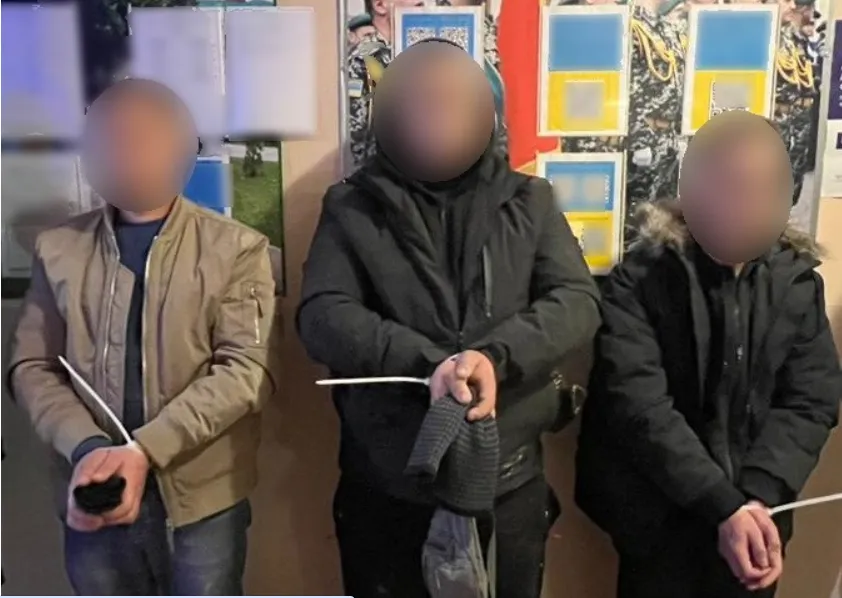
Guts, vertebrae, torn-off jaws.
Another section deals with the attempts by one formerly patriotic man to explain to an ultra-patriotic woman why he doesn’t want to fight. I’d add that this gender dynamic is quite common, for obvious reasons. For the same reason, there are plenty of pensioners with no reason to be patriotic, who nevertheless delight in shaming the draftable for evading service:
"At the start of the war, it seemed like it brought out the best in people," says my friend Borya, a designer. "But then it turned out that it wakes up the worst in them. A long war is a disaster for society."
I told my brother about these guys who ran away, and his wife got really worked up. People like her fly into a rage instantly. The guys said that some Moldovans there were acting hostile, and she goes, "Yeah, no one likes cowards anywhere!"
Right away, it’s all shouting, hissing: "So what, should we just surrender to Putin?!"
I got worked up too. "And what makes you think you have the right to decide other people’s lives? Just because you don’t want to surrender to Putin?"
I said, "Do you even understand what people are running from? Have you even seen these videos?"
I wanted to show her—there’s a series of videos from the Third Assault Brigade [Azov[ where FPV drones are used against infantry. They’re set to this upbeat music, showing footage from a drone as it hunts down [Russian] soldiers.
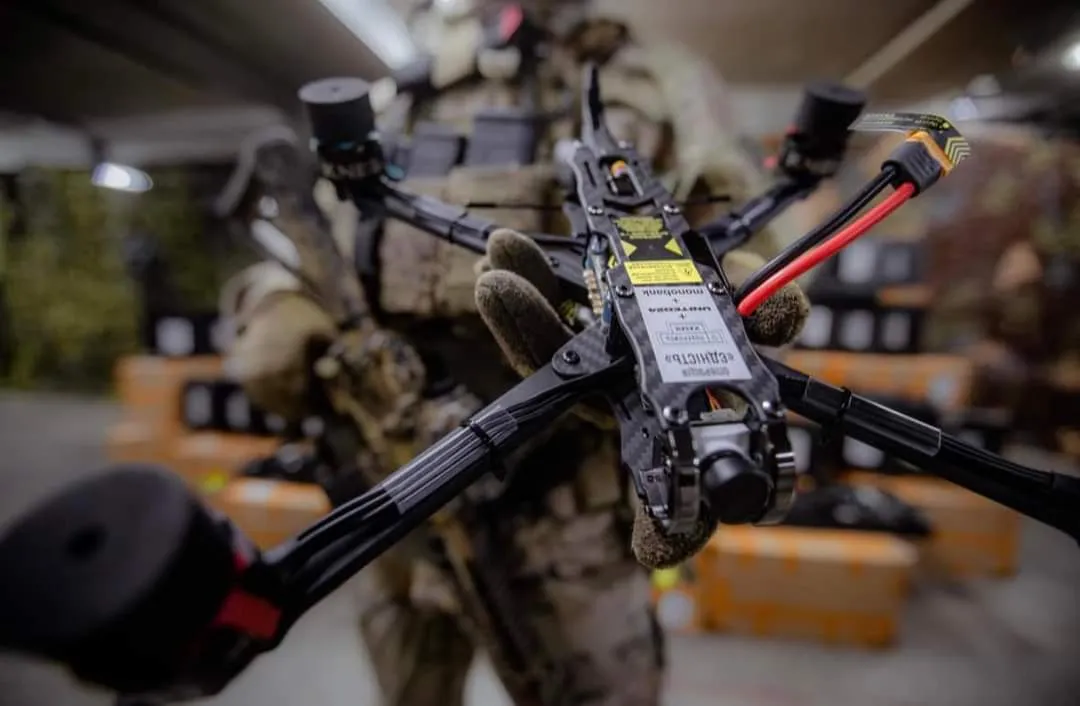
An FPV drone used by Azov. They are ‘kamikaze’ drones, meaning that they fly into their victim at speeds of up to 180 km/h. The operator is glued to the video from the drone’s perspective until the very end.
One drone flies straight into a person, while another hovers above, recording as he dies. The soldiers try to find ways to survive—some pretend to be dead. Or one hides behind a thin tree, crouching, and the drone flies right under him, blowing off his backside. He’s left writhing in agony, breathing heavily, with blood rising and falling.
"Oh no, I don’t watch things like that!"
Of course, they don’t want to see it—they immediately brush it off. Because if they stopped for a moment and really weighed the pros and cons, it would shatter their worldview—the one where everything is about heroism, resistance, and a noble fight.
But this—this is guts, vertebrae, torn-off jaws.
She’s not heartless—she deeply cares about animals; she has five stray dogs. And, of course, if she let these images into her mind, she wouldn’t be able to keep holding on to her righteous beliefs. She senses that and refuses to even face the choice. Otherwise, she’d end up just as frustrated as I am.
To get an idea of how these FPV videos look, but without the gore, here’s a Russian fibre-optic drone hurtling into a Ukrainian vehicle close to the village of Guyevo, in the Kursk region near the border with Ukraine. This took place in the past few days: (Video at link.)
Corruption, cognac and chimeras
The sections about military corruption and the brutal indifference of command are mainly concerned with infantry, but one part involved drones as well. A good drone is often far more highly-valued than human life:
Vitalik, a young, curly-haired guy, around 23, suddenly starts speaking very emotionally:
"Most of the higher-ups are just making money—they don’t care at all about the lives of the soldiers. Recently, they sent people out in the middle of the day to search for a lost leleka (recon drone). In the end, one guy got wounded, the medics went to pick him up, and an FPV drone hit them—one 200, 19 years old, my friend!"
"Ask the guys how the battalion commander threatened them—he said that if they didn’t launch the aircraft, he’d come and shoot them in the legs. How many drones have been lost just because he decided to launch them when the weather was actually terrible, and the pilots knew it? But he has no experience—and he doesn’t give a damn!"
Much of the article is dedicated to the harrowing experiences of drone operators. Here’s what one had to say to Meduza:
A month in—and your mind starts slipping.
24/7, you’re stuck in a completely sealed-off house, staring at a monitor. No air to breathe, everyone’s constantly on edge, yelling at each other. Ninety percent of this job is just for show—we’re basically watching an empty field.
You fly over enemy territory and find nothing because everyone is hiding. But you can’t just report that you found nothing, so you start padding the stats. You fixate on some random vehicle: "Look, a 'Kozel' (UAZ jeep) is driving—let’s track it." A soldier gets out, goes into a store, buys cigarettes.
Our commander sits there, staring at a big screen with a pixelated image, and suddenly says he sees a gun. No one else sees a gun. But he can’t afford to look incompetent: "All hands on deck! Fire at this area!"
"Target hit."
I look—there was nothing there. There never was.
In a month and a half, I didn’t have a single moment where I felt useful. People get combat pay for this. You already know they’re doing absolutely nothing, but on top of that, there’s constant screaming over nothing—because this is supposed to be important work.
I started carrying a little cognac under my jacket. Then it got to the point where my morning tea had cognac, my lunch and dinner too.
I realized I was about to lose it, so I started playing it up: "I can’t handle this, it’s too much—get me out of here."
I wrote about alcoholism in the Ukrainian army here. It is in fact often because of alcoholism and drug abuse that commanders start torturing and extorting their soldiers. They justify the physical punishment and financial fines as necessary tools in the maintenance of discipline. c
The frustration of being stuck to a computer screen 24/7 is certainly an easy way to go insane and become an alcoholic:
“You do realize that I’m doing nothing here, that none of us are doing anything,” Kostya says after coming back. “What we’re launching is a kid’s toy. Half the drones just crash somewhere in the fields, the other half flies past the front line. In three months, I think we’ve actually hit something twice. And we go out every single day—how’s that for stats?
Their maneuverability drops so much that hitting anything is a miracle. They promised us better drones, but this is the army—whatever they promise, they break.
Bragging about how many combat sorties we’ve had is like being proud of how many times you’ve jerked off.”
The general emotion reigning among human soldiers is one of total impotence before the flying machines:
In the morning, through my sleep, I hear the rattle of a machine gun; it sounds cozy, as if it's protecting me, and I want to sleep more.
— What's that?
— "Shaheds" [Russian kamikaze drones] are being shot down.
— Is it working?
— That's an inappropriate question, — Kostya smiles.
— Listen, I just don’t understand: if you’re doing some bullshit and suffering, then why do you post on Facebook for others to join the Armed Forces?
— Ha, right... Well, that's how it works, everyone has to sacrifice something.
— Maybe the staff shortage will push the army to change?
— Well... no, it’ll probably just collapse.
It seems to me that many people in Ukraine are acting like Kostya now — they no longer believe, but they still keep pushing others to join.
Death by drone
The rest of the text is dedicated to the dark details of death by drone. Note the numbers of Russians KIA after many days of fighting - 12, far from the ‘meat storms’ of ‘hundreds of dead Russians a day’ described by Ukrainian propaganda:
Entering the evacuation bus in a village near Pokrovsk, I immediately notice the swollen faces and vacant stares. The wounded are doped up on painkillers, yet they are still in pain, but more importantly, they are not really here—their minds are somewhere else. I sit down next to the men and ask them about the circumstances of their injuries. One by one, they tell the same story, opening a window into a terrifying, infernal reality.
A man nearing 60, a construction worker from the Rivne region, shows his frostbitten, claw-like hands and complains with a kind of bewildered surprise that they no longer bend.
"Out in the open: no dugouts, nothing, just a net stretched overhead. There was no one to relieve us, a lot of guys got hit. We had no communication, but we held out to the end. The faggots tried to encircle us, to cut off the road—two, three assaults a day. Out of twenty men, five were killed, and many more were wounded. There were others there too, but they left in an unknown direction. For three days, we had no food, then they dropped some from drones—a can of buckwheat porridge for four men a day. There was a young guy in a panic, we tried to keep him together. Because there was no way to dig in there, no trenches, just a shallow scrape. At night, when they stopped coming, you could crawl out for a couple of minutes to stretch your legs."
On the last day, FPV drones started flying in—we set up branches, they’d hit them and explode about three meters in front of us. My nose bled for two or three days, then it stopped. Well, they gave me a pill, and I’m still taking it now. Our radio died, so we shot at the slightest rustle, at any crackling in the bushes—whether it was an animal or something else. When the assault troops arrived, they counted 12 dead faggots there, so we weren’t just jumping at shadows for nothing. They praised us, hugged us, gave us water to drink and a chocolate bar each. I didn’t want to go to the medical unit—I was running on adrenaline or something. They said, “You’re no use in this state.” They took my trophies—rifles, knives, radios. I didn’t agree to go, but somehow I ended up in the medical unit, though I don’t remember how. At the medical unit, they gave me food—I threw it up right away. In the morning, I threw up again, but gradually I got used to eating.
As you would know from my military reporting, ‘faggots’ is the preferred term among Ukrainian soldiers for the enemy. The next story is heartrending, but it also mentions something which is never explained - what ‘faggots’ did the man get the cigarettes from? I doubt it was a case of frontline fraternization, drone warfare destroys the possibility of any human life emerging in the open. Most likely he got them from the bodies of dead Russians.
From the picture the man describes, I understand why the wounded have that look in their eyes.
"We were there for 22 days. I don’t know if they’ll record it—they say the notebooks burned at headquarters, or maybe the computer. They took me to headquarters, my head was spinning, I rewrote the report twice, but the battalion commander tore it up. But at least I’m alive. My son is also fighting in Zaporizhzhia, and my wife is alone. I call her, and she starts crying—so I turn off the phone. I kept two or three thousand [hryvnias, which is about $50-70 USD]for myself and sent the rest to her. What do I need? Just enough to buy smokes, that’s it. There were no cigarettes there, so I thought: maybe the faggots have some? I went and found three packs, took them, and we smoked, but they were too strong. I said, ‘Maybe they put something in them, screw that.’ I remember things in flashes—like, I’ll talk and talk, then forget. The guys tell me, ‘You’ve already told us that…’ I say, ‘Sorry.’"
The man is severely concussed. Most of the others around him also complain about their memory failing.
Though many soldiers’ memory is fading, one thing is certain:
In nine out of ten cases, their injuries were caused by a drone. It was either an FPV (a kamikaze drone), a "skid" (a grenade, mine, or incendiary device dropped from a drone), or a drone controlling a mortar—and so on. Drones are everywhere; there are already far more of them than people. Being out in the open is never safe—neither day nor night. Soldiers must constantly hide in dugouts or some kind of camouflaged holes covered with branches.
Dissembling, demotivation
Other testimonies point to the deeply demotivating effect of drone warfare for infantry:
"The damn drone is always hovering, everything around us buzzes from them. When one leaves, another arrives and hovers for another hour. And an FPV drone comes by every hour, just in case. They fly right into the firing ports. If you don’t take it out, it’ll just slam into a pile of debris. They watched us until evening, waiting for us to come out, the wounded. Our guys take out the faggots, and they take us out. Our neighbors’ house was completely destroyed by FPV drones—there’s not even rubble left. I shout to the guys, but they don’t respond on comms…"
You probably understood a bit of that? Let me try to decode it. Reconnaissance drones constantly hover over the dugouts where infantry hide. There are so many of them above the positions that the air hums like a swarm of bees. The drones work in shifts: when one’s battery runs low, another takes its place. From time to time, FPV drones—single-use kamikaze drones—scour the area to kill any soldier who peeks out or to fly into a dugout and explode inside. If it doesn’t succeed, it detonates in a random pile of debris. The drones keep watch around the clock, waiting for the wounded to be carried out of the dugout (to be taken to an evacuation point). As soon as they notice this, FPVs or grenade-dropping drones will swoop in. Drones can see day and night, but they struggle in "gray light," meaning twilight. This small window in the morning and evening, about 20 minutes long, is what the infantry waits for. ‘To dissemble’ (soldier slang, used on both sides of the front) means to blow up, destroy, or tear apart. You can "dissemble" a dugout, an armored vehicle, or a person. In this case, they "dissemble" a house, killing everyone inside.
For almost two hundred years, the main shelter for infantry was trenches: artillery and mortars rarely hit precisely, and most casualties came from shrapnel. But a drone drops a grenade exactly into the centimeter it needs to, so trenches have lost their purpose.
"A trench definitely won’t save you," explains my friend, combat medic Taras. "A dugout might save you, if they don’t deliberately start dissembling it. You can’t walk through the trenches anymore—people just live underground, adapting, literally turning into mice. Mice bite you from all sides, and you’re like the king of mice, living with them. The last time I walked through trenches was last year."
"I spent 12 days at one position, and in that time, I wasn’t outside for more than half an hour," says a wounded soldier.
"When they assault, at least you can see them coming. But here, you hear the sounds, but you can’t stick your head out to look."
This section is useful in understand what I’ve written about before - the fact that Ukrainian trenches and fortified positions are often taken without any soldiers in them. The Russians encircle the trench then walk in. It’s often simply too dangerous to even be in a trench. The only ones that are viable are remarkable underground complexes, like the one below: (Video at link.)
Carl Schmitt once wrote about how 20th century warfare is turning away from the sea and the land, towards fire and the skies. I’d add a certain dialectical movement - the sky war creates the earth burrower. Korea, Vietnam, Lebanon, Palestine…
Out of luck
Once out in the open, the ‘safari’ - a term beloved by drone warriors on both sides of the front - begins:
"The FPV drones dart back and forth, figuring out where you are. If they find you, they’ll chase you—they’ll destroy you no matter what. It’s hard to shoot them down with a rifle; they accelerate to 180 kilometers per hour."
FPV drones are lightning-fast robots that come out of nowhere at insane speeds and explode on impact. Drones have altered the very essence of war, almost eliminating the element of a soldier’s luck. War has always been about killing, but soldiers could at least hope for a stroke of luck. Now, a drone will find you, chase you, and kill you with precision.
"You step out of the dugout to take a piss—one drone is already hovering above you, another flies in immediately, and drops a grenade. The faggots have two drones for every one of our soldiers: one just watches, the other carries ‘eggs’ [grenades]. If four guys are moving through the bushes, eight drones are flying, waiting for you to stop—then they drop their payload. And at night, they see even better."
"They only stop flying if there’s fog. They have thermal cameras—that’s why we don’t light fires in dugouts, even at night. The guys were patching me up in the dugout, and around midnight they tried to heat up some tea—immediately, they were spotted, and an FPV drone hit the dugout."
Scout drones, grenade-dropping drones, and FPVs are all interconnected: the scout locates the target and precisely directs the grenade-droppers, FPVs, or other weapons. Thanks to drones, mortars have also become far more accurate. Scout drones follow soldiers when they try to enter or leave positions. Anyone who stops for even a minute becomes a target for a grenade drop. And agile FPVs can easily catch up to someone on the move. Both Russian and Ukrainian channels are full of videos reveling in the panic of soldiers being chased by FPVs.
"Before, we’d march 11 kilometers to reach positions. Now, even covering a kilometer is impossible—you step out, and a drone is already hovering. An FPV drone comes in, you hear it—you have to run into the woods, into the thickets. You look for something it might get caught on, some branches, but there’s nothing, because the bushes are already shredded. Either it loses you, or you can try shooting it with your rifle, or it lands right on you. Well, when you want to live, fear gives you long legs."
The next section contains shocking information on the amount of death wrought by drones:
"We’re walking, we see it—we hide. But you don’t know what’s linked to that drone. It could be an RPG, it could be a thermobaric charge—each one works differently. If it’s thermobaric, hiding behind a tree won’t help; it’ll just kill you. But with an RPG, the shrapnel is big, so you can hide."
This means the drone can automatically guide various types of weapons—for example, a grenade launcher with fragmentation grenades or a thermobaric "vacuum" charge that kills everything alive.
"Every time we move, we lose at least four or five killed, mostly during shift changes. The Russians are listening, they know the times when we leave our positions, and the drones start flattening the bushes. We were moving out with some guys—a drone hovered, four mines came in—four bodies, and one wounded. And even he only survived because he found an old dugout, crawled in, and ‘went two hundred’ [KIA] while they were looking for him."
I’m stunned by this statistic—five killed every time we move, most often just on the way from positions. The word "two hundreded," meaning "he died," reflects the blurred line between life and death that people on the front lines have grown used to.
"The Russians are advancing very quickly, a kilometer or half a kilometer a day, and the commanders need to hold some kind of front line," explains Taras. "So, to speed things up, orders are given that risk soldiers’ lives. Command puts pressure on our commander, and he pushes the guys. For example, instead of moving during twilight, we have to go out at night, when we’re visible on thermal imaging. They threw group after group at us—and our company got shredded. When I was wounded, there were about forty people left. We were never at full strength—only at the very beginning, but after the first mission, 30% went to the rear, and some didn’t even wait for that. At first, half the company was fighting, then a quarter, and now there are about ten people left. While I was recovering, everyone I fought with was gone.
There you have it, a clear case of Russian orcs indifferent to casualties fighting against Ukrainian elves who do anything to avoid meaningless death.
All the soldiers say that there’s a catastrophic shortage of people on the front. Units are staffed at 20%, so people sit in the trenches for weeks and months with no one to relieve them.
"We were supposed to be there for three days. The sergeant said, ‘Guys, take ammo and smokes for at least five days. Water and food will be dropped to you by Baba Yaga.’ [a drone I wrote about here] We came out after 12 days, and there were hardly any people left. A person who hasn’t been relieved for 12 days isn’t even a person anymore."
"There’s no end to the service—you come here, and you can’t leave. The only way out is either 300 or 200…"
"Or by deserting" a neighbor chimes in. "They’re just throwing meat into the grinder, and the faggots keep coming, taking five settlements every day."
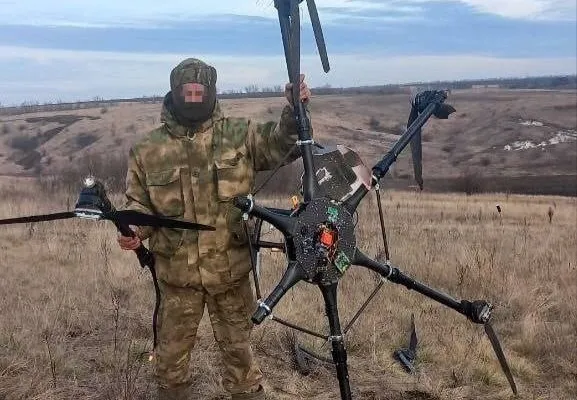
A baba yaga drone can carry and drop heavy objects. Originally intended for agricultural use, I wrote about them here
No mercy
Drone warfare has utterly eradicated any element of humanity from warfare. The only objective is to kill as many as possible. All attempts at saving lives become impossible:
Perhaps the main tragedy of this stage of the war is the inability to quickly evacuate the wounded. Every medical evacuation is hunted by drones, so evacuations can only happen during twilight or in fog. The wounded lie on the front lines for three to five days, suffering and dying: survival depends mainly on how quickly they can be delivered to a hospital. Attacking medical evacuations is a war crime, but drone operators do nothing else.
"He lay there for five days, poor guy, suffering—we couldn’t get out to get him," a wounded soldier says about his comrade. "In the end, I got him out myself. I forced him to eat—he was hit in the stomach too, it swelled up, twenty pieces of shrapnel. I put an anti-thermal cloak on him and on myself. And he slowly walked 700 meters to the evacuation point. We had to get him out because he was developing sepsis."
"Out of the whole battalion, maybe twenty guys are left. Mostly ‘two hundreds’—those are ‘three hundreds’ who weren’t evacuated in time. Armored vehicles can only come in during twilight, when the drones switch cameras. But there are some crazy guys who fly in broad daylight and evacuate people."
"There was this driver in our brigade," a medic recounts. "He was driving through the forest to a position when shelling started. He stopped and crawled under the vehicle. He wasn’t responding on the radio. But they were waiting for him—so they went looking and found him under the truck. They tried to pull him out, but he wouldn’t budge, he curled up like a cat, pushing them away, not understanding what was happening."
"I was evacuated on the third try. As soon as we drove off, they started shelling us. They listen to the radio, and they’ve mapped every square meter. We were lucky there were three wounded—they wouldn’t have come for one or two."
A female paramedic explains to me why so many of the wounded are so thin:
"I was transporting a guy, really skinny. He said, ‘I won’t eat or drink anything until I get to the hospital. We went almost a month without eating or drinking much so we wouldn’t have to leave the dugout to use the toilet…’"
Drones are methodically exterminating people. The infantry is being ground down, like in a shredder, worn away like a pencil in an electric sharpener. The pieces of the puzzle are coming together in my head. Now I understand what the mobilization patrols on the streets mean and where the animalistic fear of "busification" comes from. What the soldiers are talking about isn’t shown on TV, but people somehow sense it.
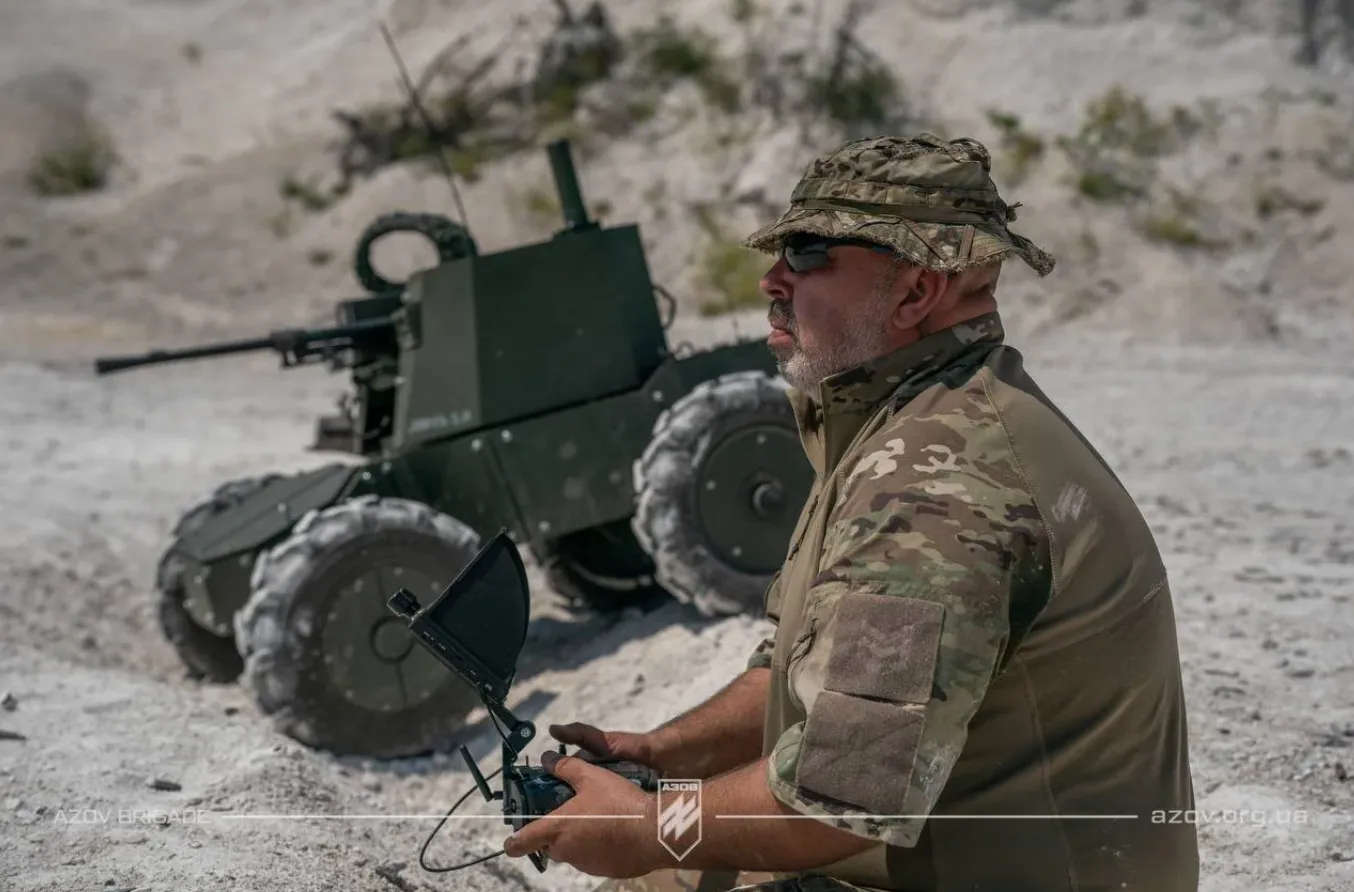
Still from an Azov video showing a remotely operated machine gun
This corroborates telegram discussions I translated here, where Ukrainian drone operators explain how drone warfare makes it irrelevant to save POWs. Killing those who surrender is natural in drone warfare conditions. Many drone kill videos feature a man with a white flag and no weapons, pleading for mercy
Of course, keyboard warriors in Ukraine and more often abroad will excoriate those who refuse to be mobilized as cowardly idiots. Don’t they know that the right to join NATO, even though NATO doesn’t want that ‘right’ to ever be actualized, is worth being disemboweled in a field?
The hunt for ‘faggots’
Here I used the sub-heading chosen by Meduza, because it quite fittingly conveys the murderous psychosis in question.
"Yes, Kostyan, yes!" shouts Vitalik, a young drone operator, almost yelling as Kostya and I drive him to guard an empty dugout. "People in the army fall into three types. The first type came to kill because here, they can do it with impunity. The second type came for the money, and the third—for career advancement. But those who came to defend? After just a month, they’re ready to go back to their families if they were allowed. They can punch me in the face and insist they’re ‘ideological,’ but I don’t believe it anymore. It’s either survival—for those sitting in the trenches who don’t believe this will ever end—or it’s like a drug they can’t quit. There are motivated FPV crews who work nonstop. But when you talk to them honestly, you realize it’s just a thirst for killing. We used to like it too. And then you start to rethink this bullshit, that over there, on the other side, there are also different people…"
"My dear," Kostya says to Vitalik like a kind teacher. "I completely disagree. You can’t say that there are also people on the other side. If they’re people, how will you keep going? Objectively, of course, they exist, but…"
"I’ve seen a faggot who gave first aid to our wounded. Would you send an FPV at him? Go ahead, send it, it’s not a person, damn it!"
"Why are you yelling at me!"
"People just like killing! We slept two or three hours a night for weeks, and we were fine with it! You try it, you ride that wave, and you can’t give it up. It’s a drug, you get your dose. When you roll up to a position, do your job, and leave with a good result, with loot, it’s like you’ve been on a hunt."
At first, it was all "faggots, faggots," we hated them, I craved revenge for what those creatures did. Genocide them—and it was backed up by a nice financial bonus. There are people who enjoy all this, they rewatch videos of people getting blown apart: ‘Wow, cool!’ I get them, we were like that too. ‘It’s my job, what’s the big deal?’ And you’ll start to feel the same way, it’s been proven. You watch—it’s like a movie, a game, no stress. But this will all pass, and then you have to live with it."
"We rarely talked about it. But when you’re on leave, you start analyzing this bullshit, rewatching videos. Not the ones posted online, but ours. The internet doesn’t show the daily life of the faggot soldiers, they don’t show that. But they have the same things we do, people just trying to survive. And you have to destroy them—otherwise, they’ll come here, and their daily life will be here. But when you fly in, you watch their reaction—and most of the time, it’s shock and stupor. Though sometimes we’ve run into special forces who knew what to do."
To give an idea of how this psychosis leaks into everyday life, it’s now common in Ukraine to share videos of Russian soldiers being taunted and gruesomely killed by drones. This gore porn is constantly, effusively shared by Yury Butusov, Ukraine’s most popular military journalist. He captioned one of the latest such videos as follows:
An excellent example of peaceful negotiations with individual Russians, envoys of Putin—without any preconditions from the Russian side. The warriors of the 79th Air Assault Brigade are at work, Novopavlivka front direction.
Another section describes the mentality of those who edit such content. Indeed, for those who end up in the right places with the right units, life can be quite easy. Of course, connections and finances are generally a prerequisite. And, of course, numbness to the material:
I meet up with another friend. Grisha was mobilized six months ago, reasonably deciding that waiting for the TCC [mobilization press gangs] wasn’t worth it. He got a job as a press officer in a familiar battalion and now spends his days editing drone and bodycam footage for the brigade’s social media. We sit in a café.
"How are you?"
"Good, my girlfriend came to visit me."
In the videos on Grisha’s phone—endless grenade drops. A grenade flies down onto "faggots" walking through the bushes, a small explosion, a soldier falls to the ground, curls up, and dies. Grisha scrolls to a video where a dog is gnawing on a skeleton, the arms already gone, the skull dangling lifelessly.
"I’m used to it, doesn’t bother me at all…"
An example, though not quite so gory (from what I watched), of such drone propaganda from the ultra PR-savvy Azov can be watched below. It also features English subtitles, though prepare to have all the use of ‘faggots’ changed to ‘orc’. It seems they bet on the western viewer being softer on racism than on homophobia:
Drones of mass destruction
Nevertheless, those behind the drones are sometimes forced to admit that their prey is just as human as they are. No matter - the solution is always to kill them, even if that includes Ukrainian POWs:
"Did you see how the faggot helped our guy?"
"Yeah, when new rotations come in, rookies on both sides aren’t actively participating in assaults yet, they’re studying each other, and then the real carnage starts. I also saw how our guys hit a house—it was a faggot command post—and they had our wounded as prisoners. But they decided to take them all out with artillery. We don’t know how command sees this situation, but things like that are taken lightly here, you don’t filter it too much."
The next story was particularly shocking in its description of why drone operators so often kill civilians:
After this unexpected admission, I wanted to talk to another drone operator, someone on the other side of the killing machine. In the hospital, I speak with an older man. He was shell-shocked in a dugout.
"Nighttime is the best for work, using thermals to spot generators, Starlink, any heat source. Where they come out of dugouts and don’t expect it. If someone’s good at flying, they can work through fog like it’s nothing. In one night, you can take out up to ten with grenade drops."
The man recalls the thrill of the hunt.
"You have to prepare the drone for the flight, take off properly, fly properly. They give you crap that can’t fly, a raw drone, and you have to tweak it yourself, set up the channels, the relay, so it works smoothly, in sync. You fly 13-14 kilometers behind the front line, knowing there’s some road there—there’s always someone, you’ll find something. If it’s foggy and you don’t find anyone, the flight time is short, so you have to hit something, or you’ll lose the drone…"
Listening to him, I understand why drone operators constantly attack civilian cars, houses, or people—it’s done in the last minutes of the flight when they don’t want to just lose the drone.
"Do you hunt infantry too?"
"Of course. Yesterday I chased two, dropped a three-kilogram explosive right on a person—you know, it tears them to pieces. And when they send our infantry into the meat grinder, their drones do the same thing to them."
"Do you see it up close?"
"Right up to the last moment, when you fly straight into them."
"How do you feel about that?"
The man looks at me sharply and warily. I’ve crossed a line.
"Great. You only spend one drone, and you know it’s already lying there, not running around somewhere…"
"It" meaning meat.
When I tell my friend Borya about all this, he says, "It’s like chemical weapons, they [drones] should be banned."
(More, wouldn't fit)
https://eventsinukraine.substack.com/p/ ... re-special

